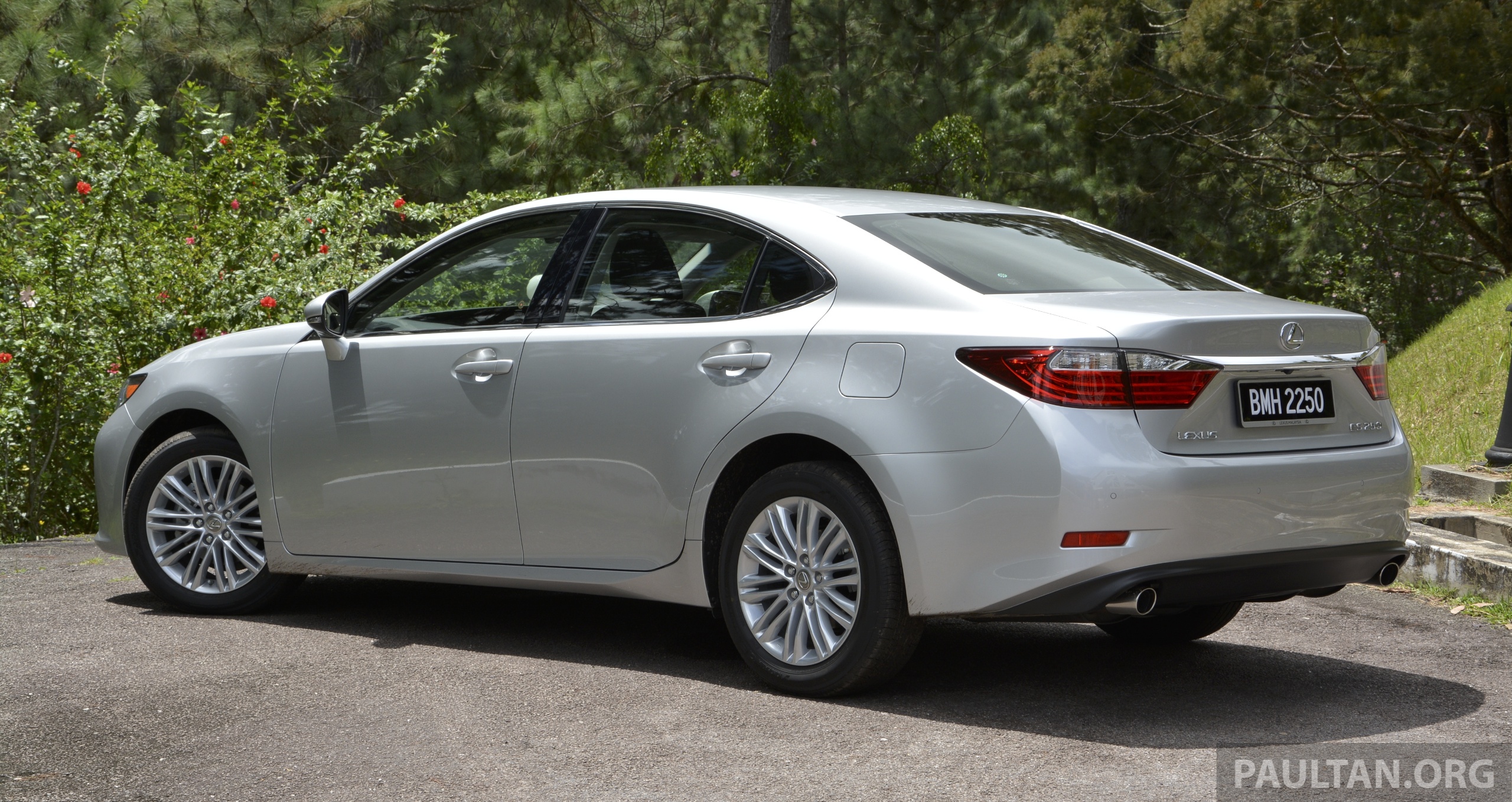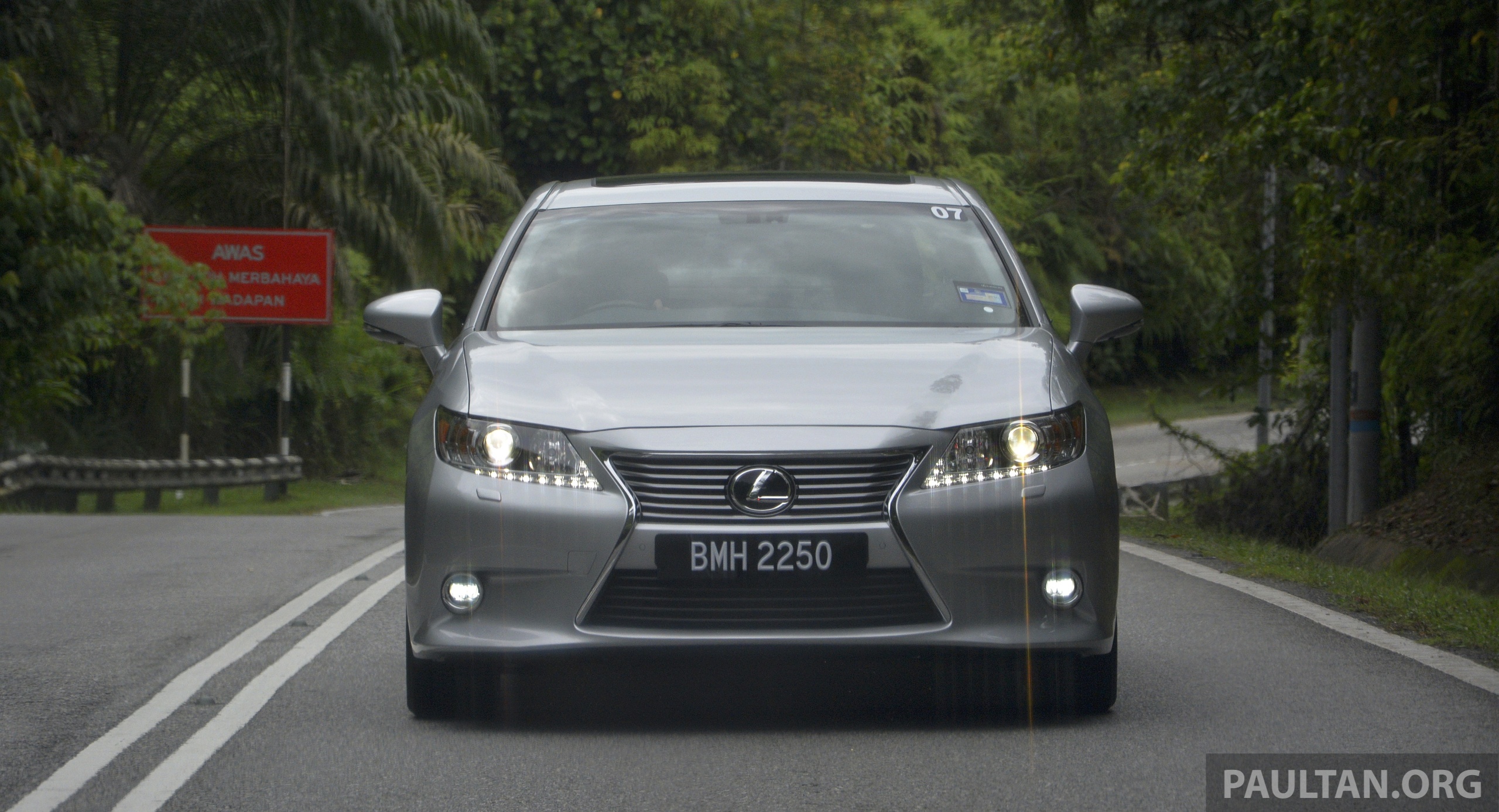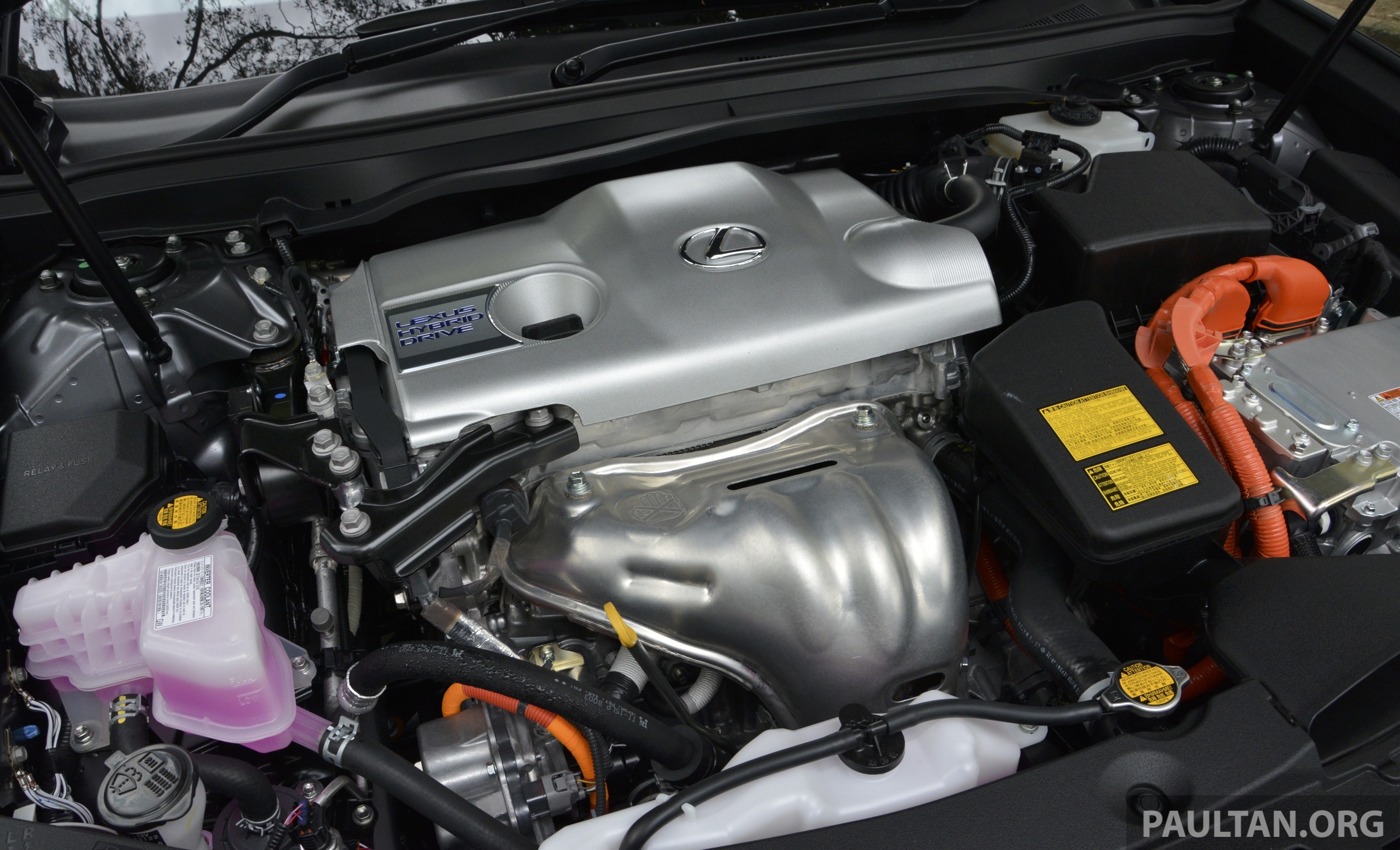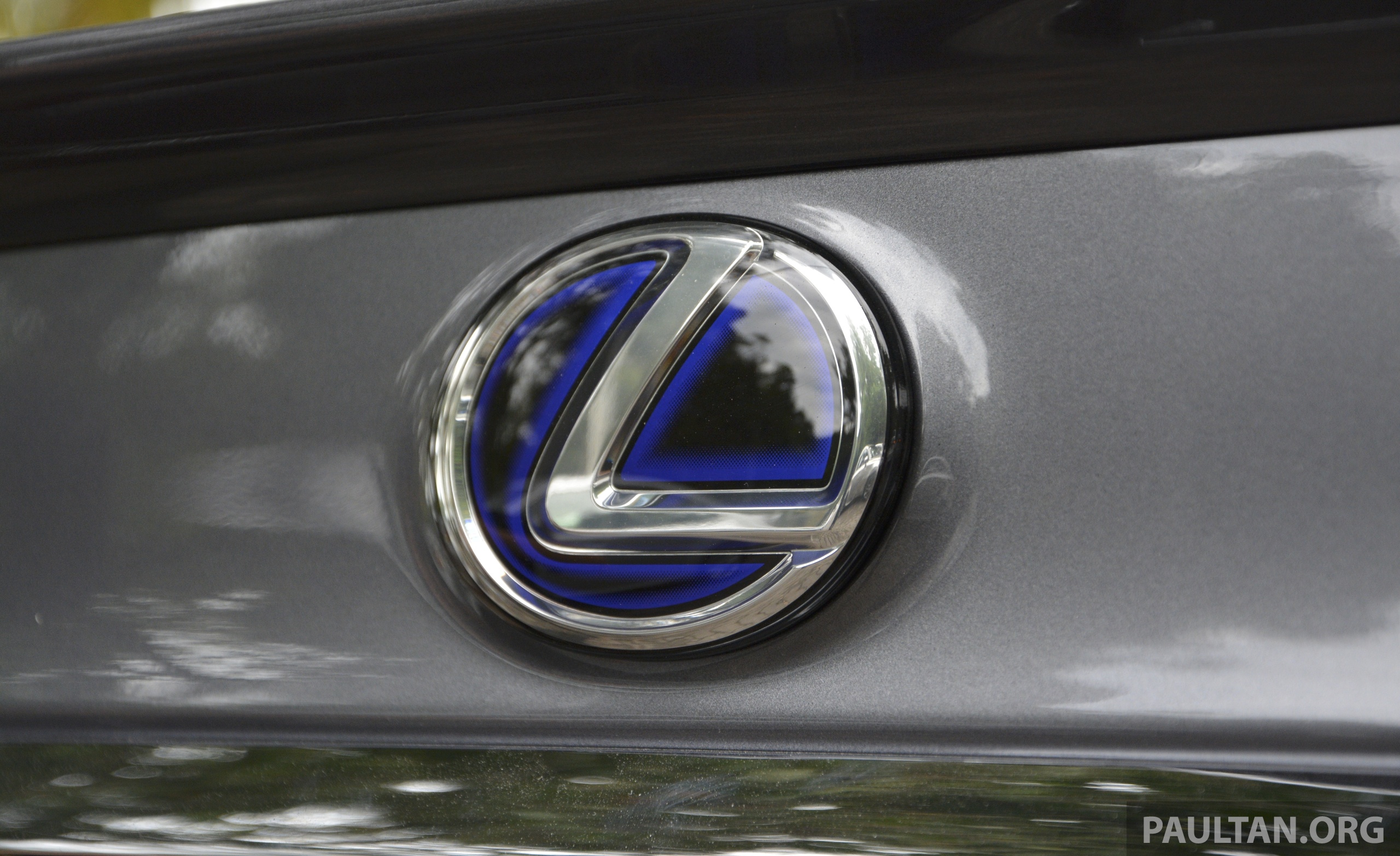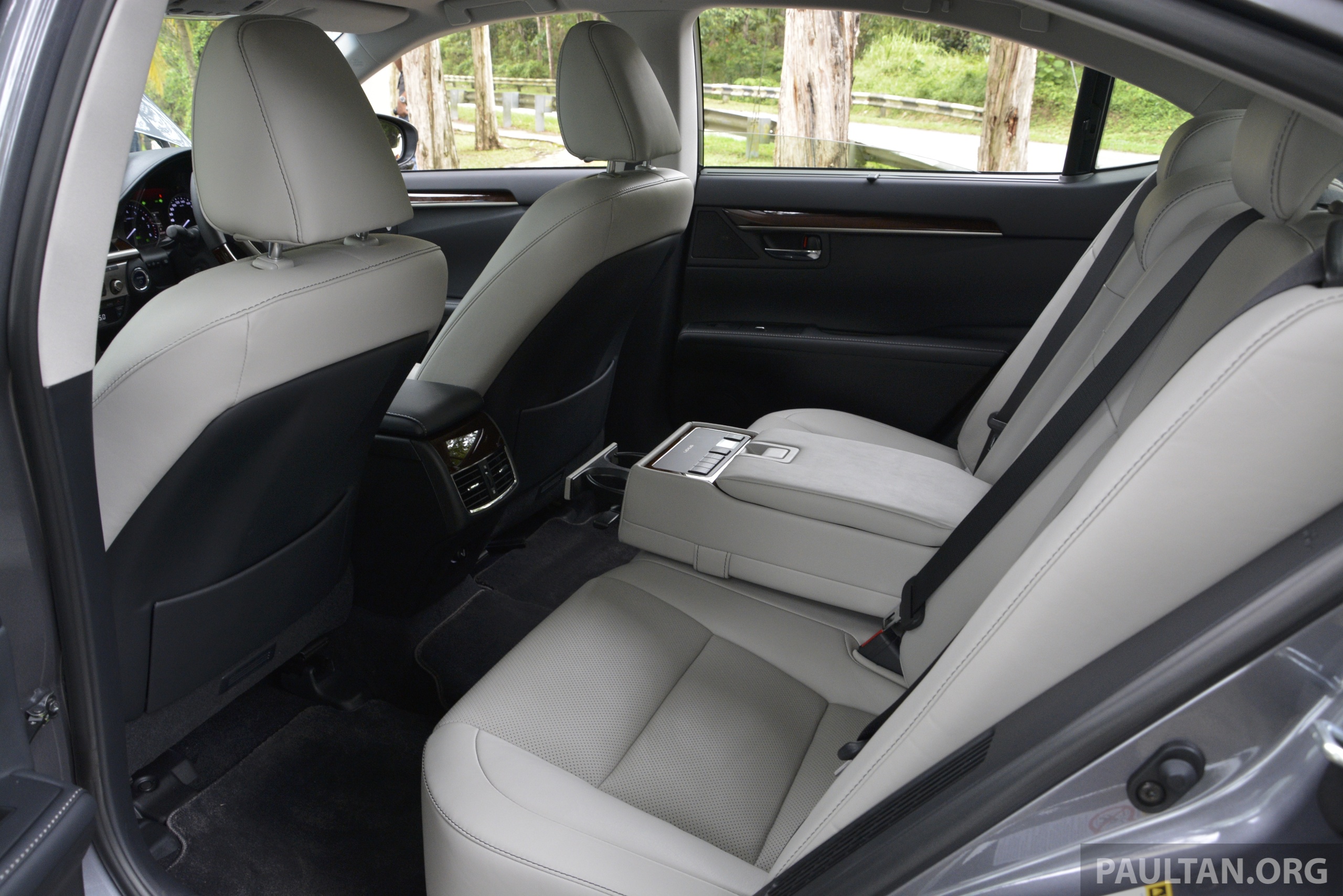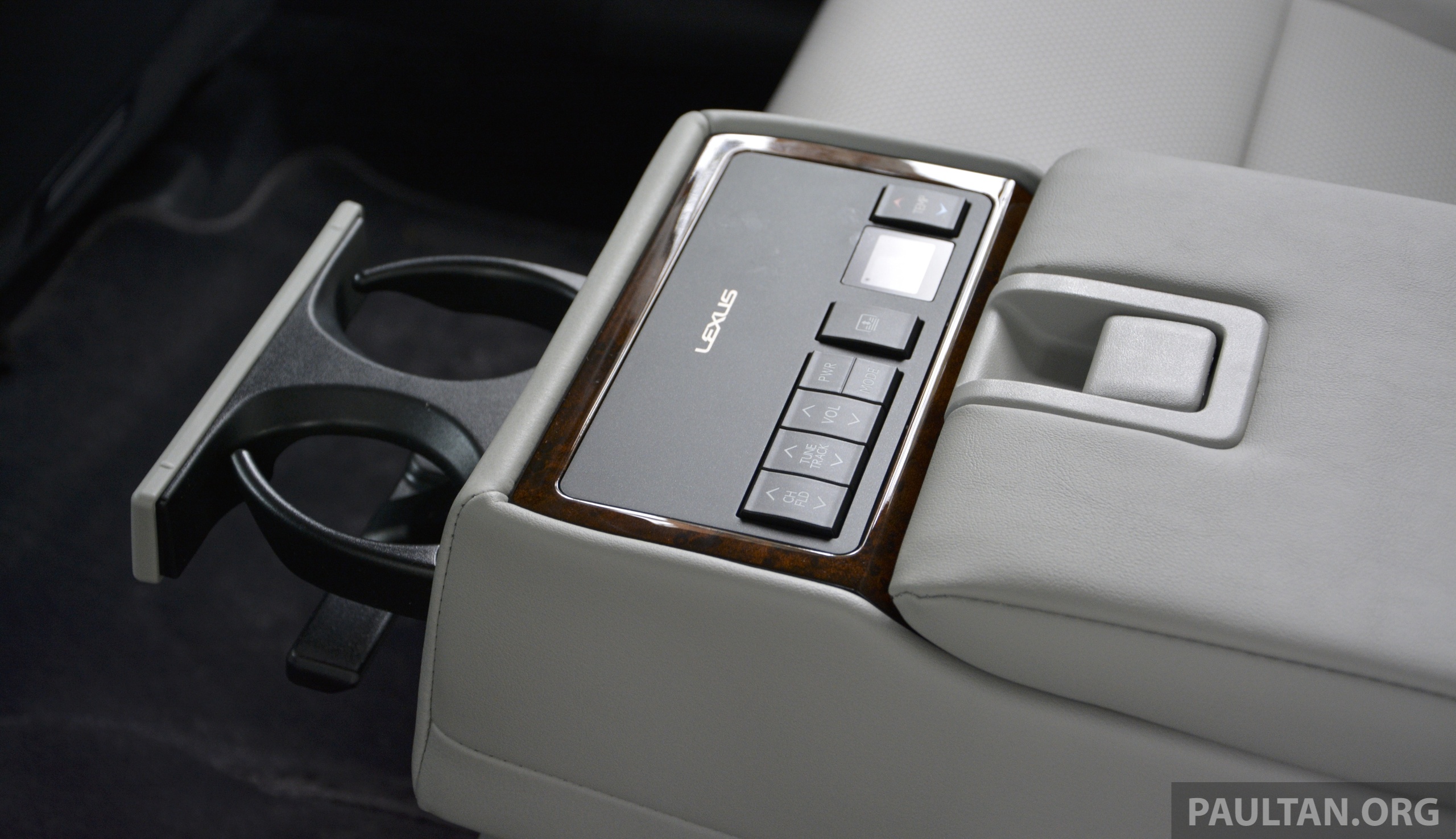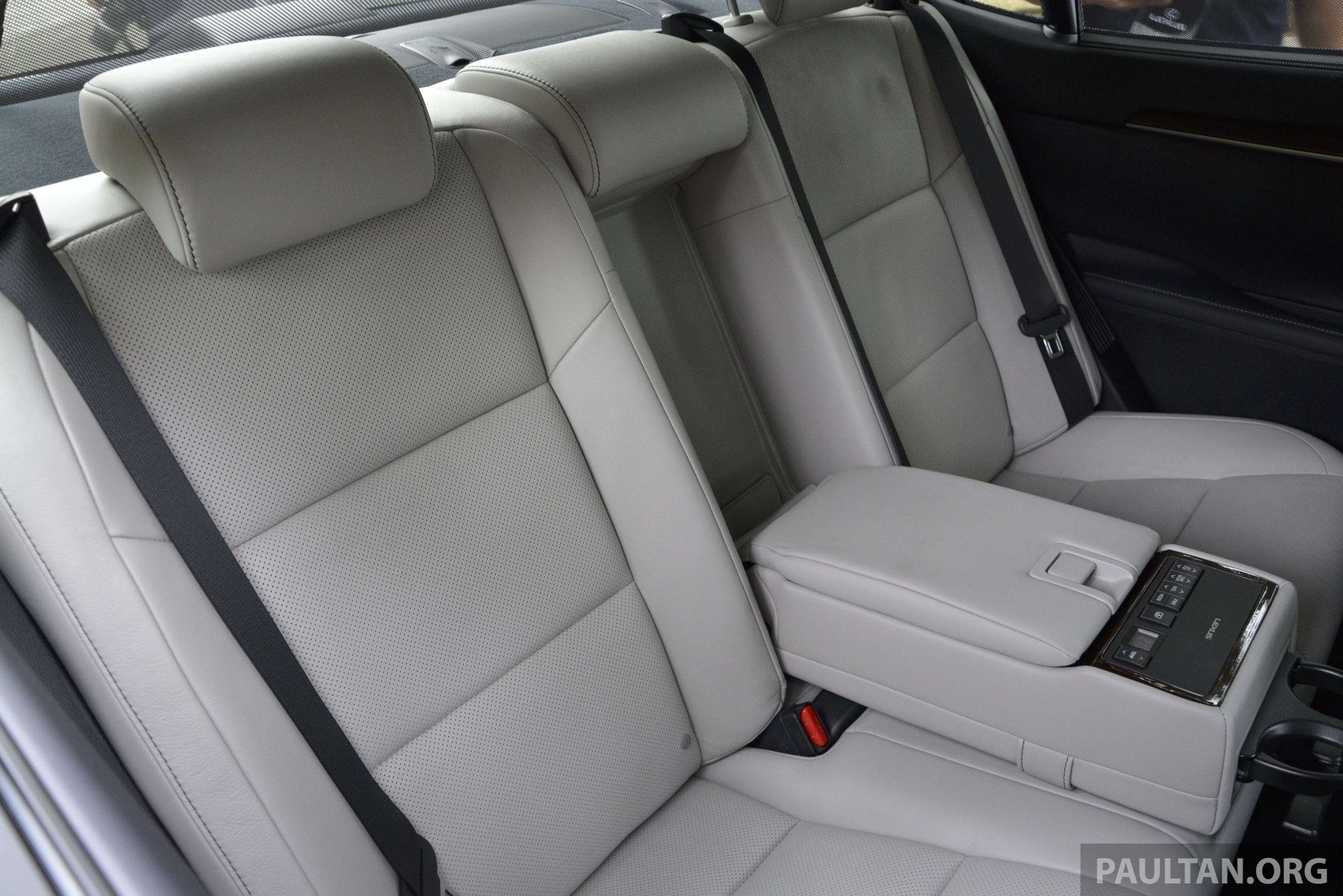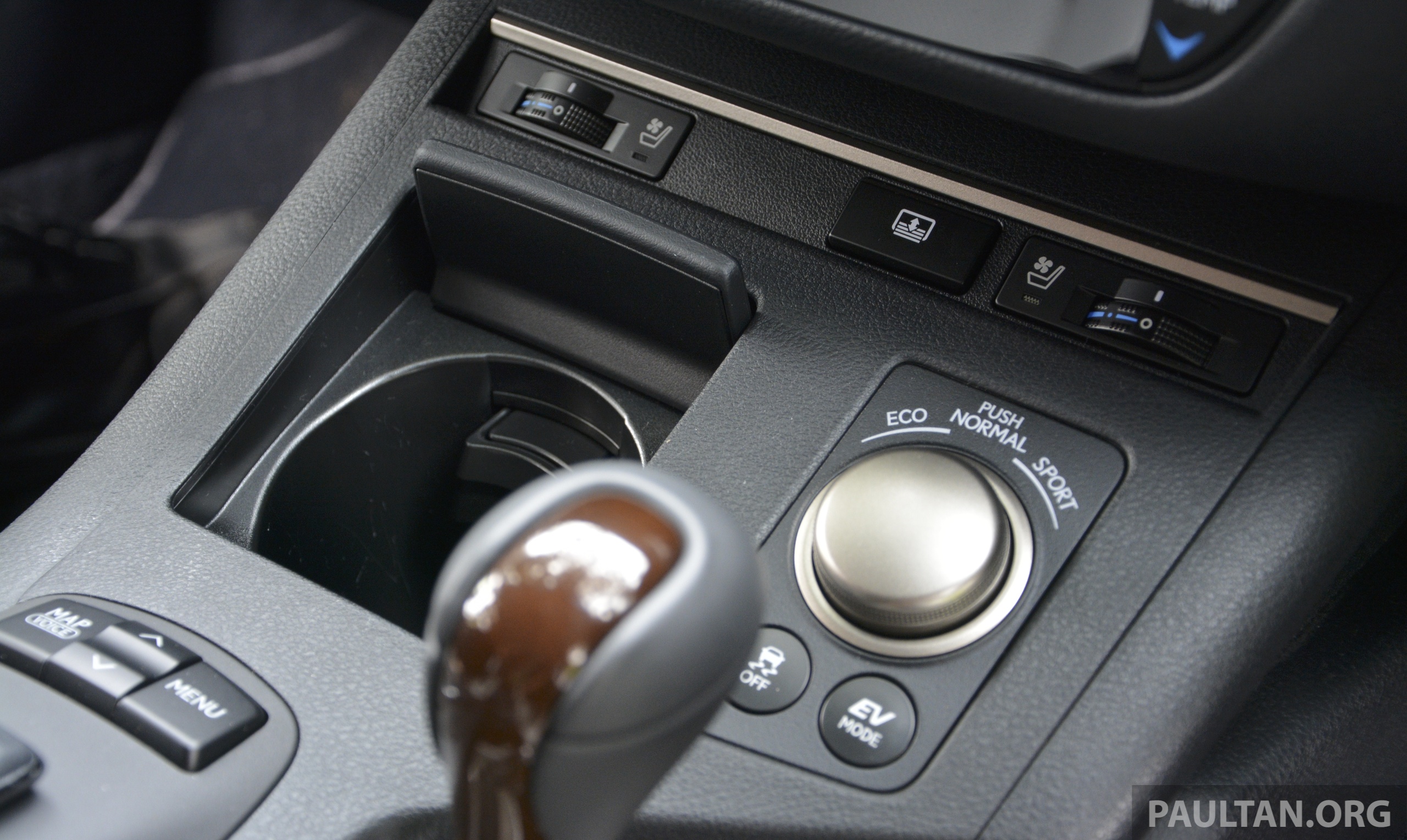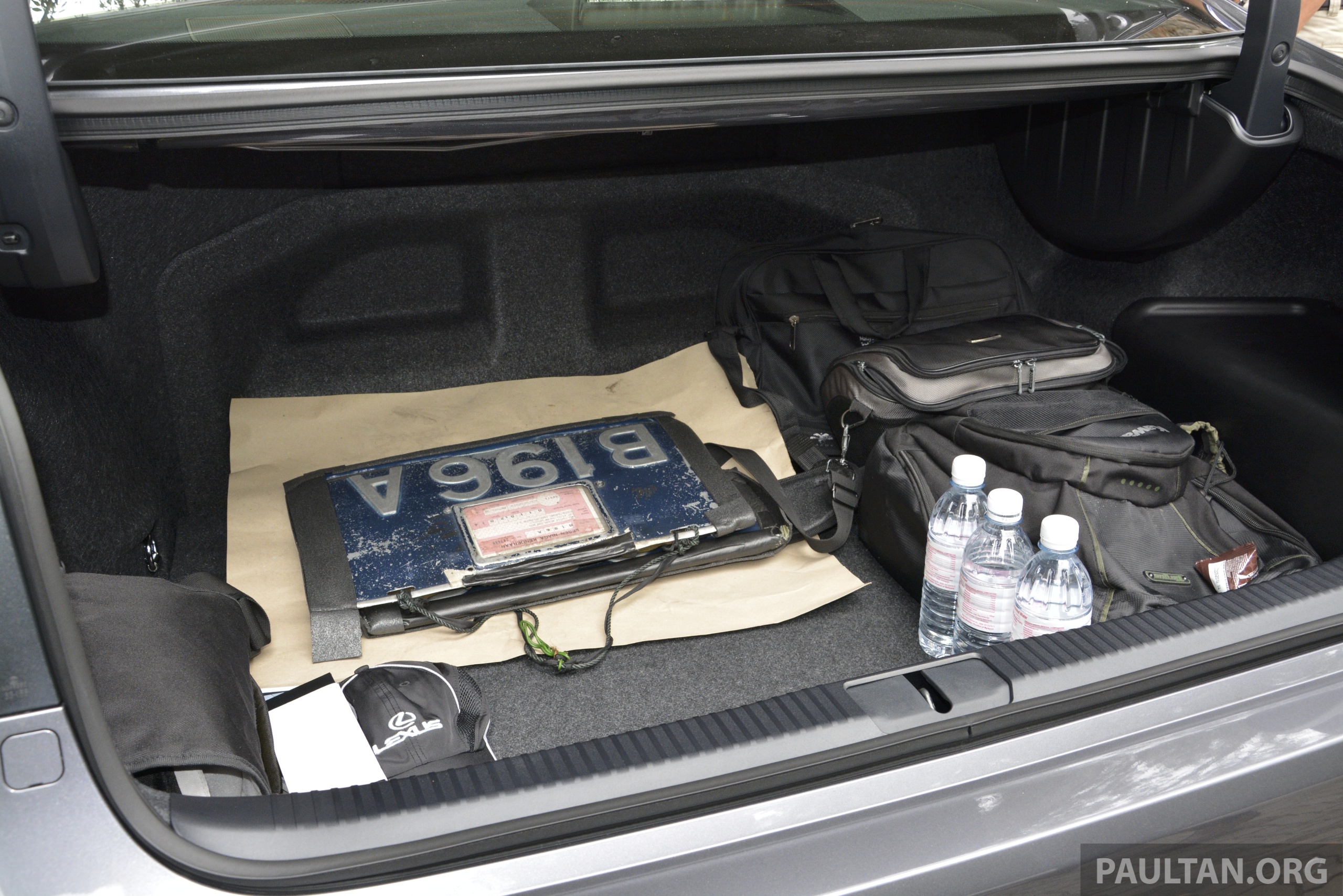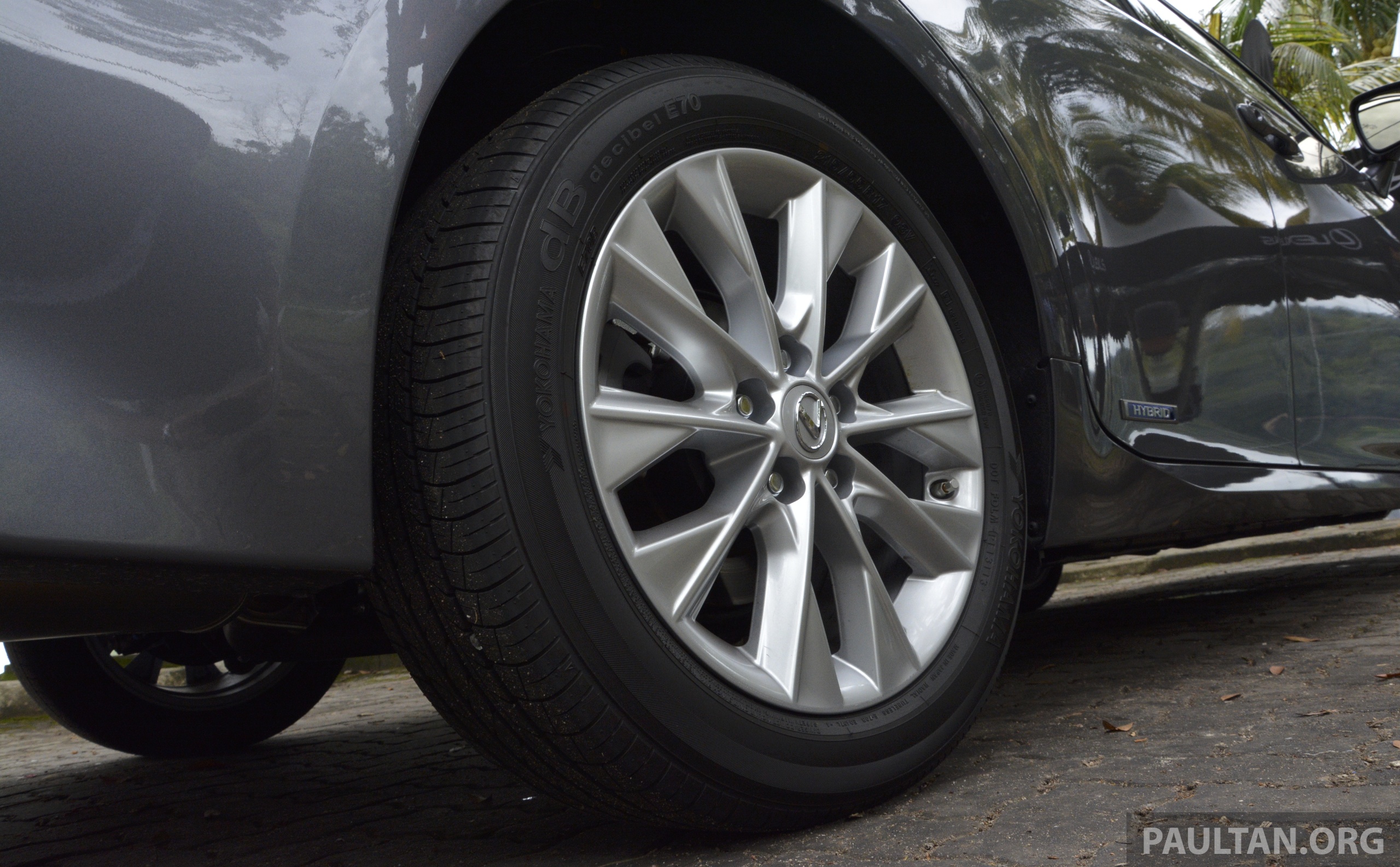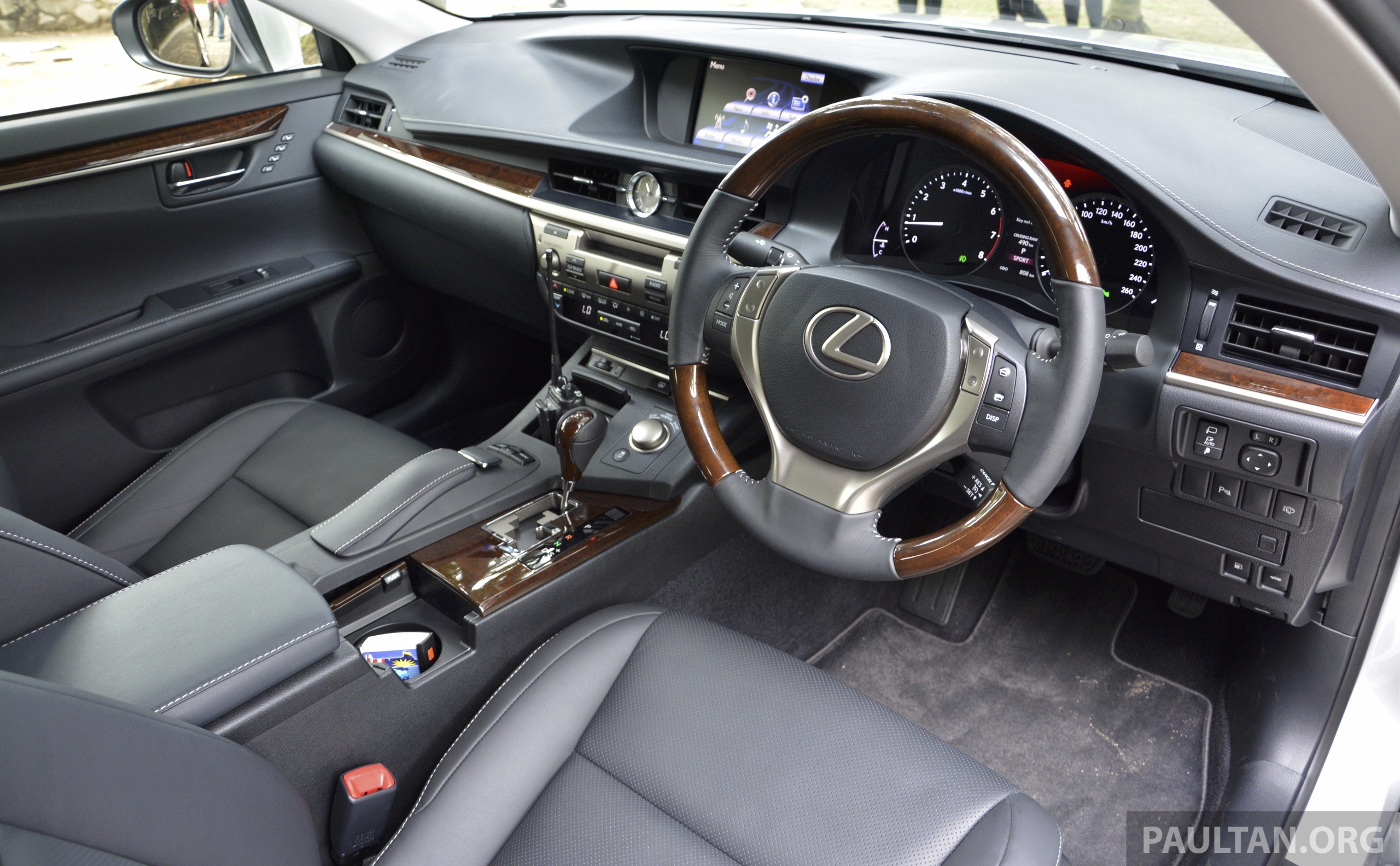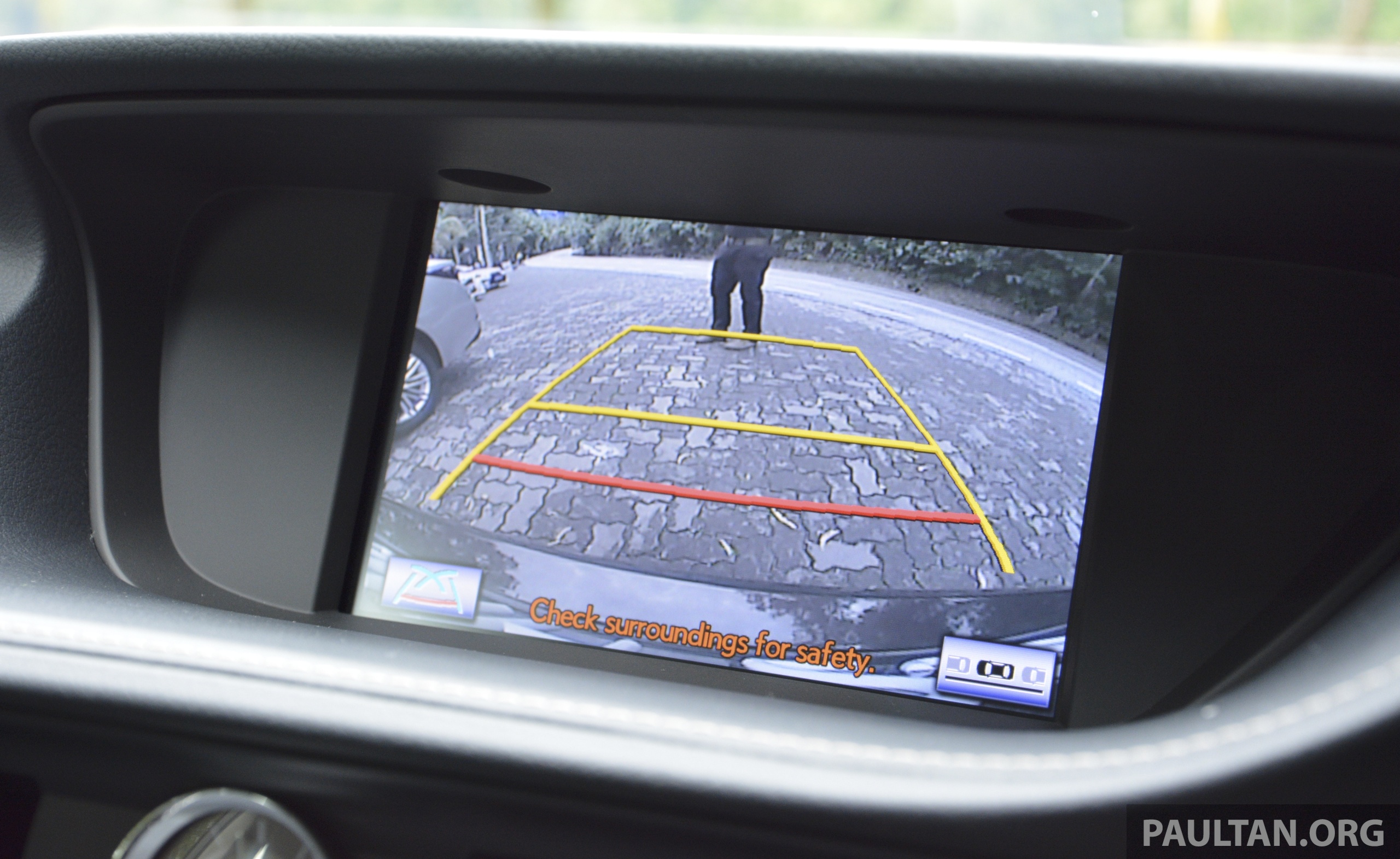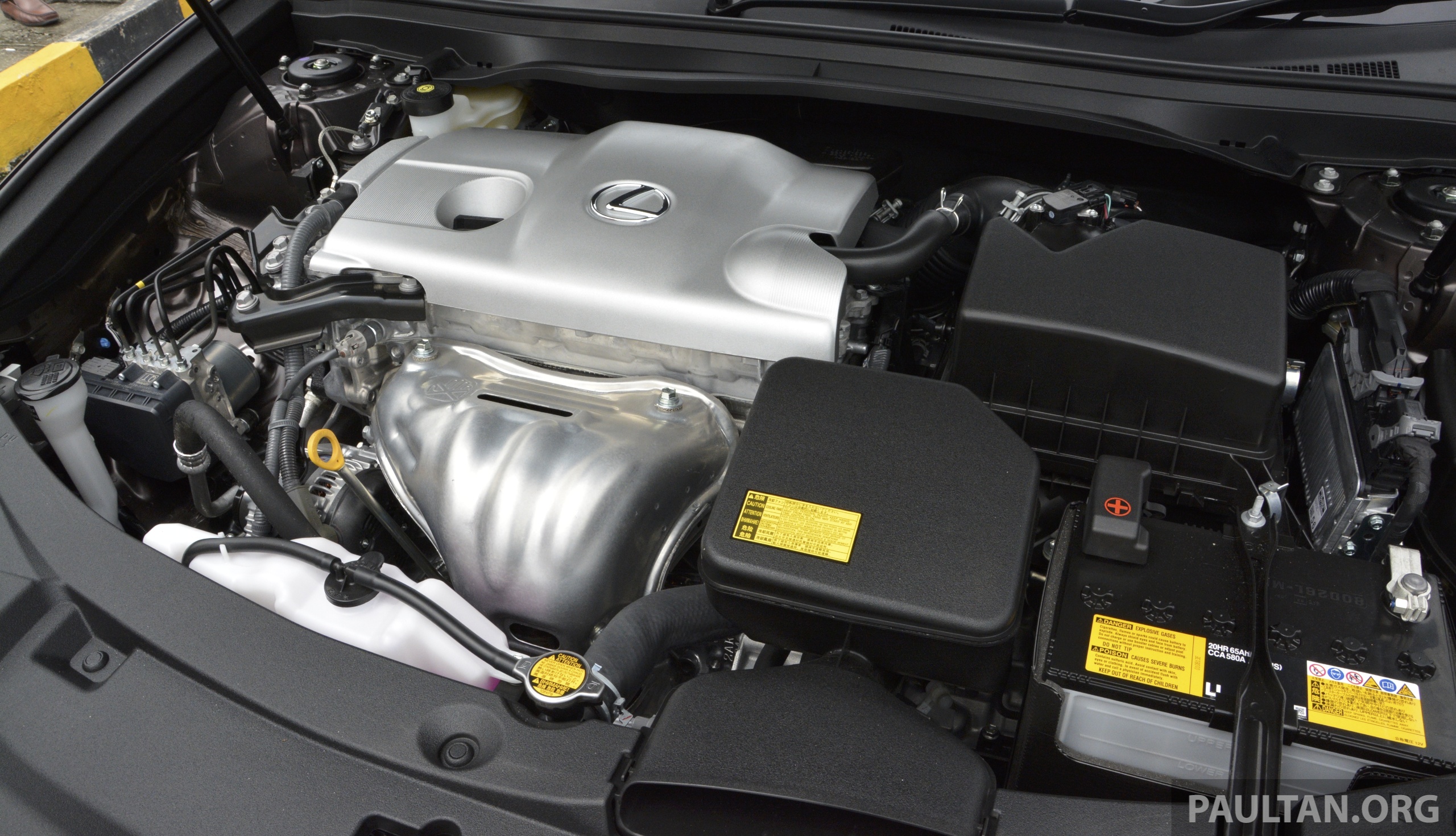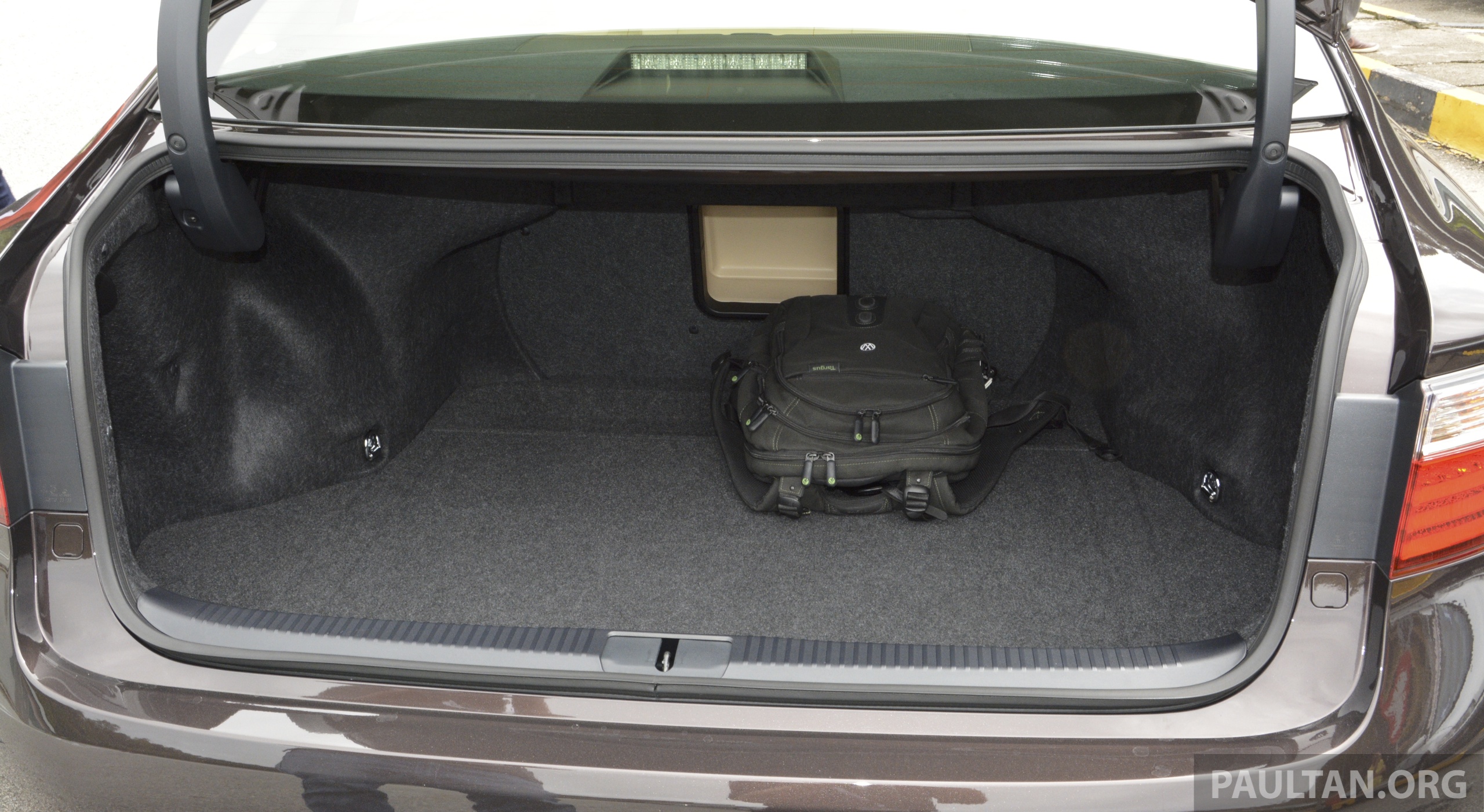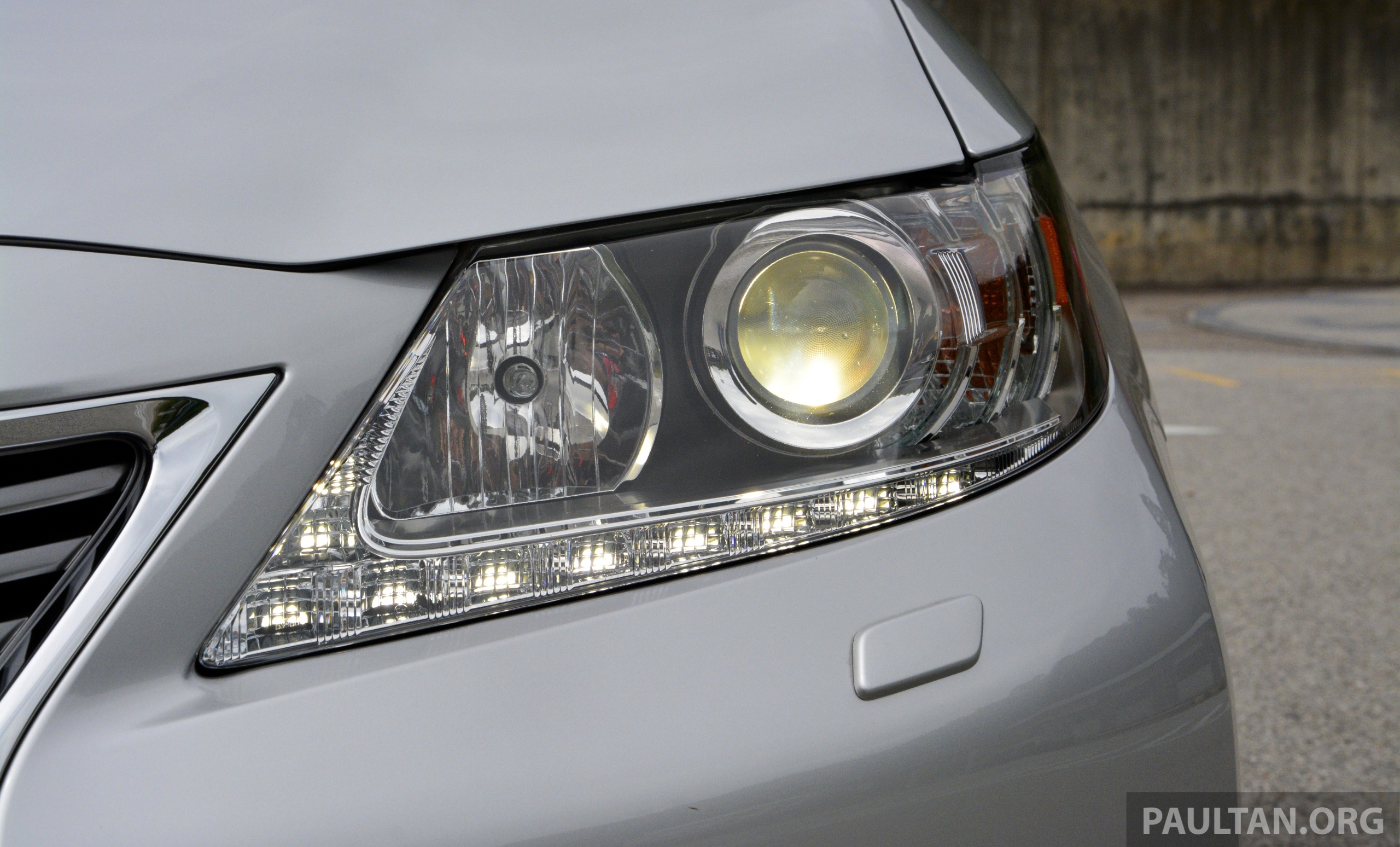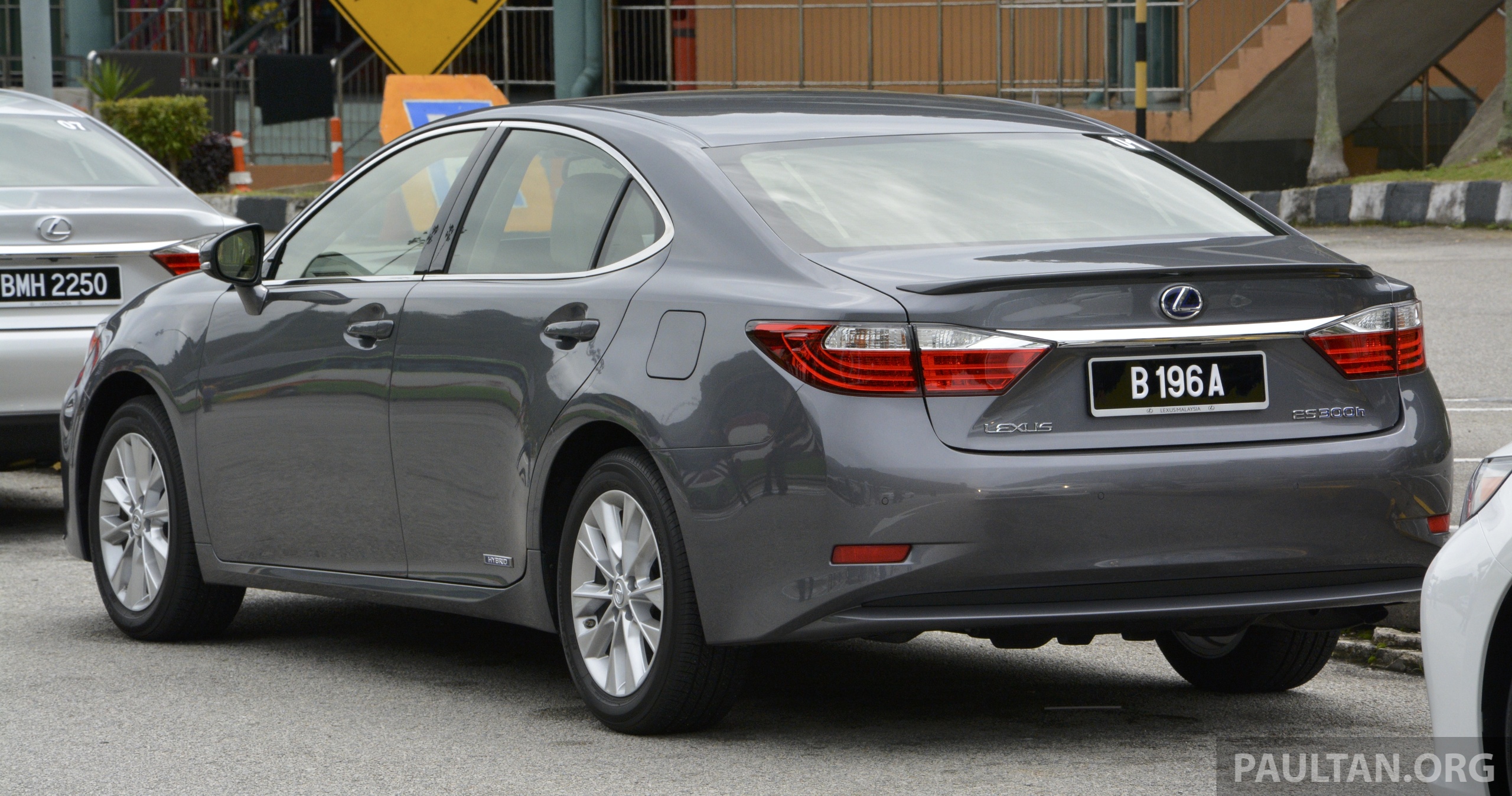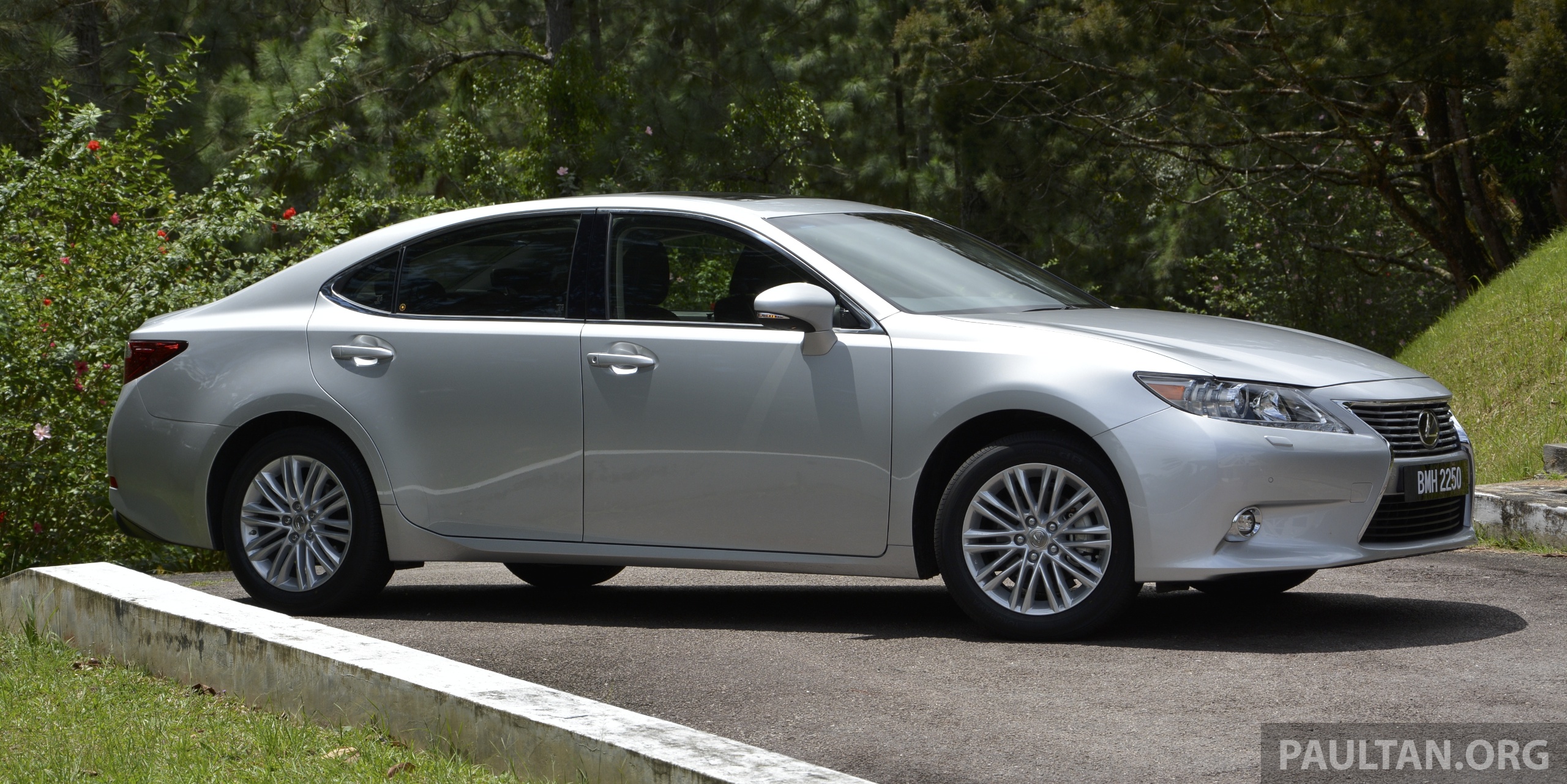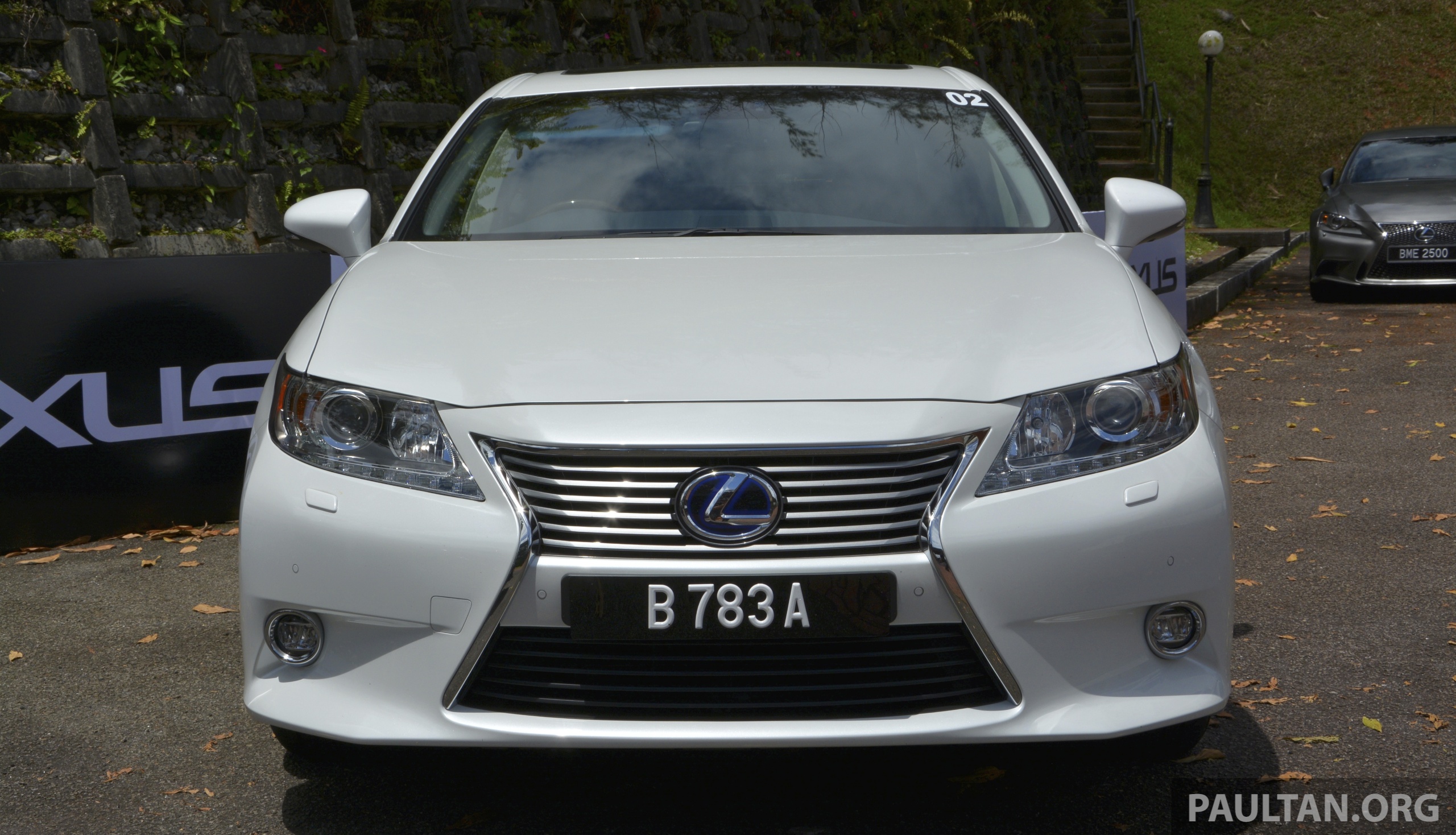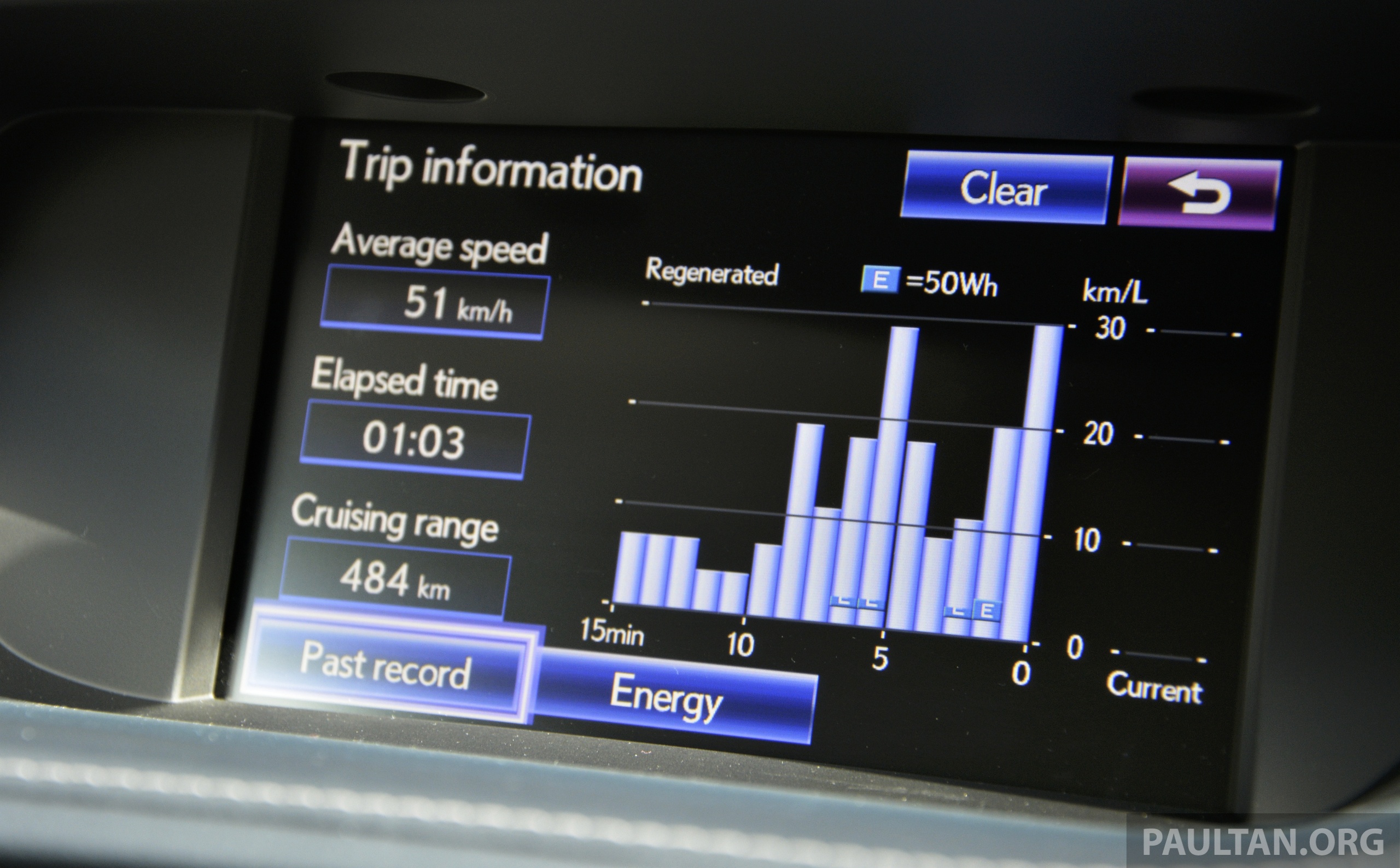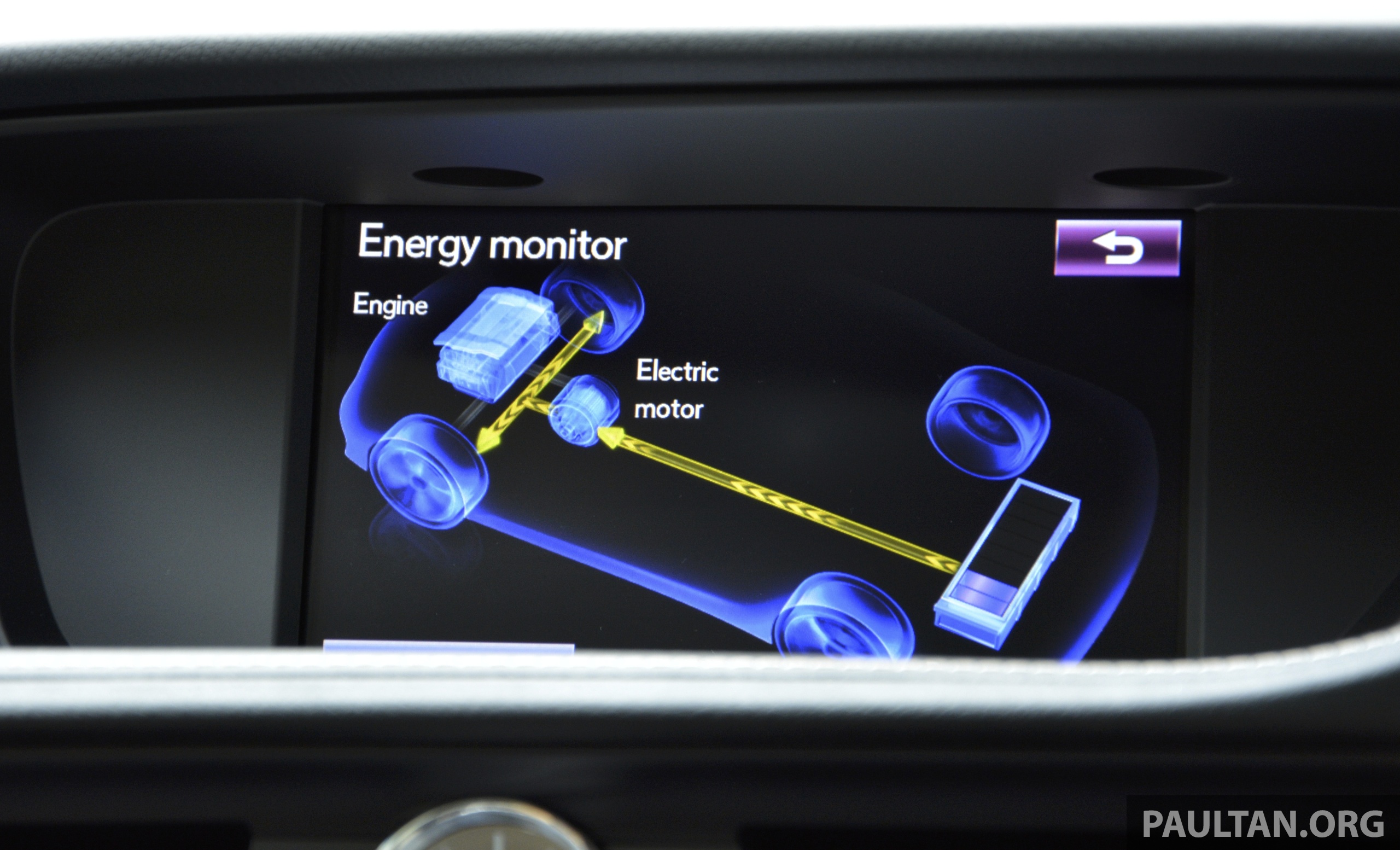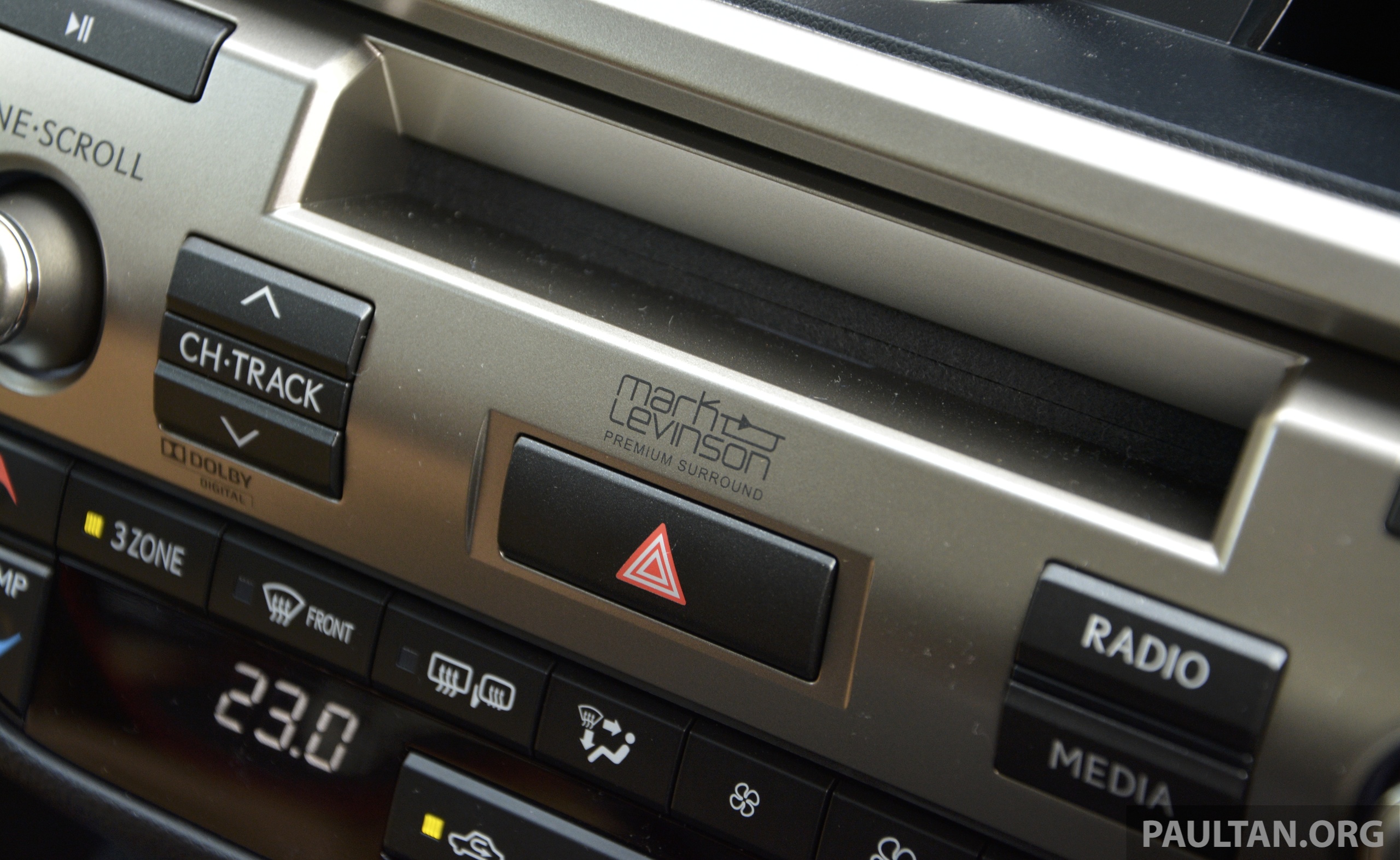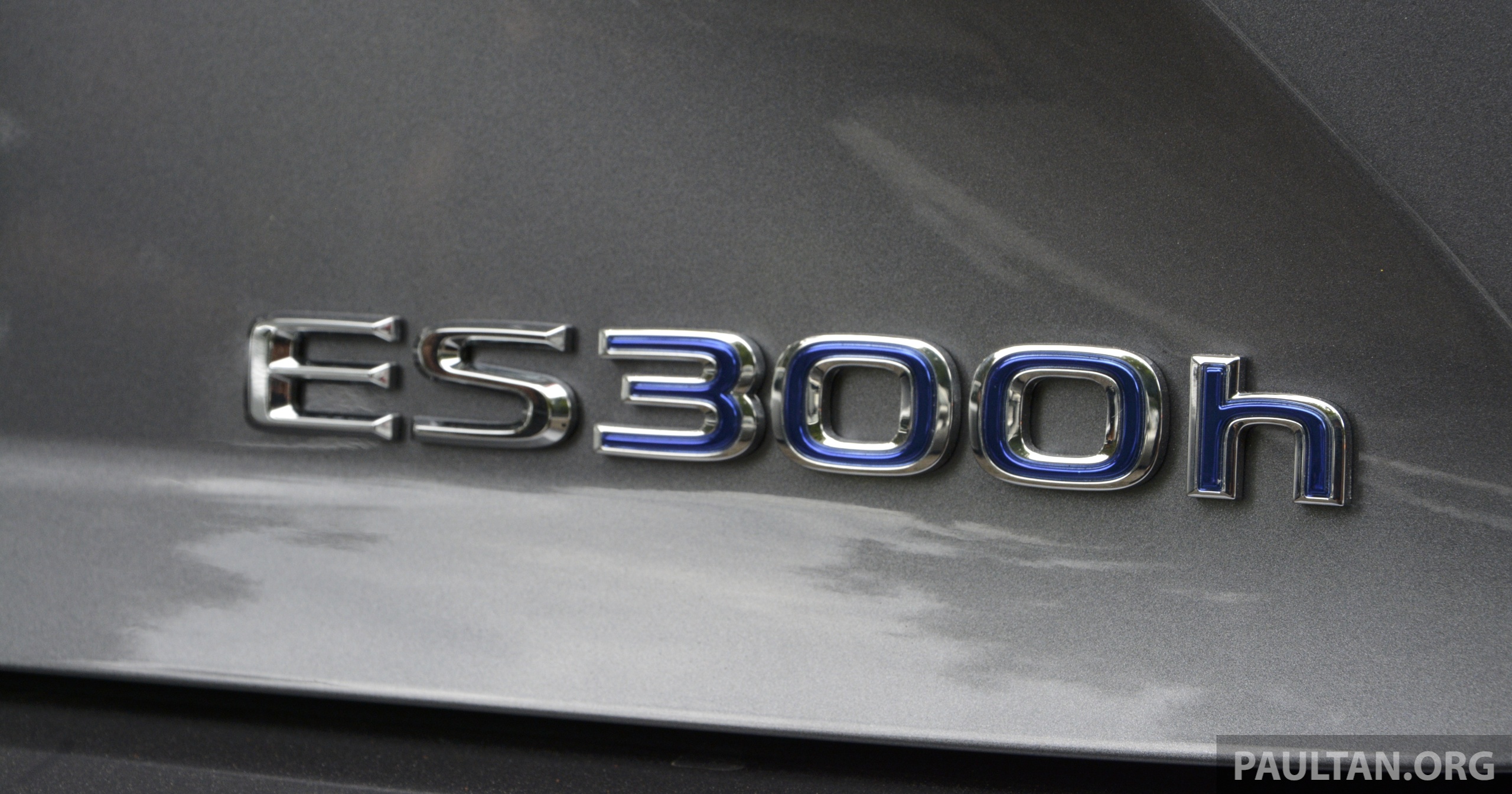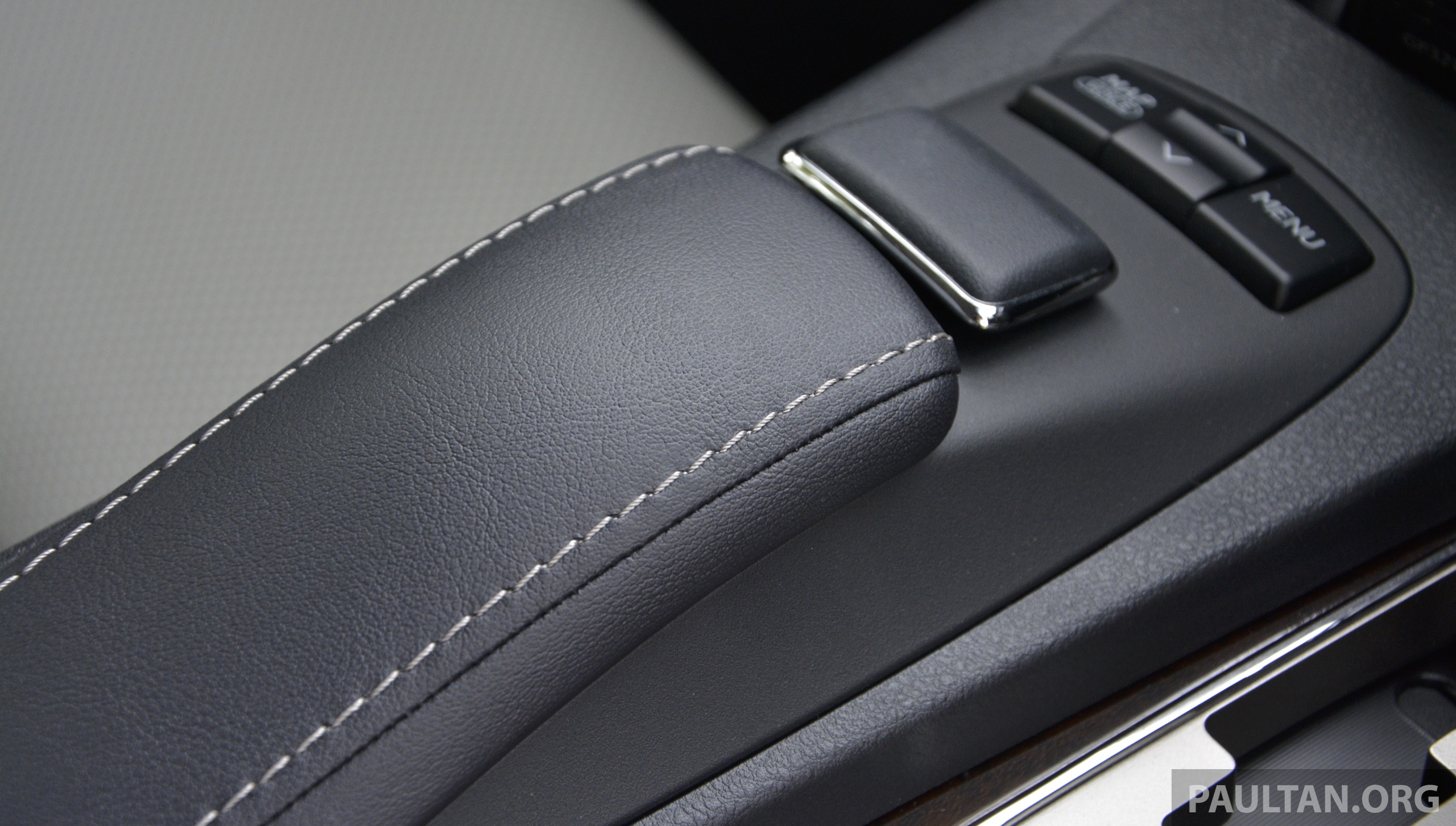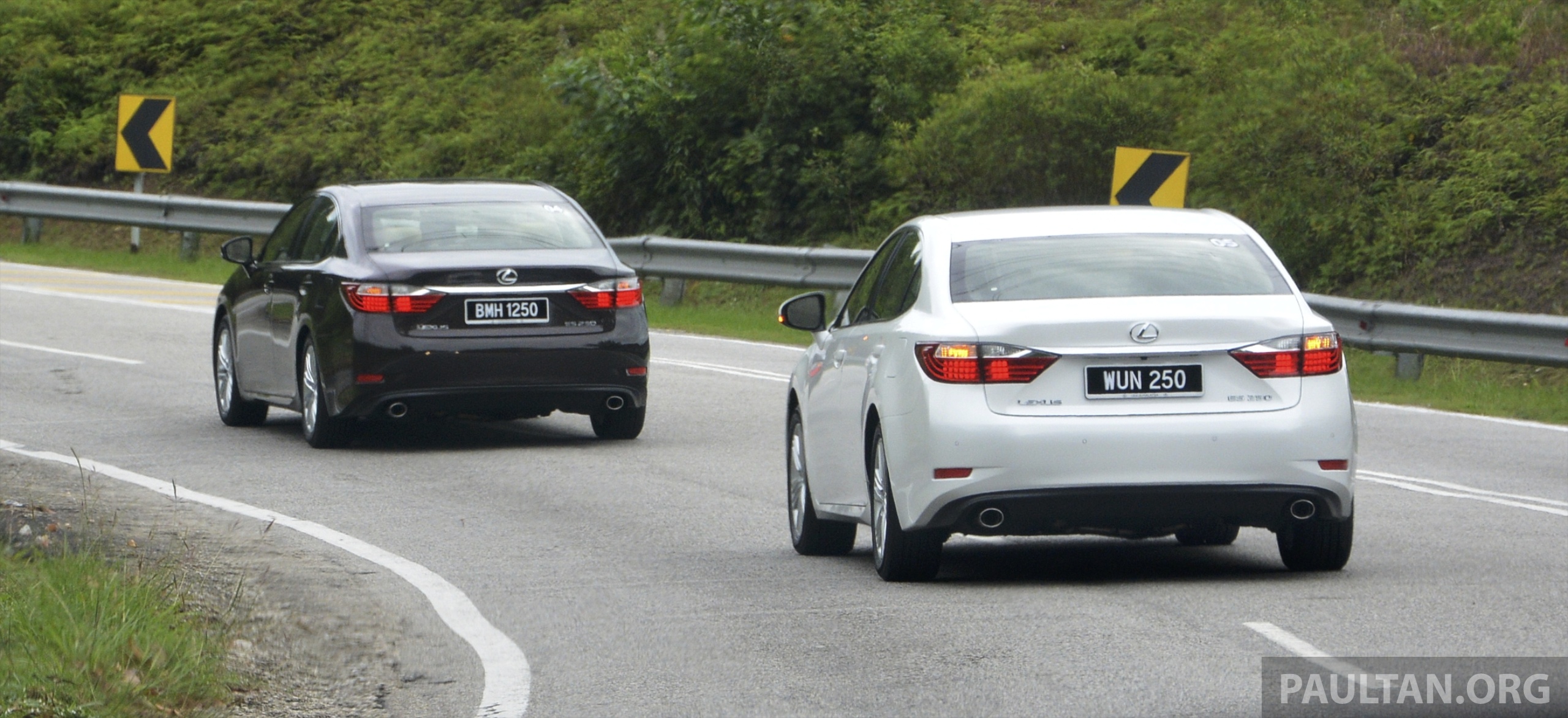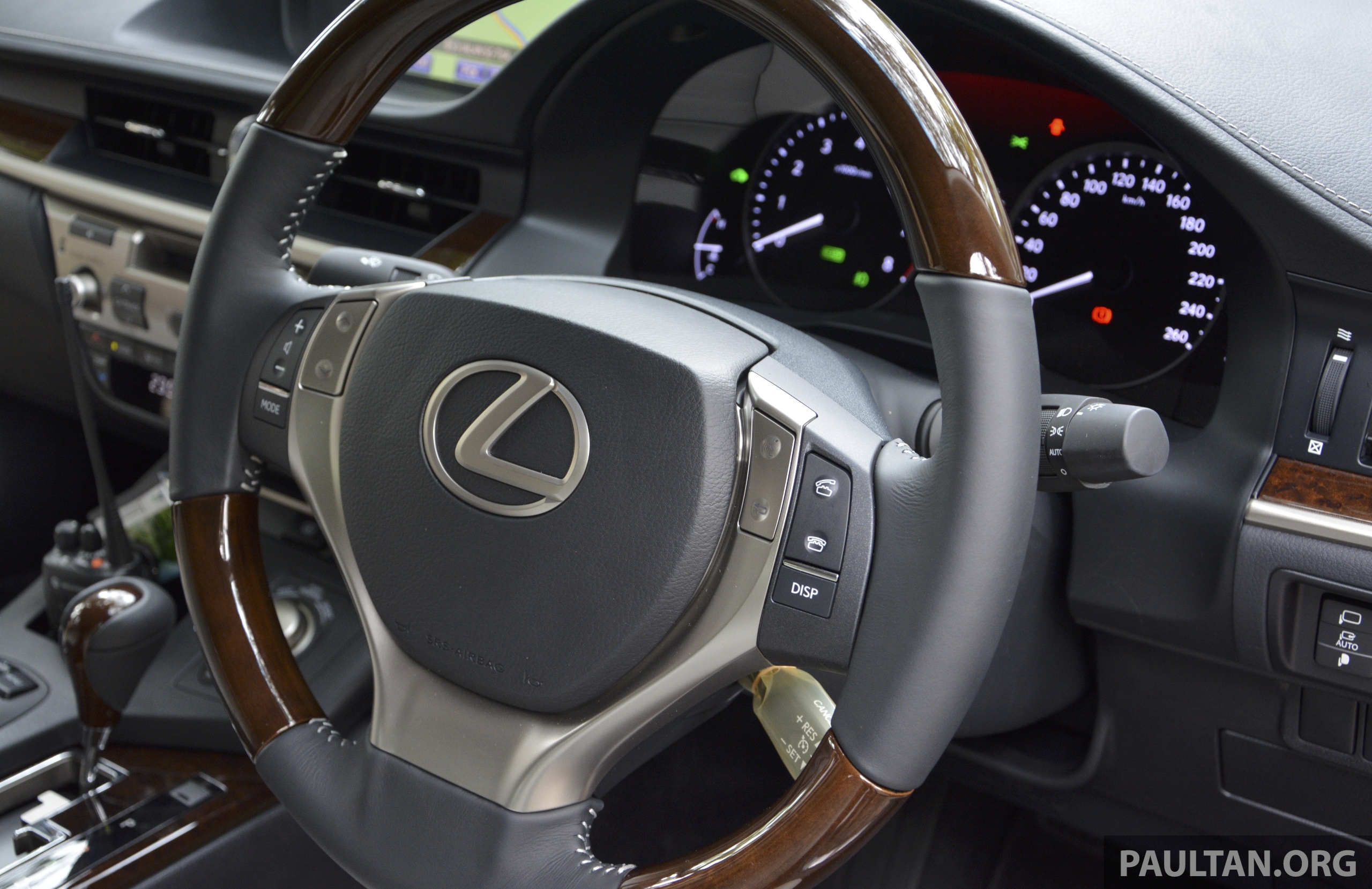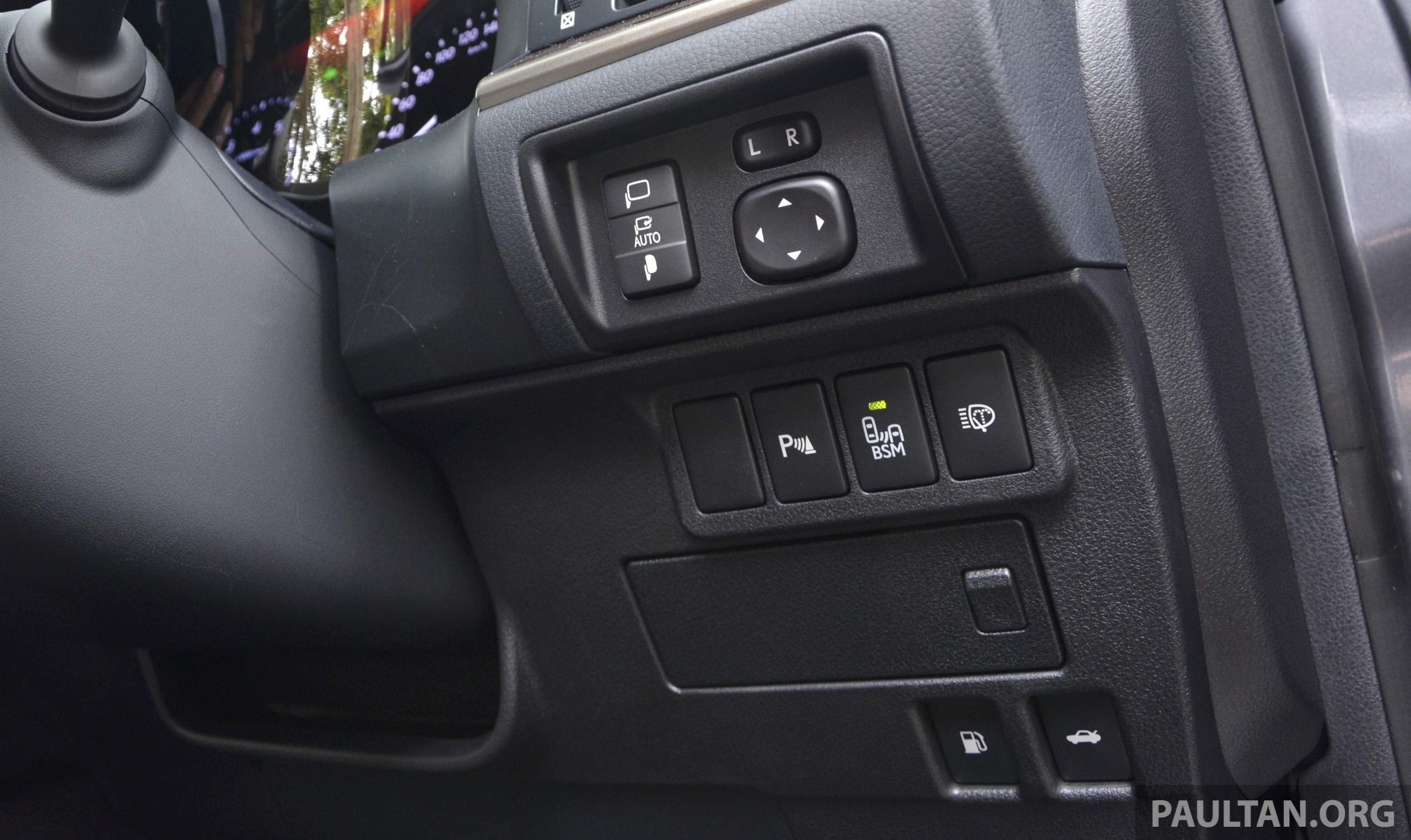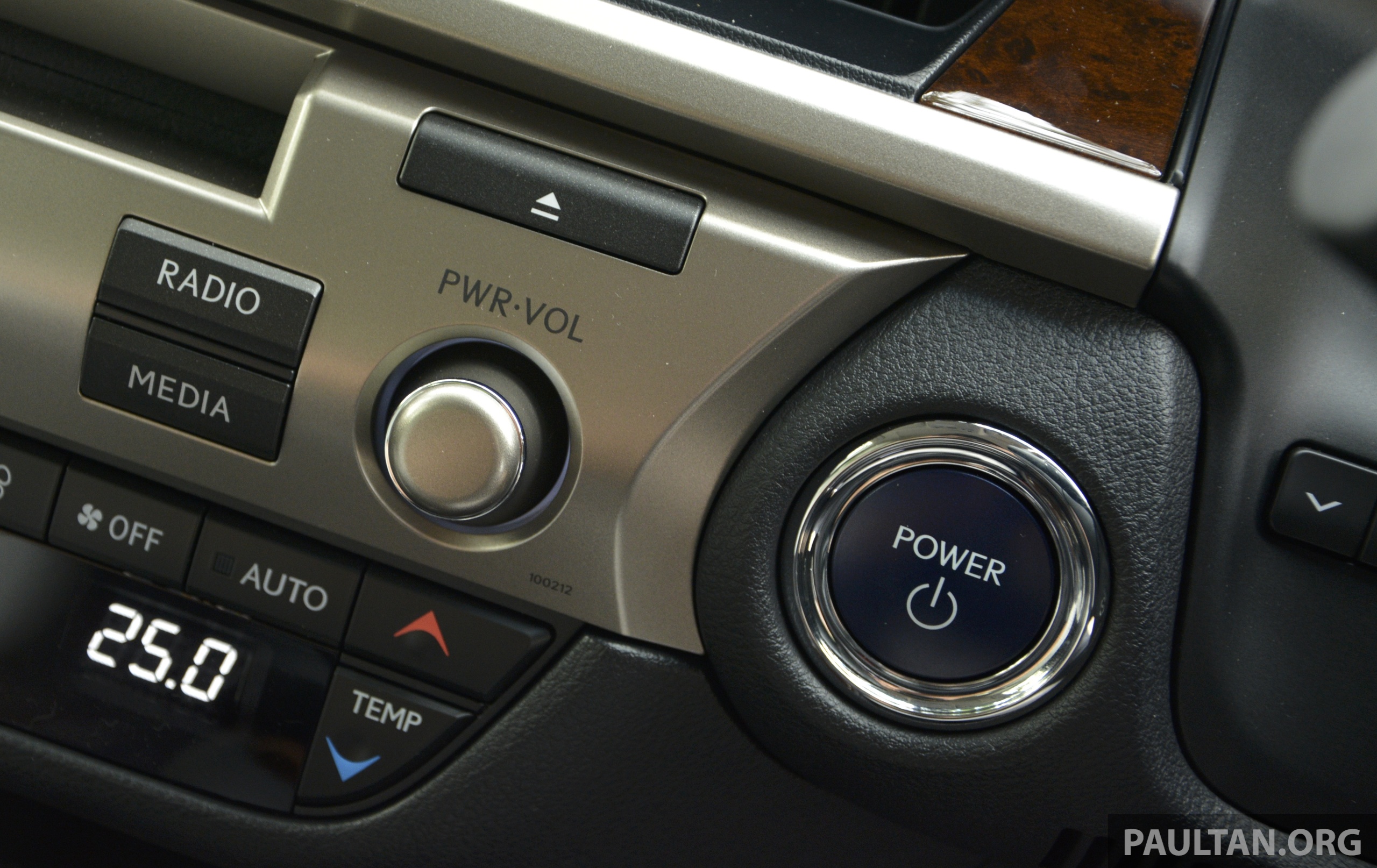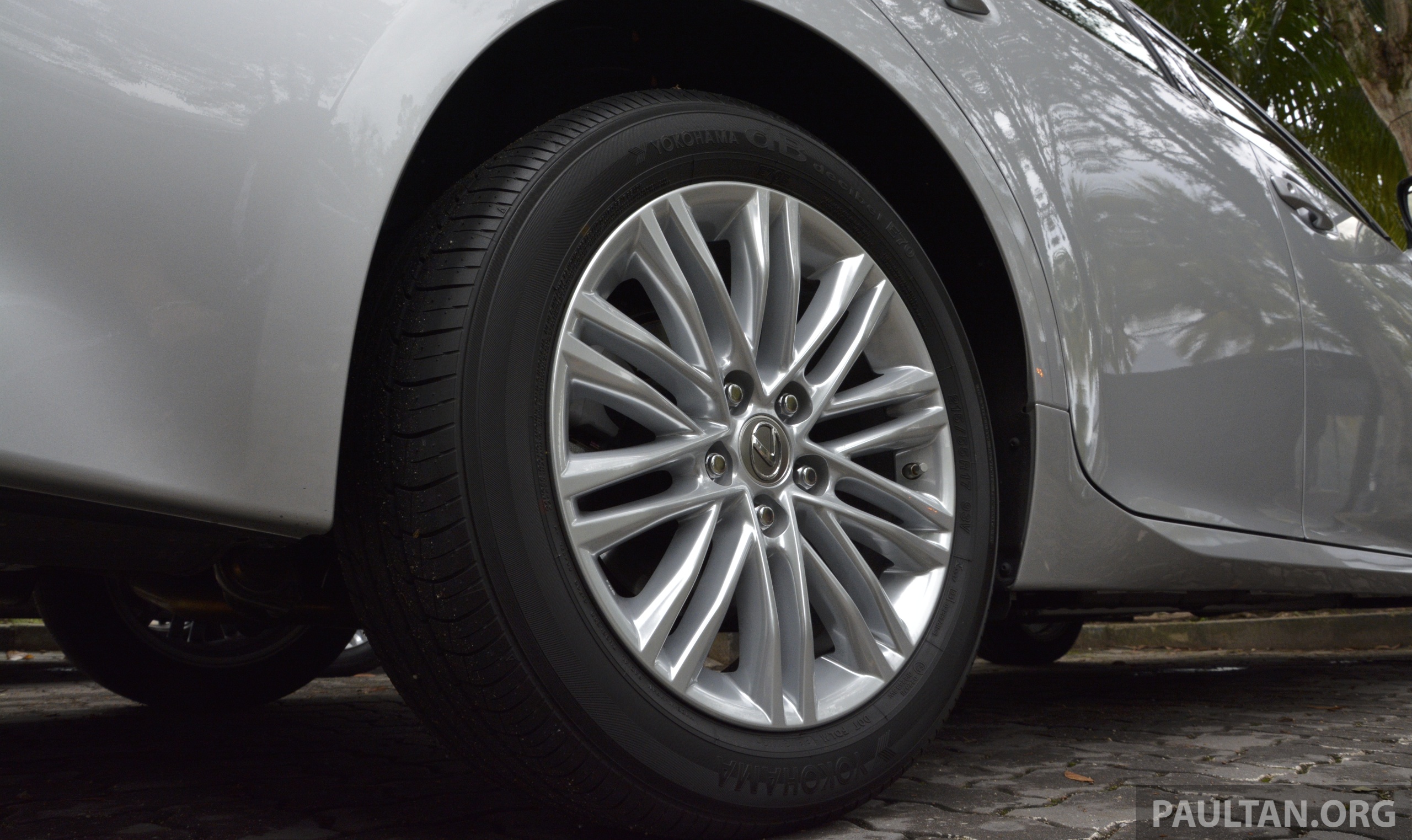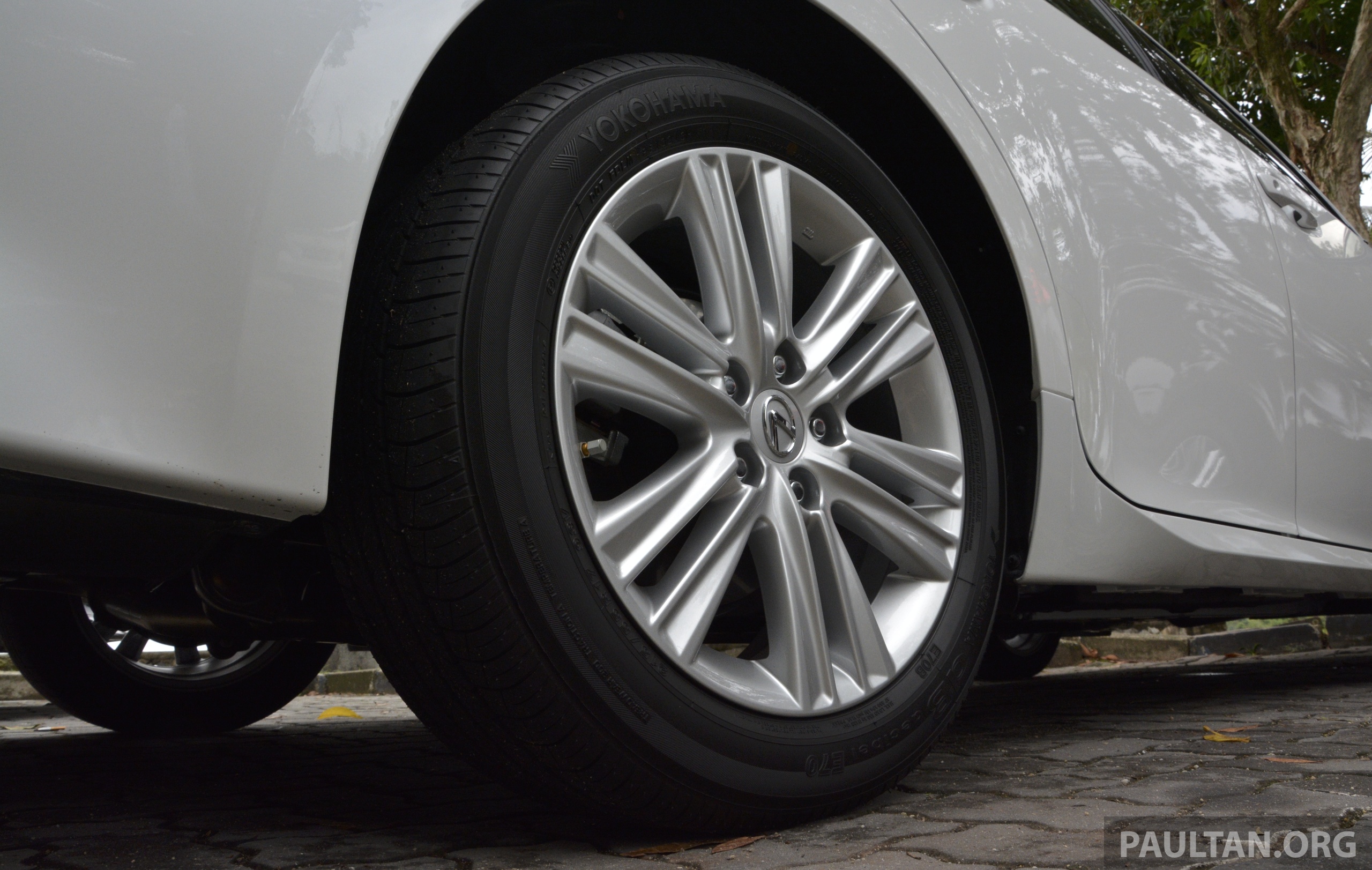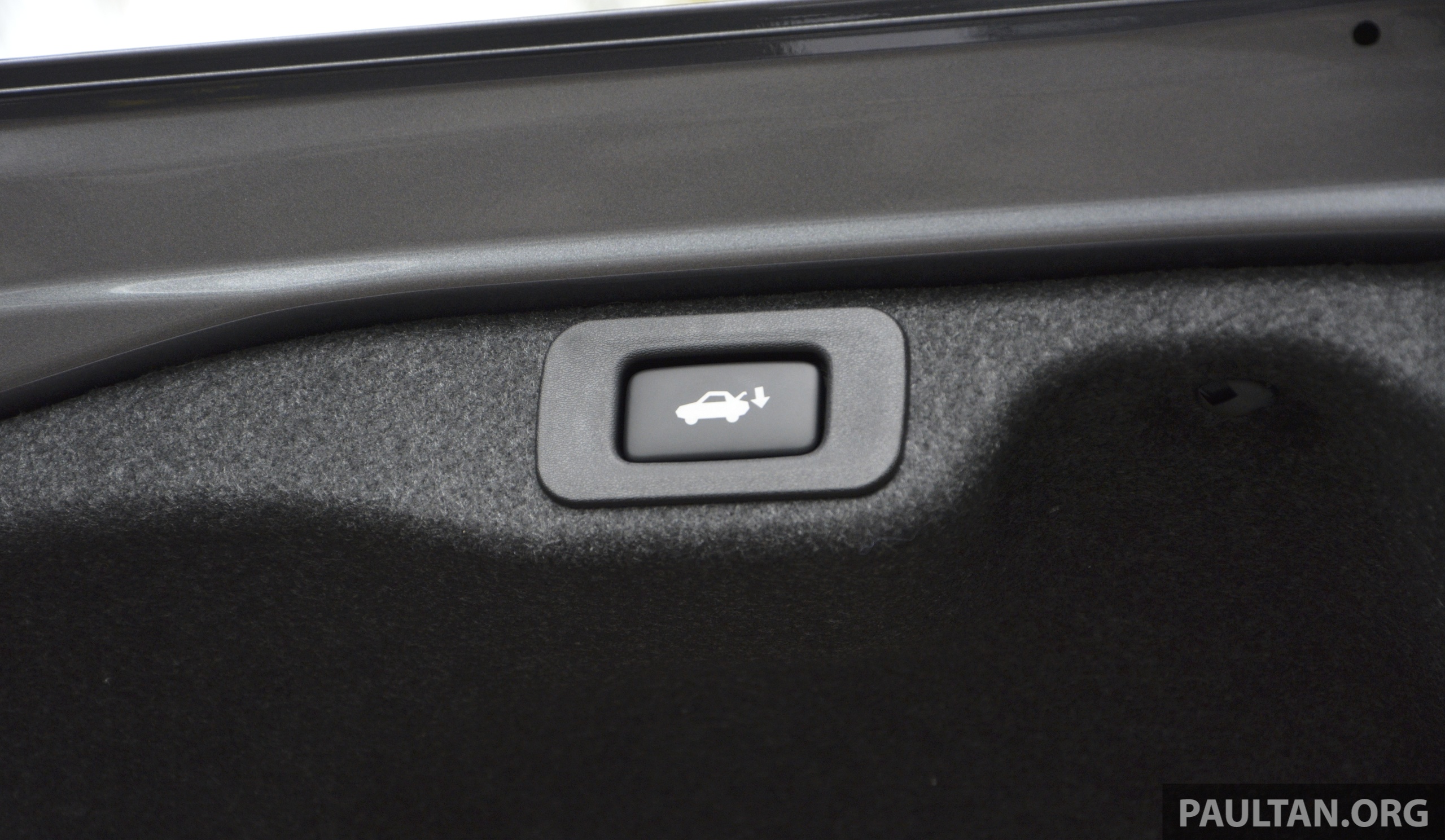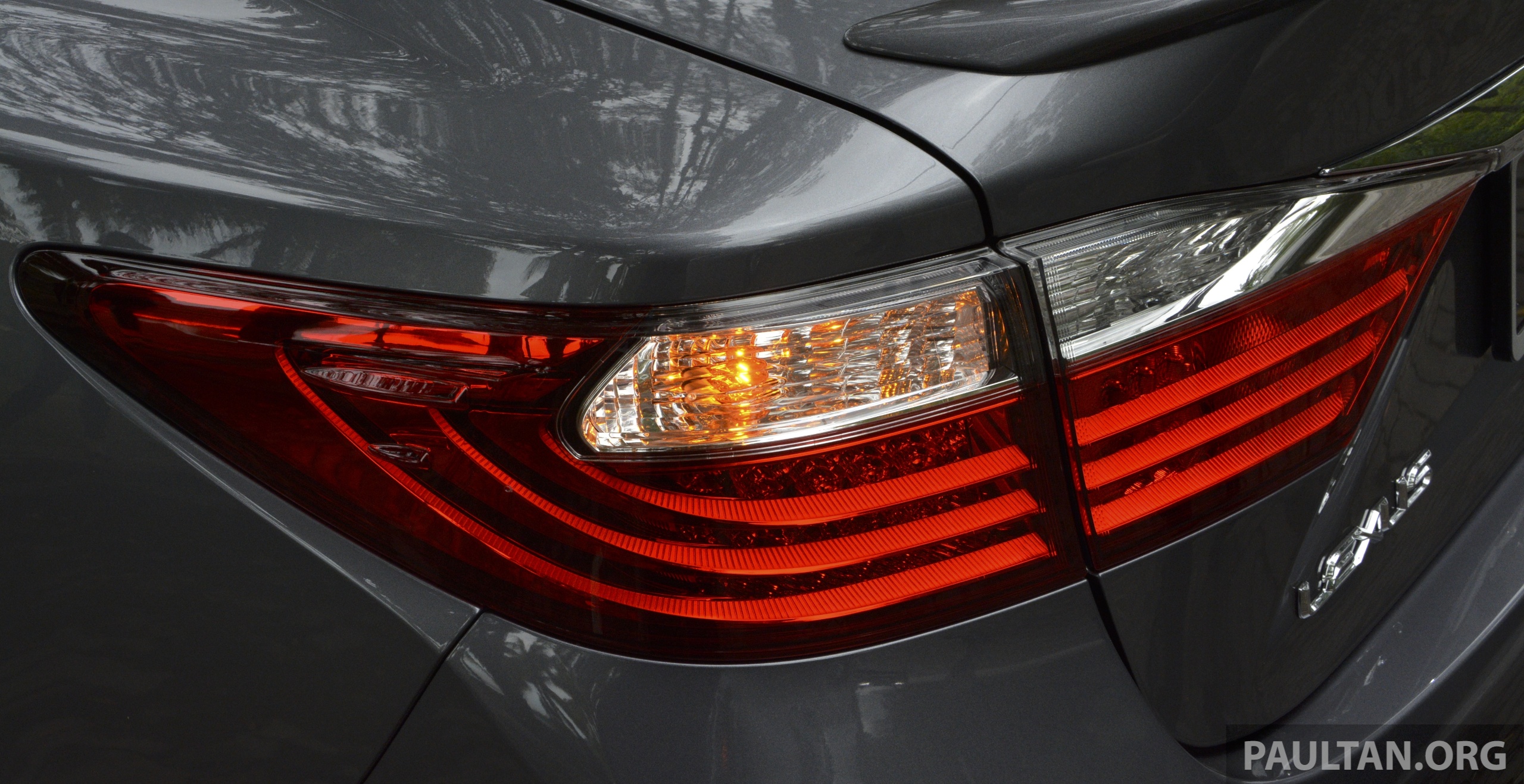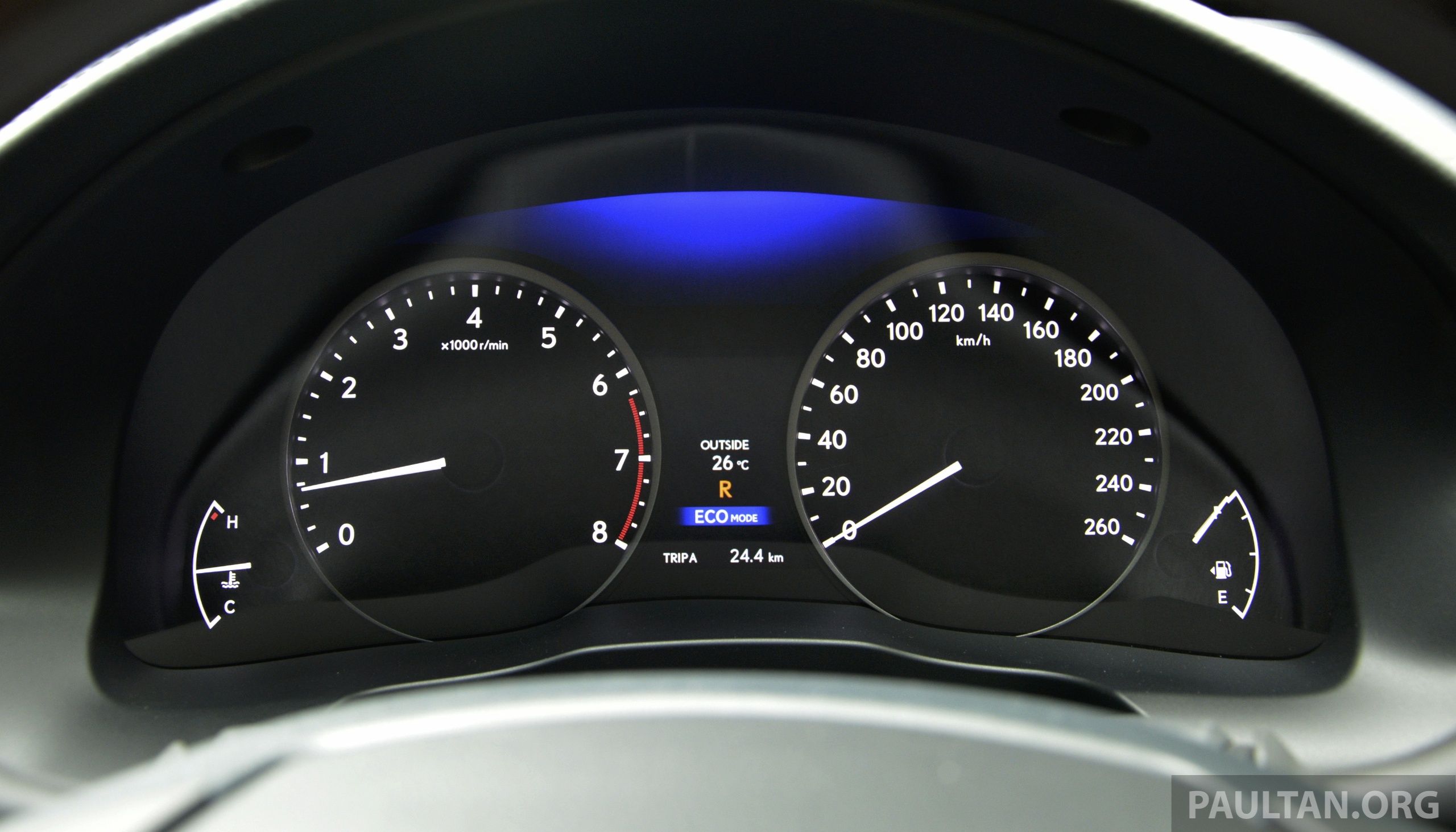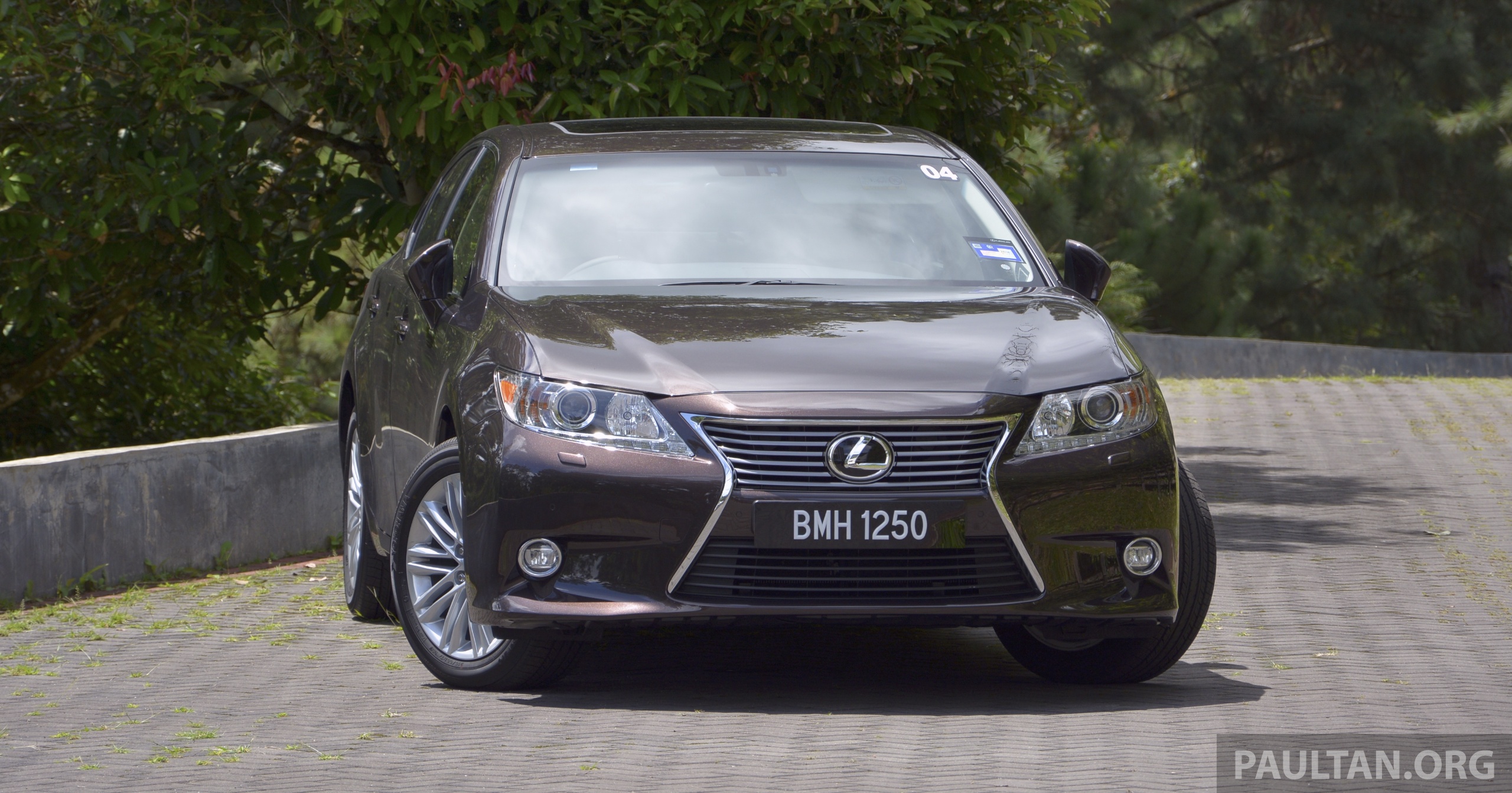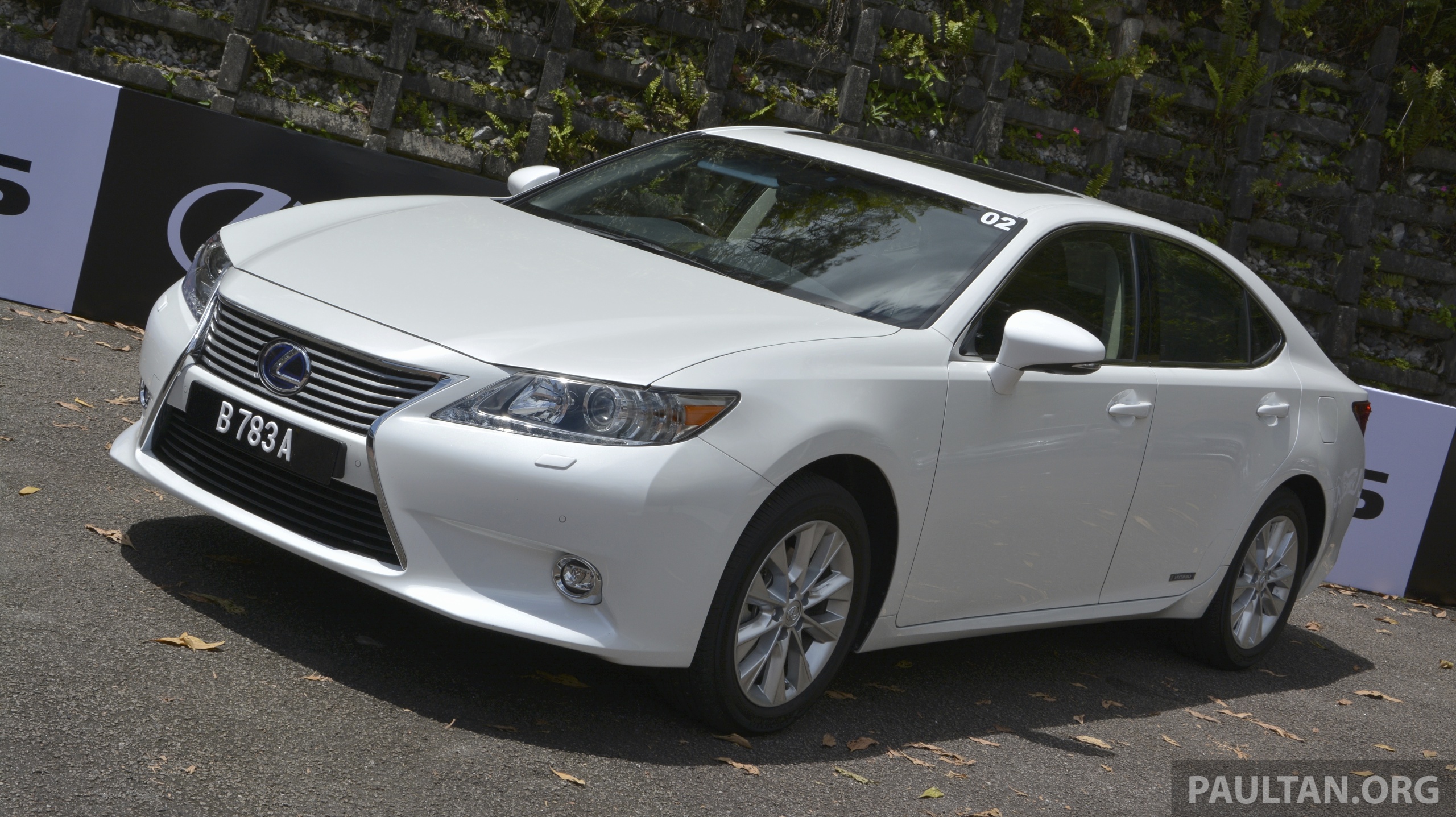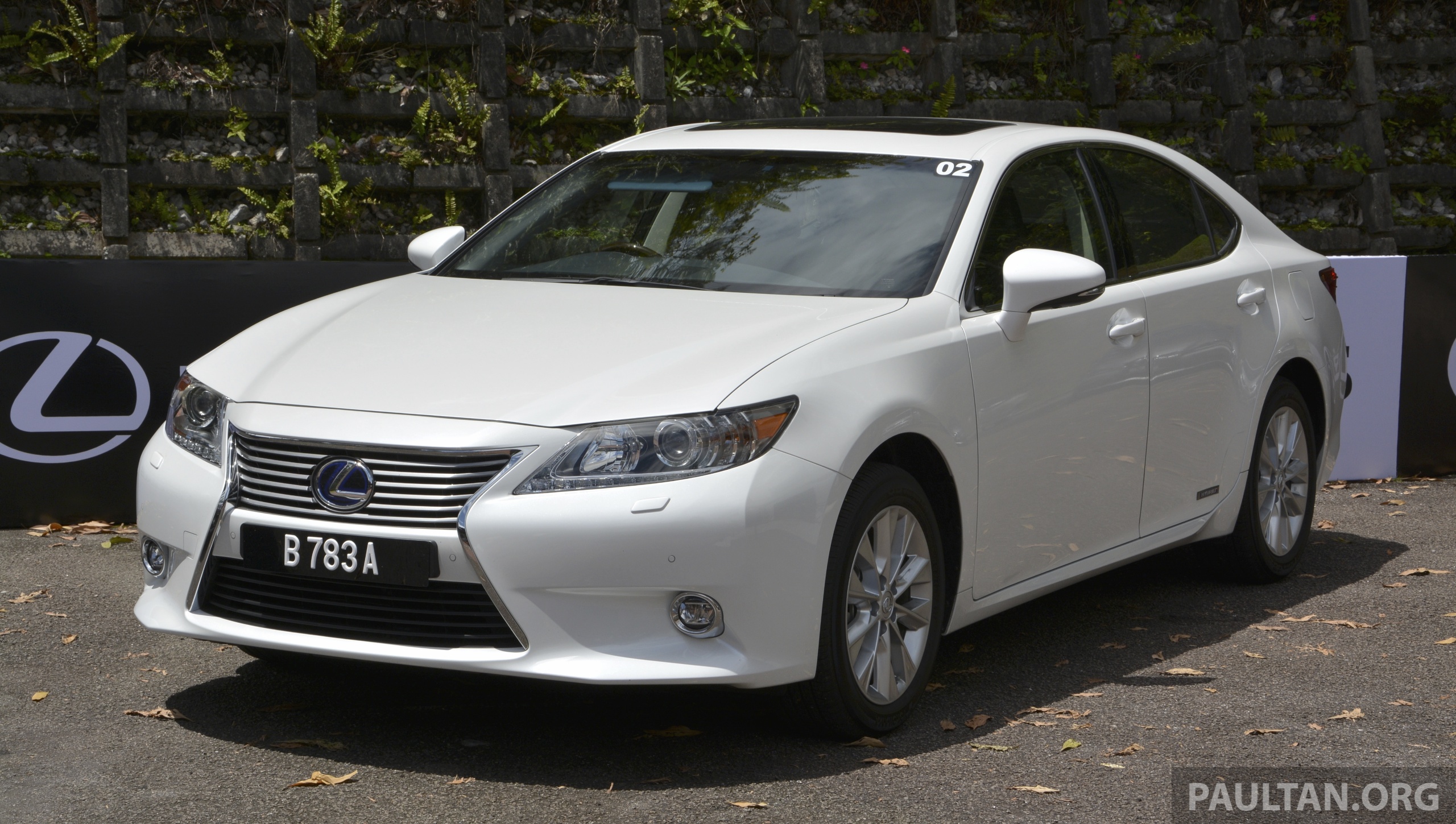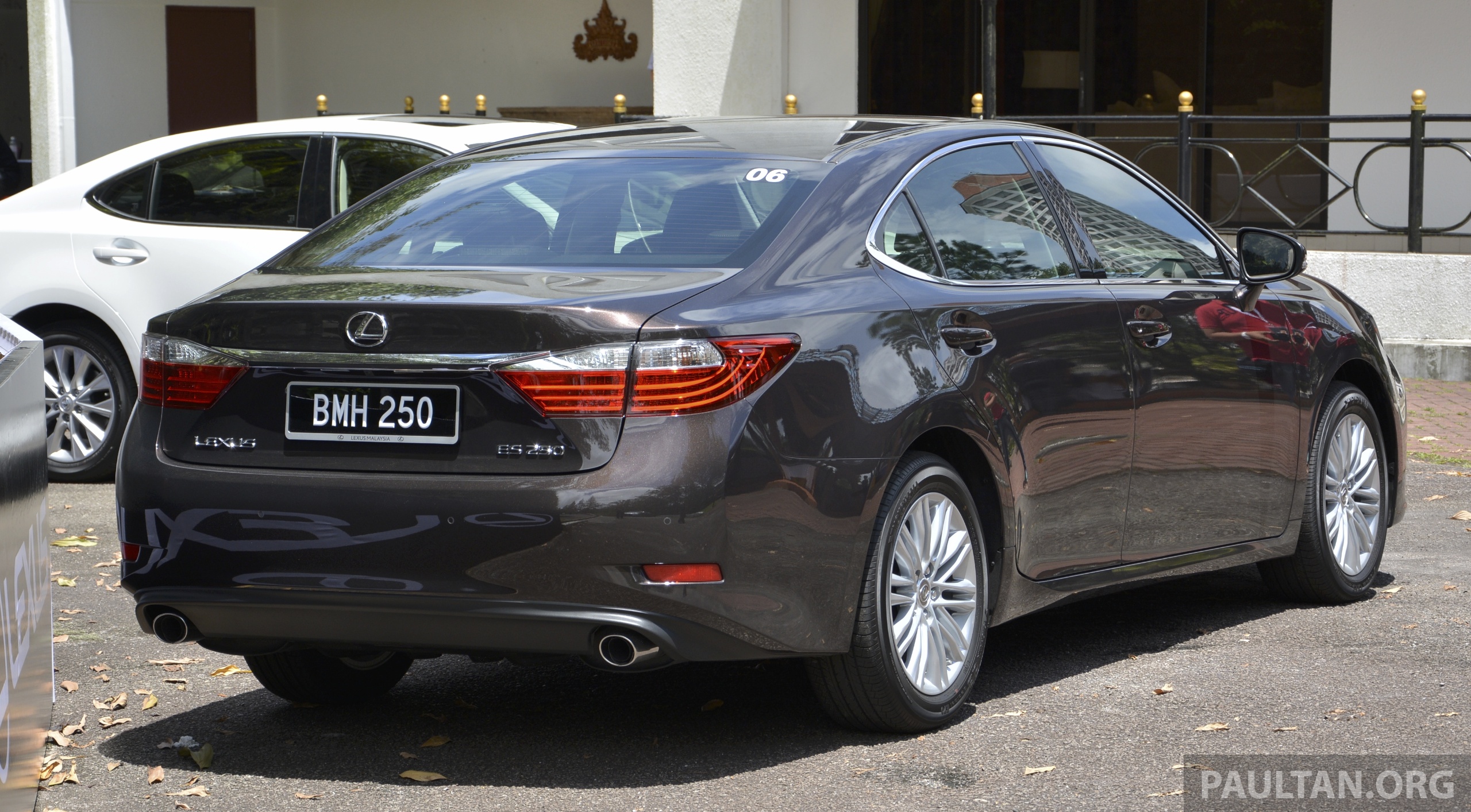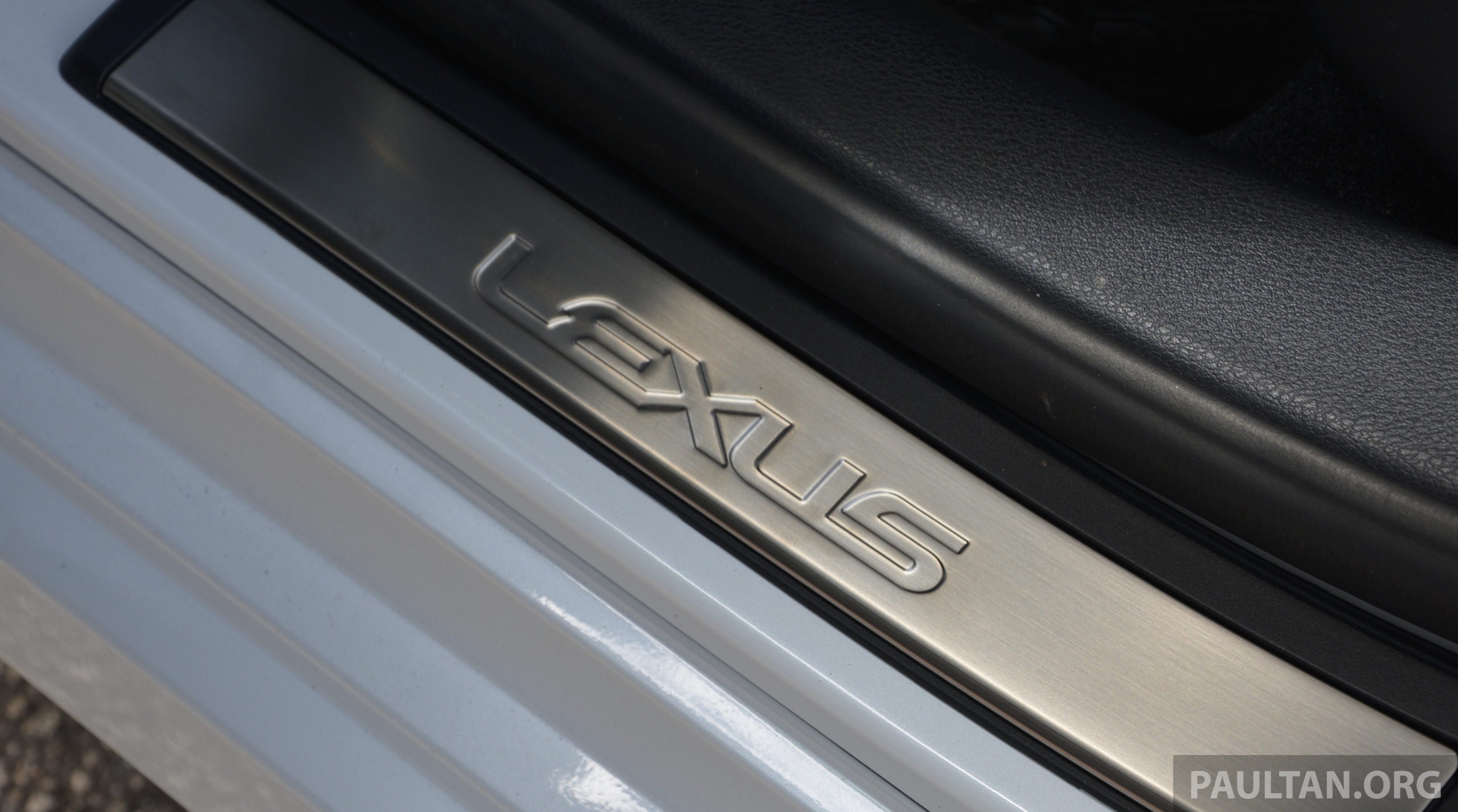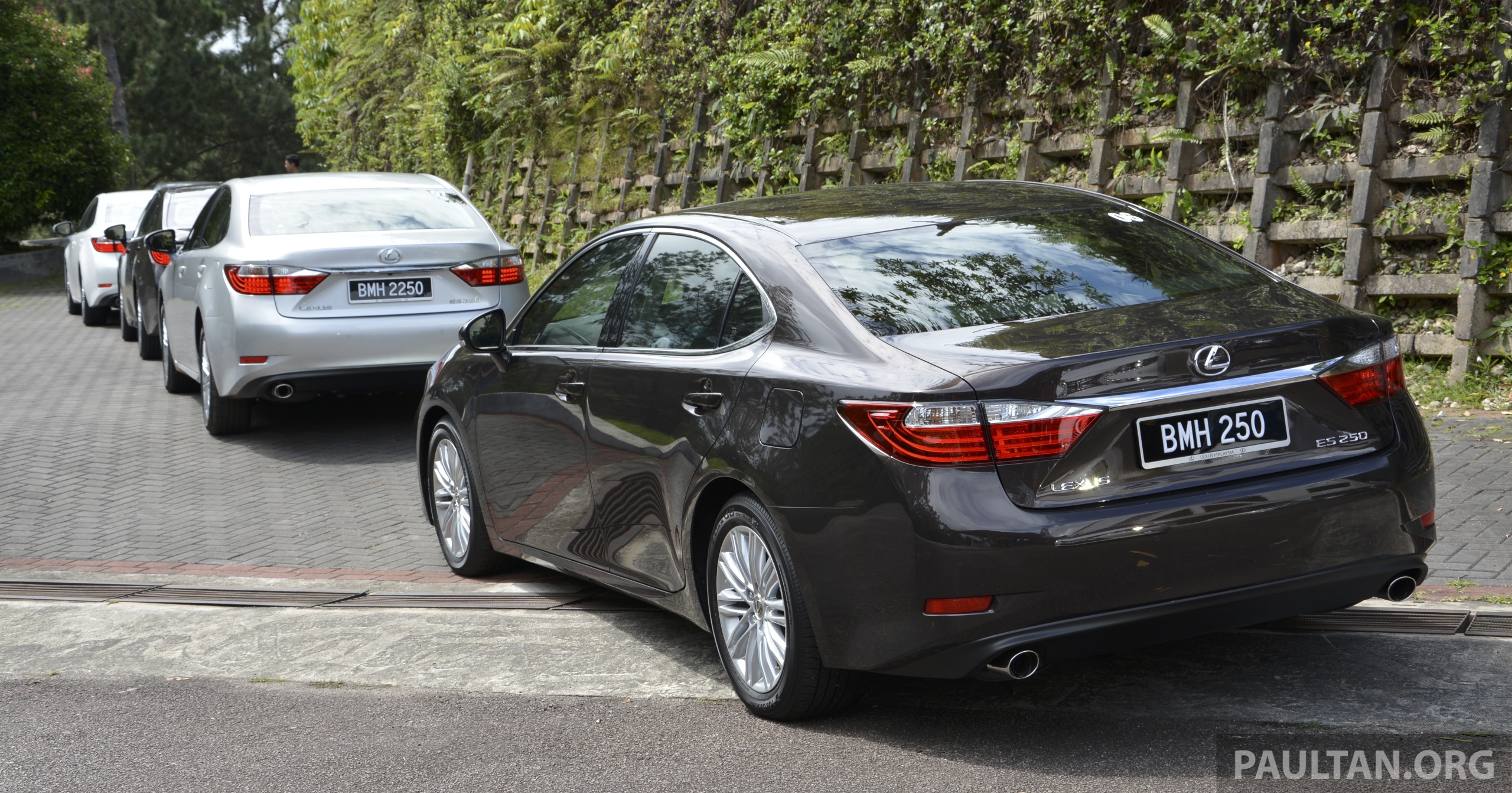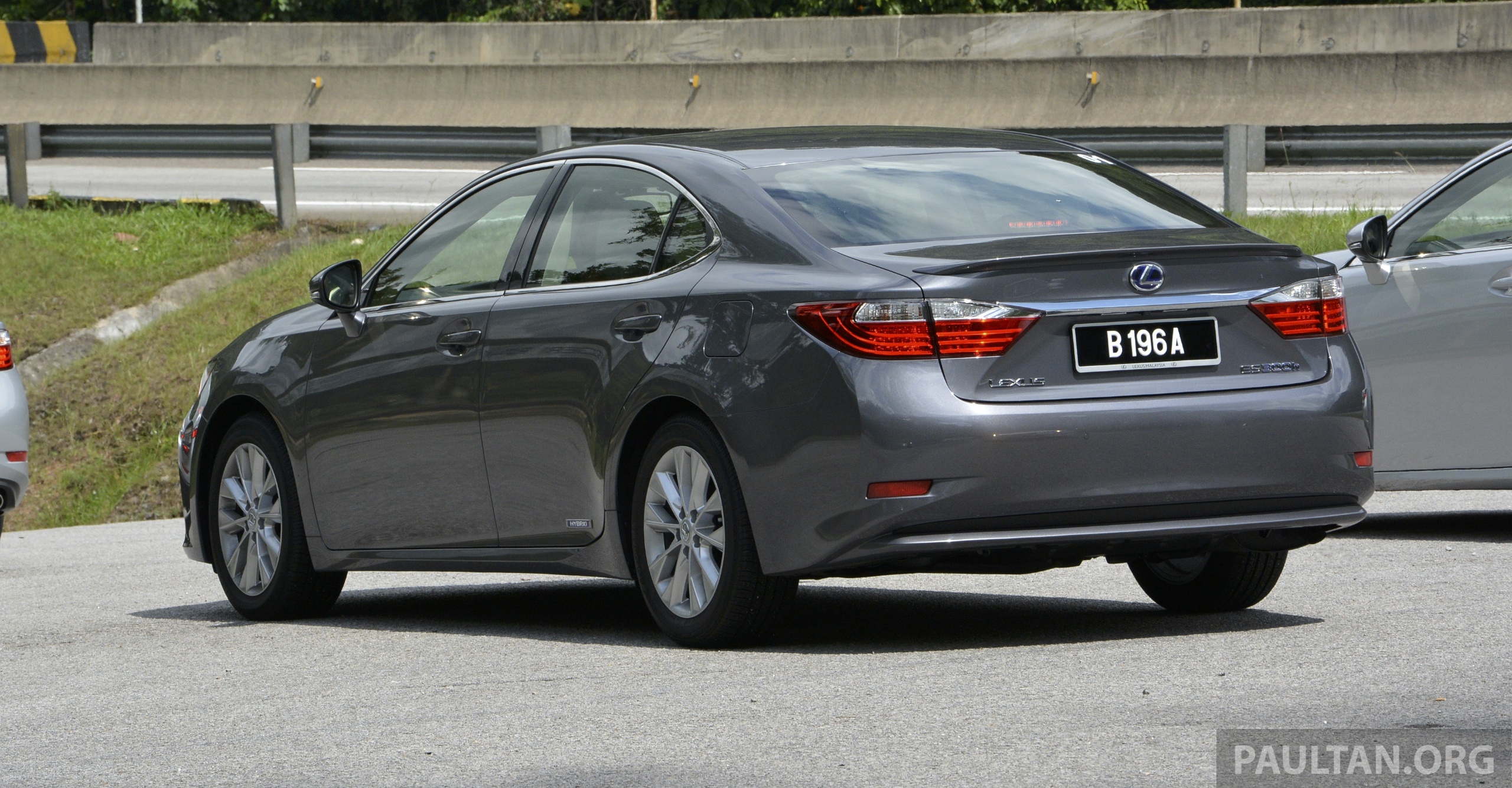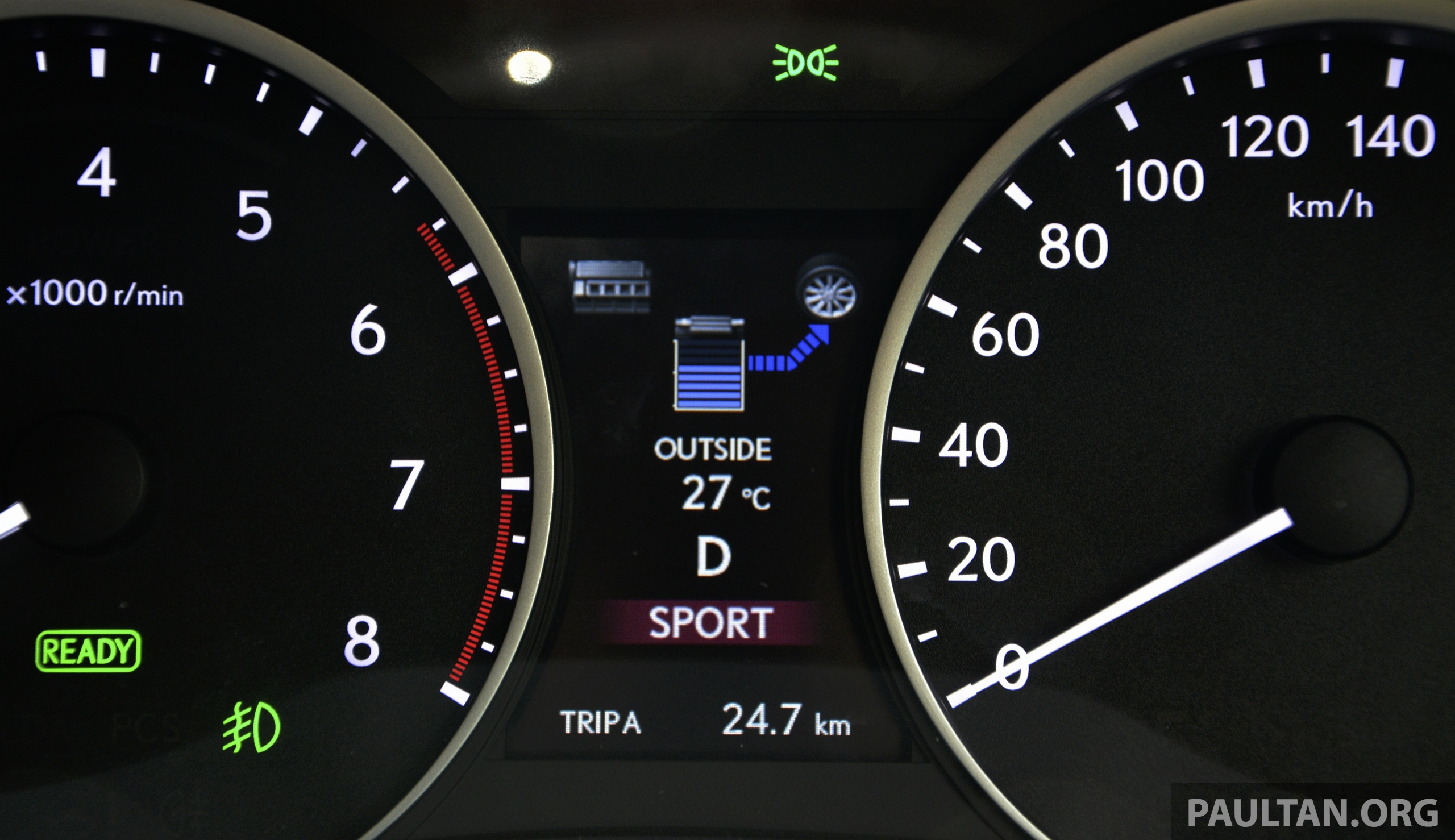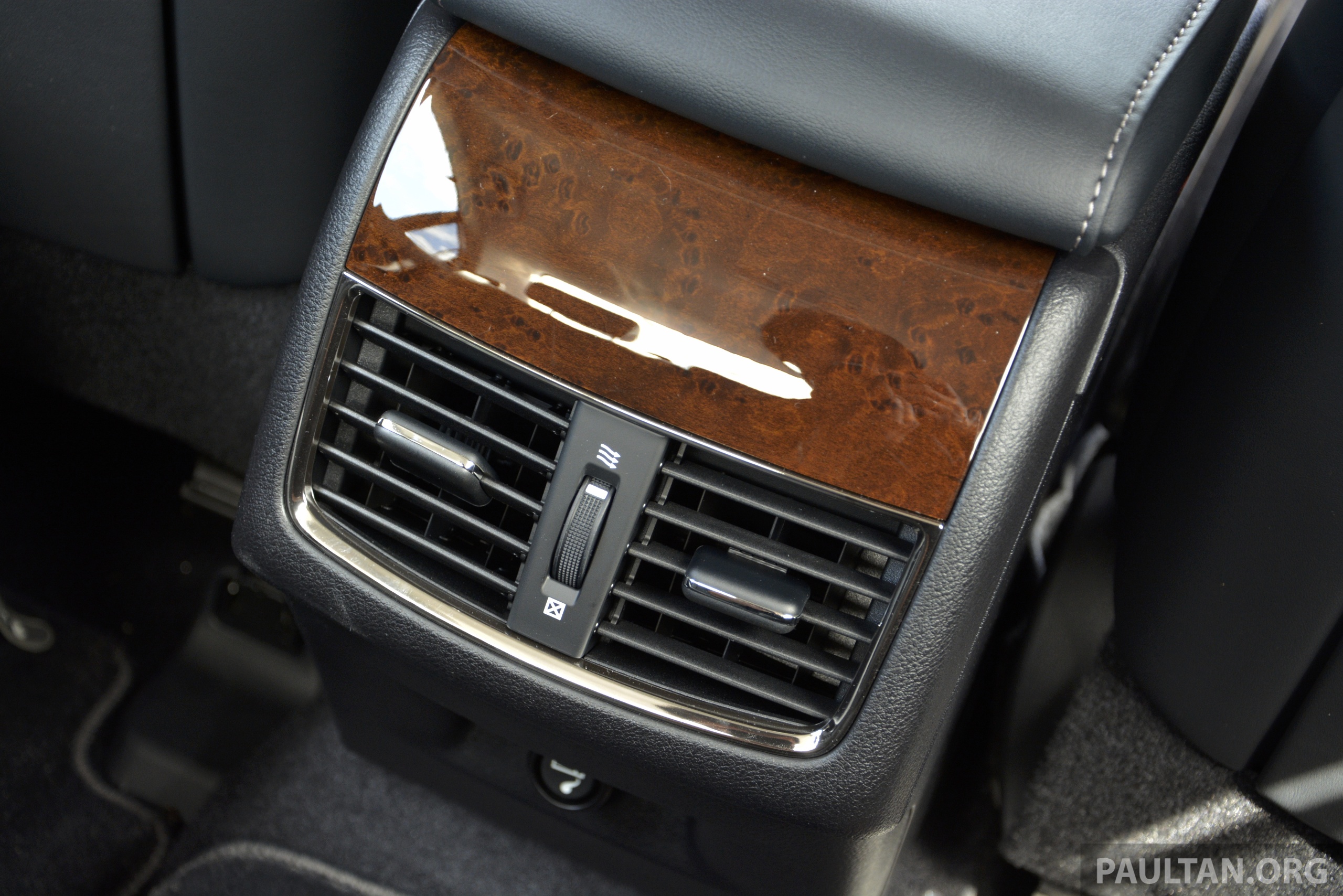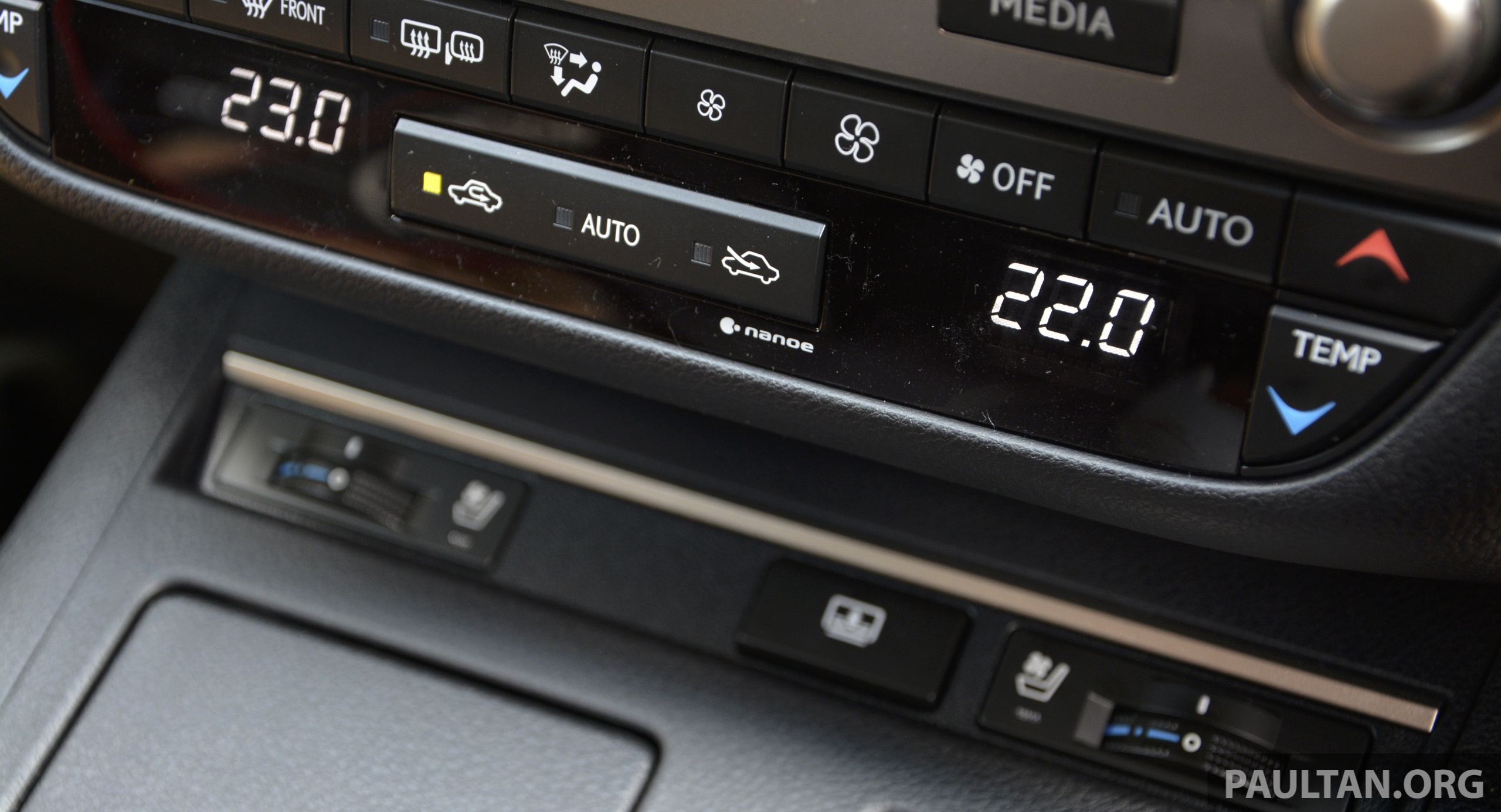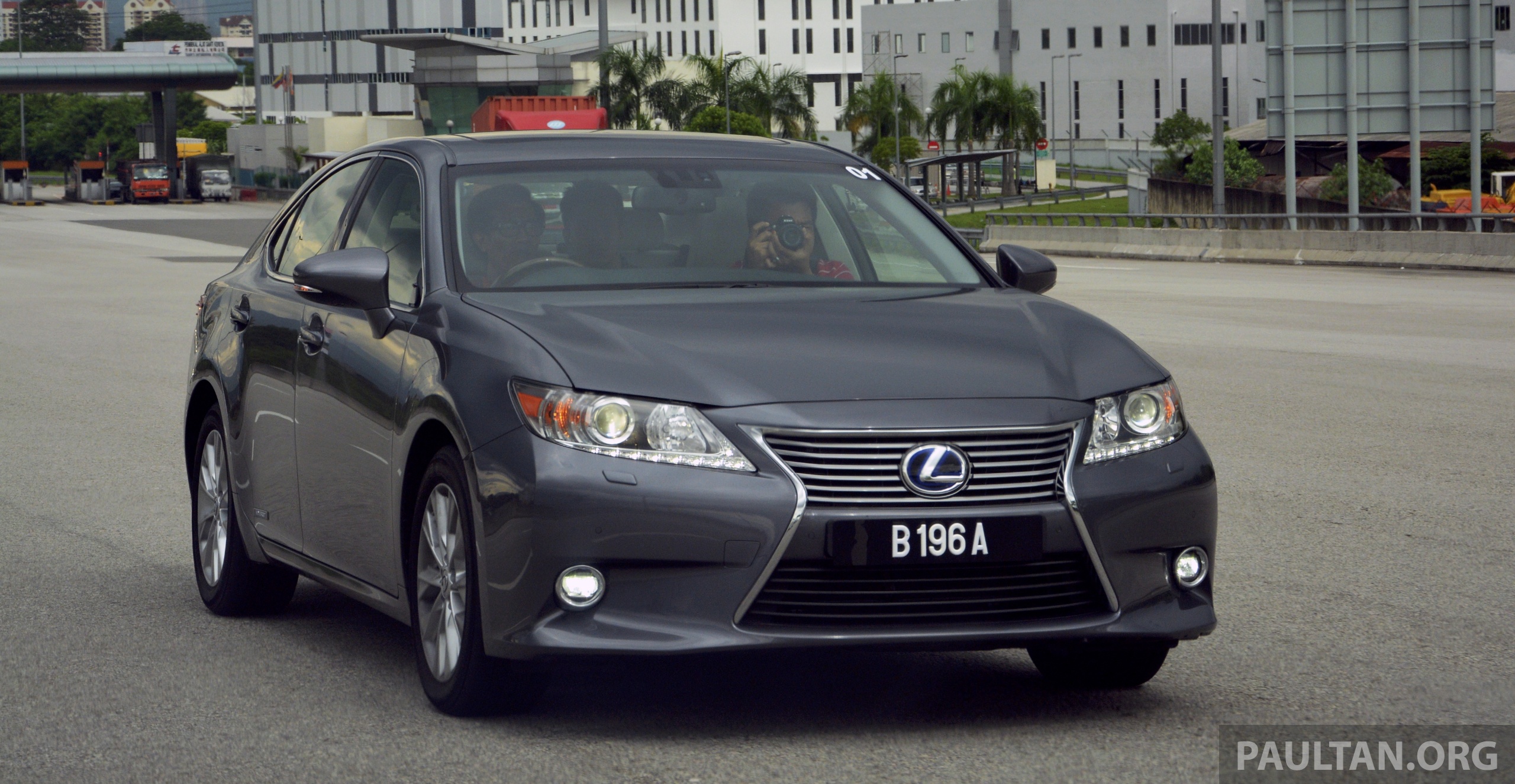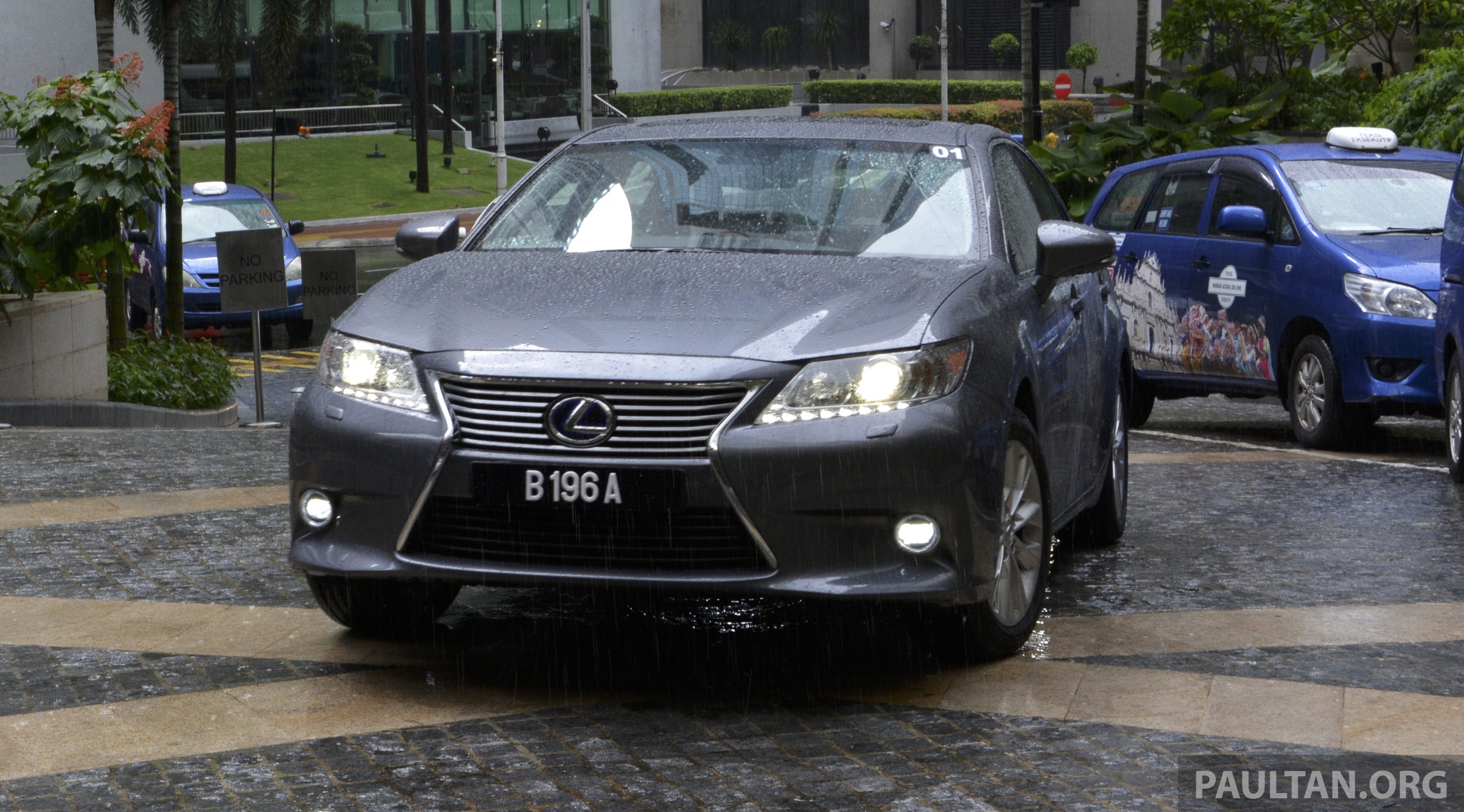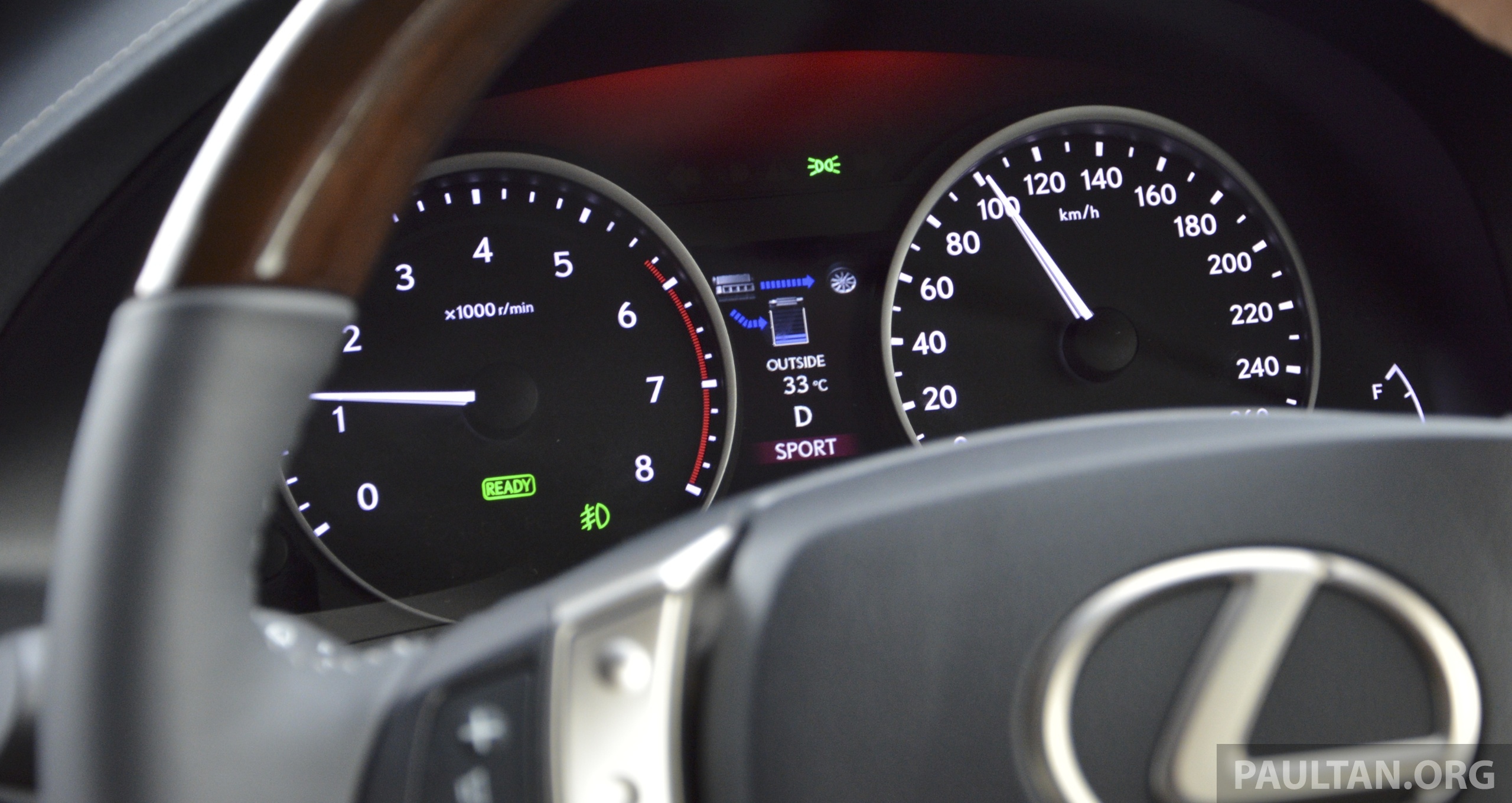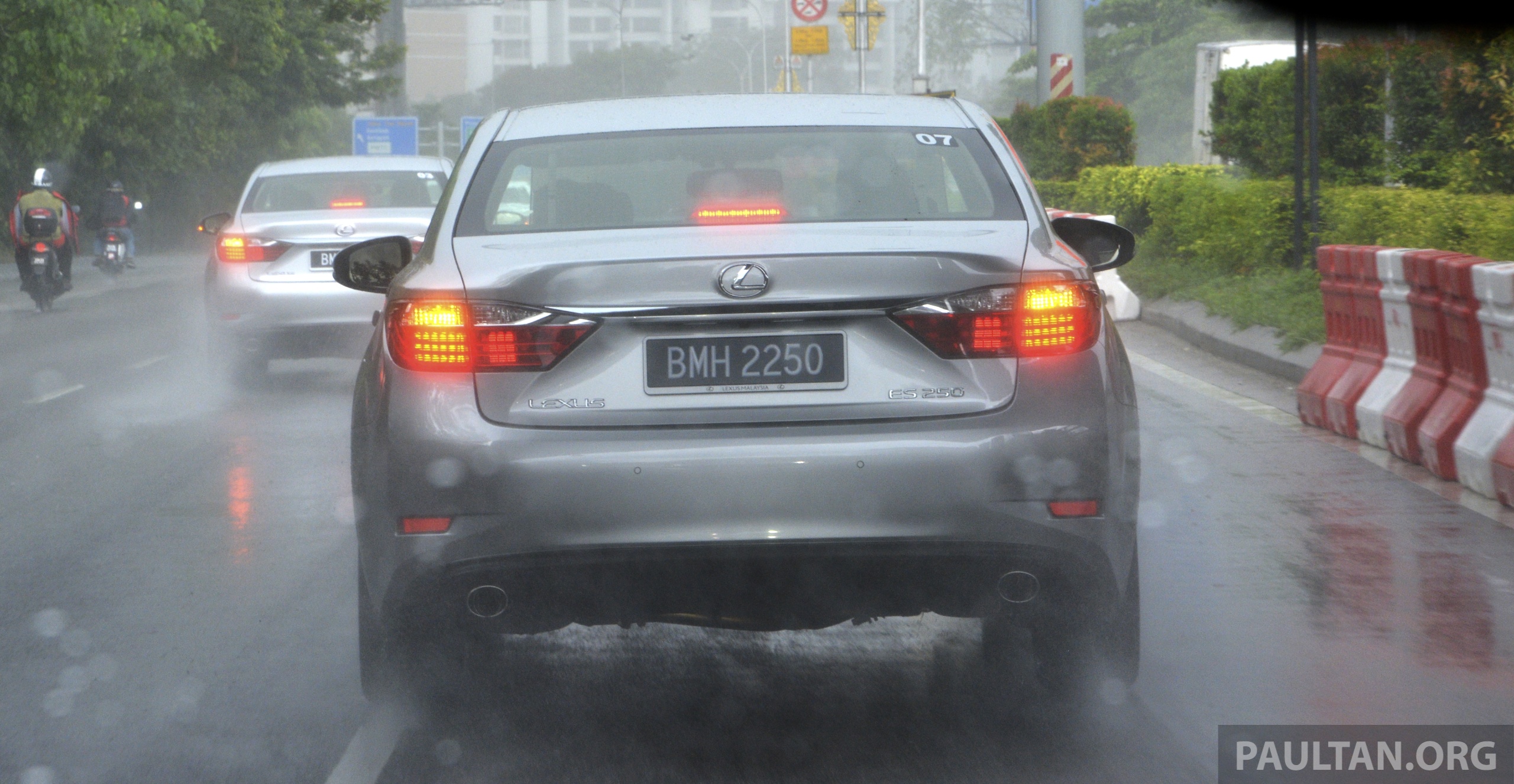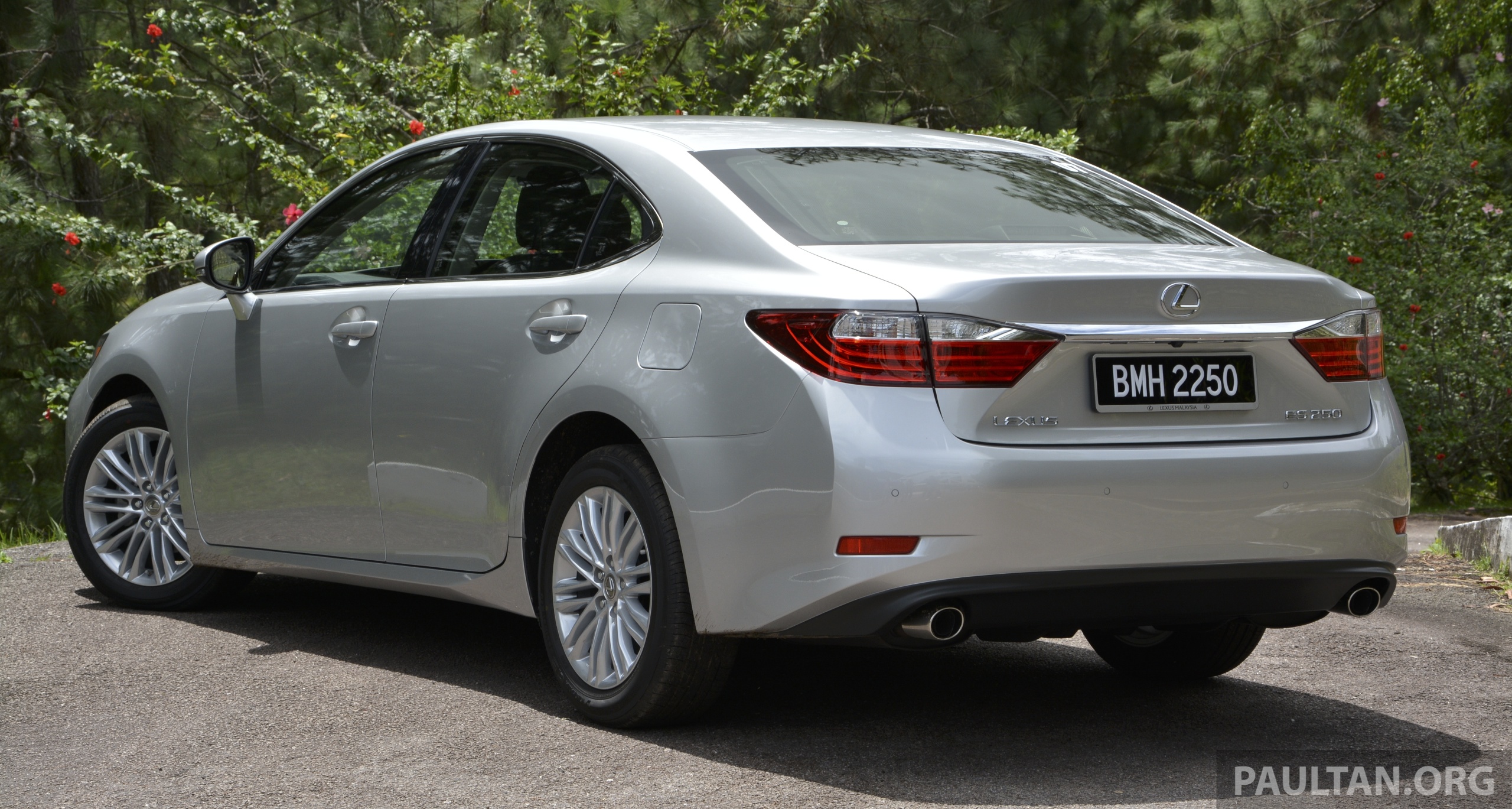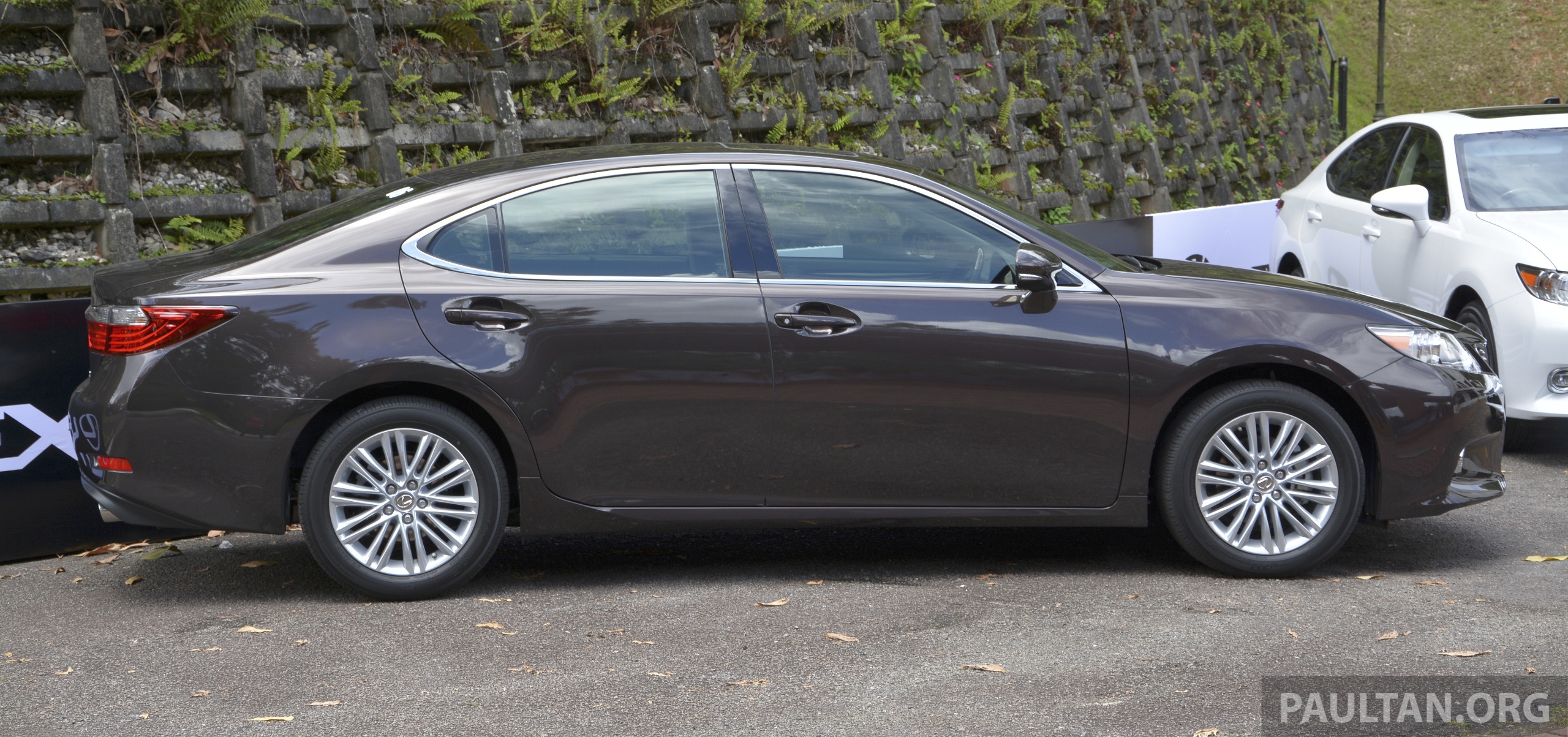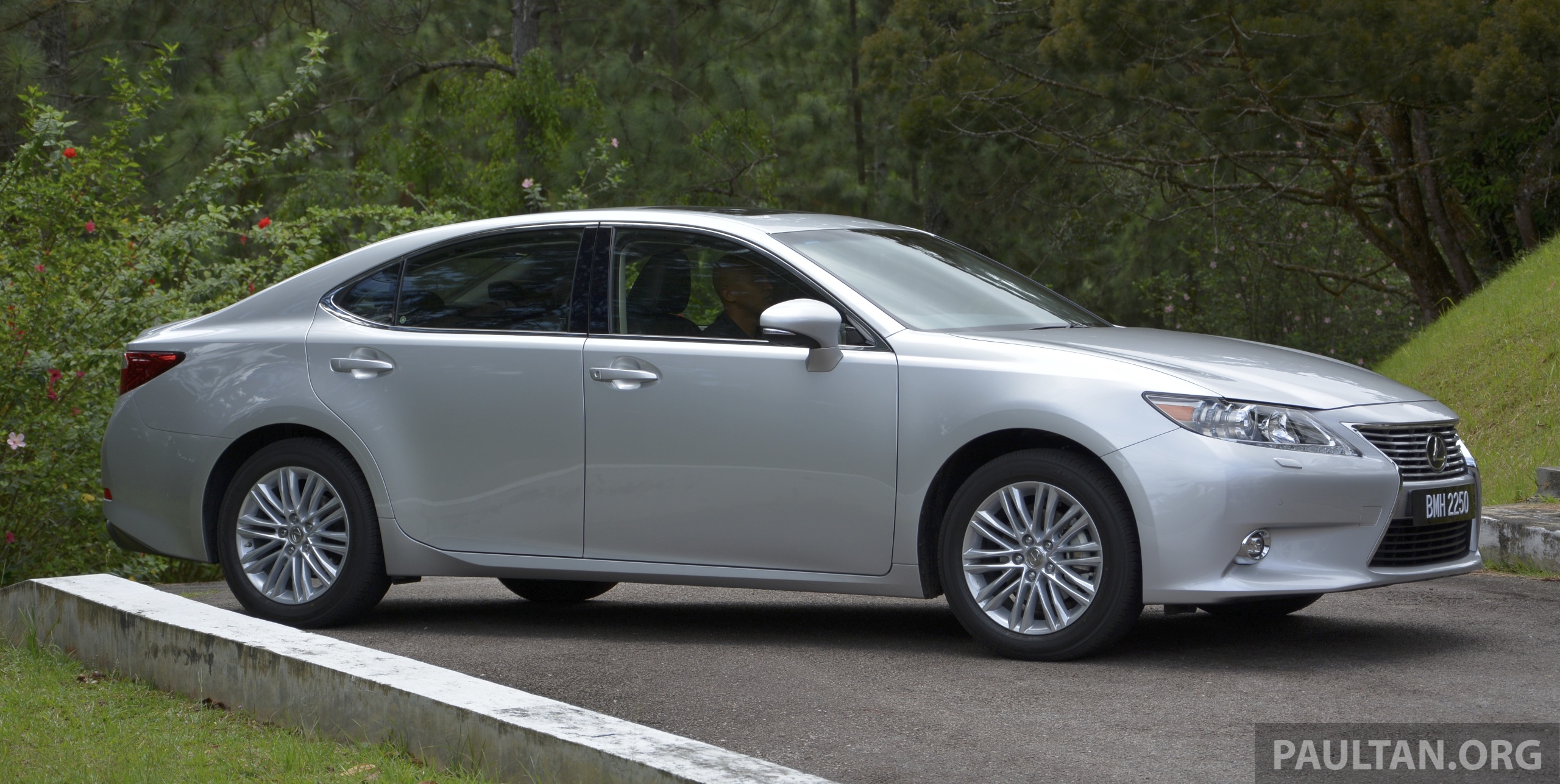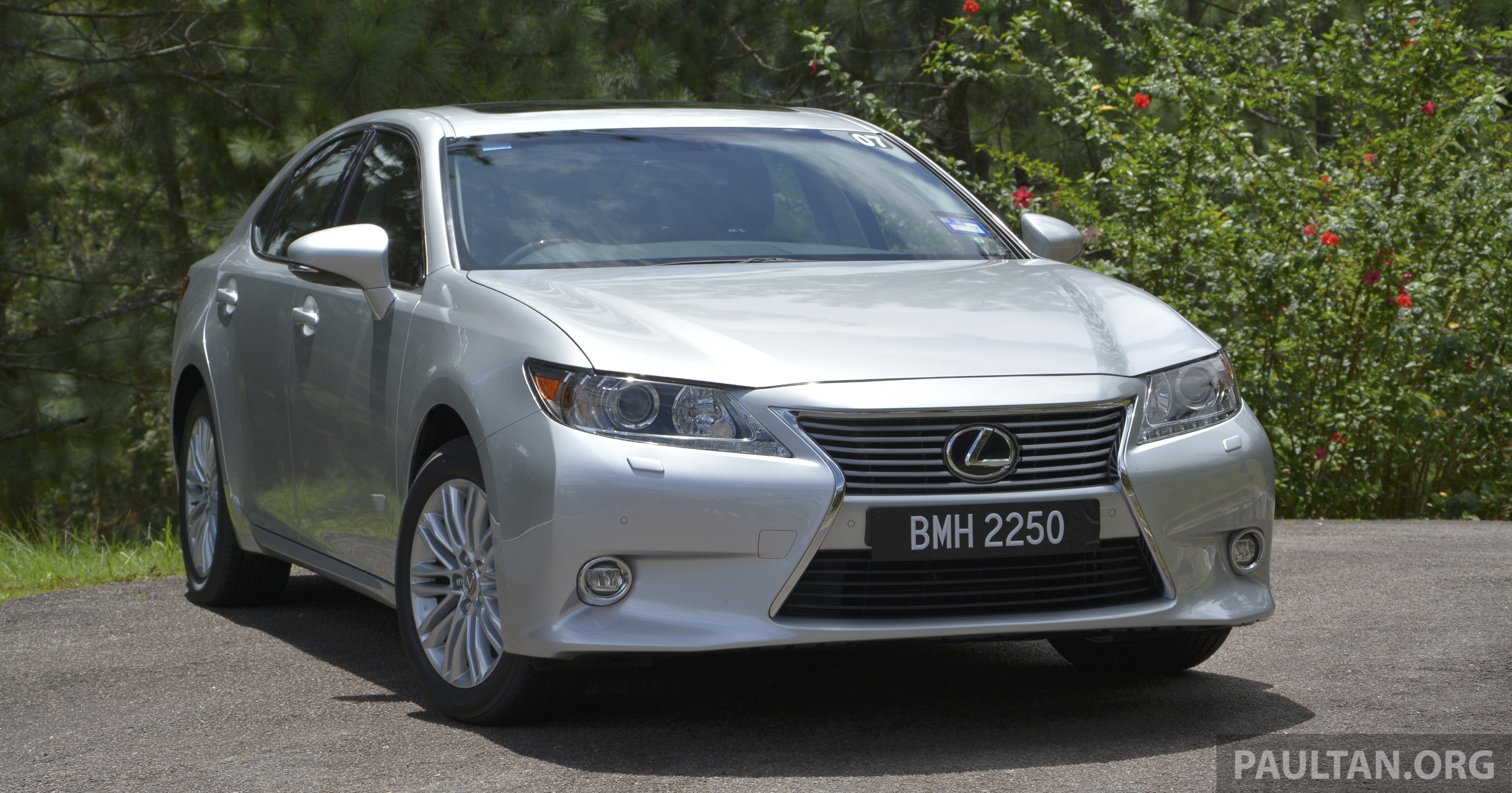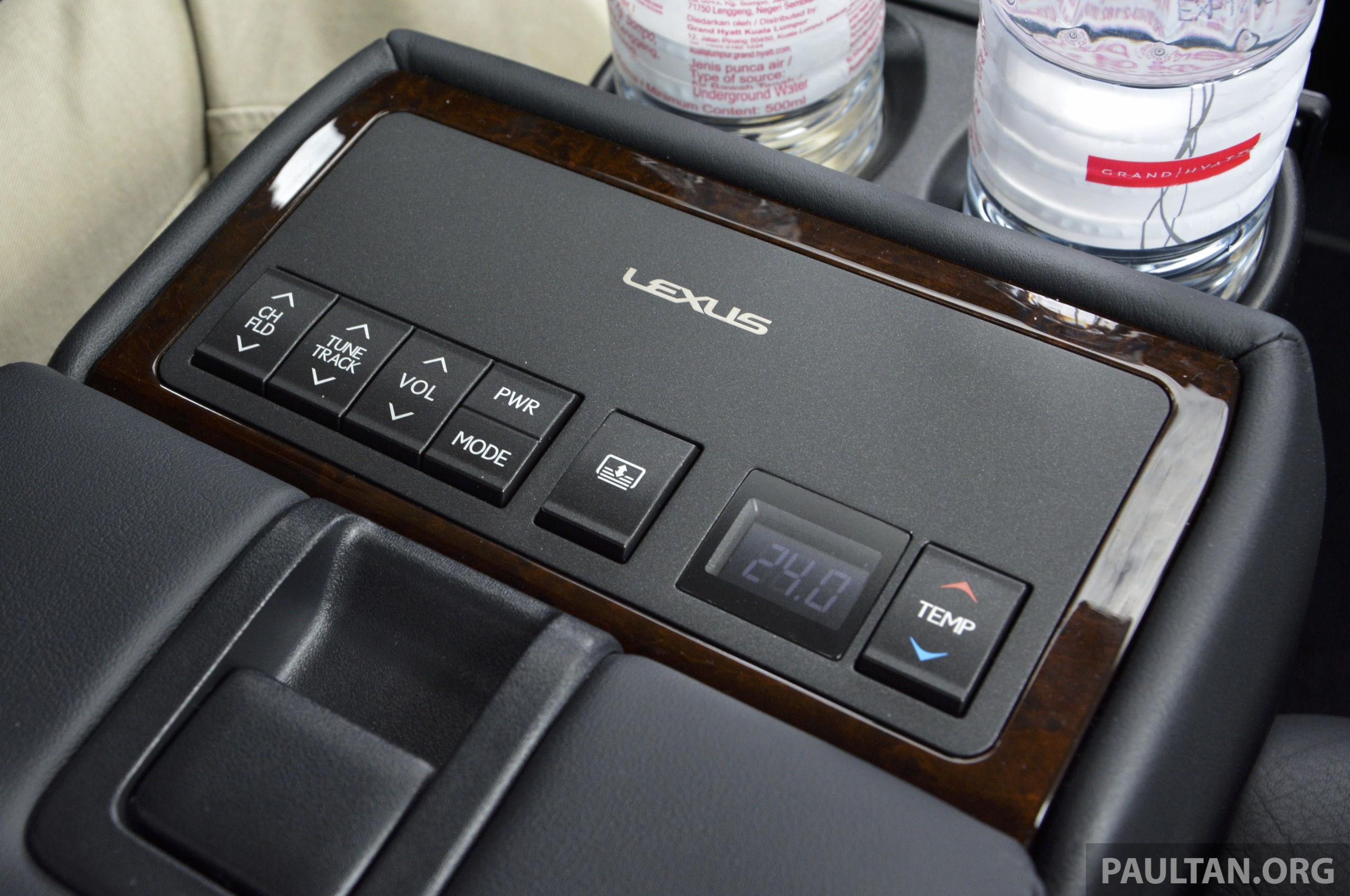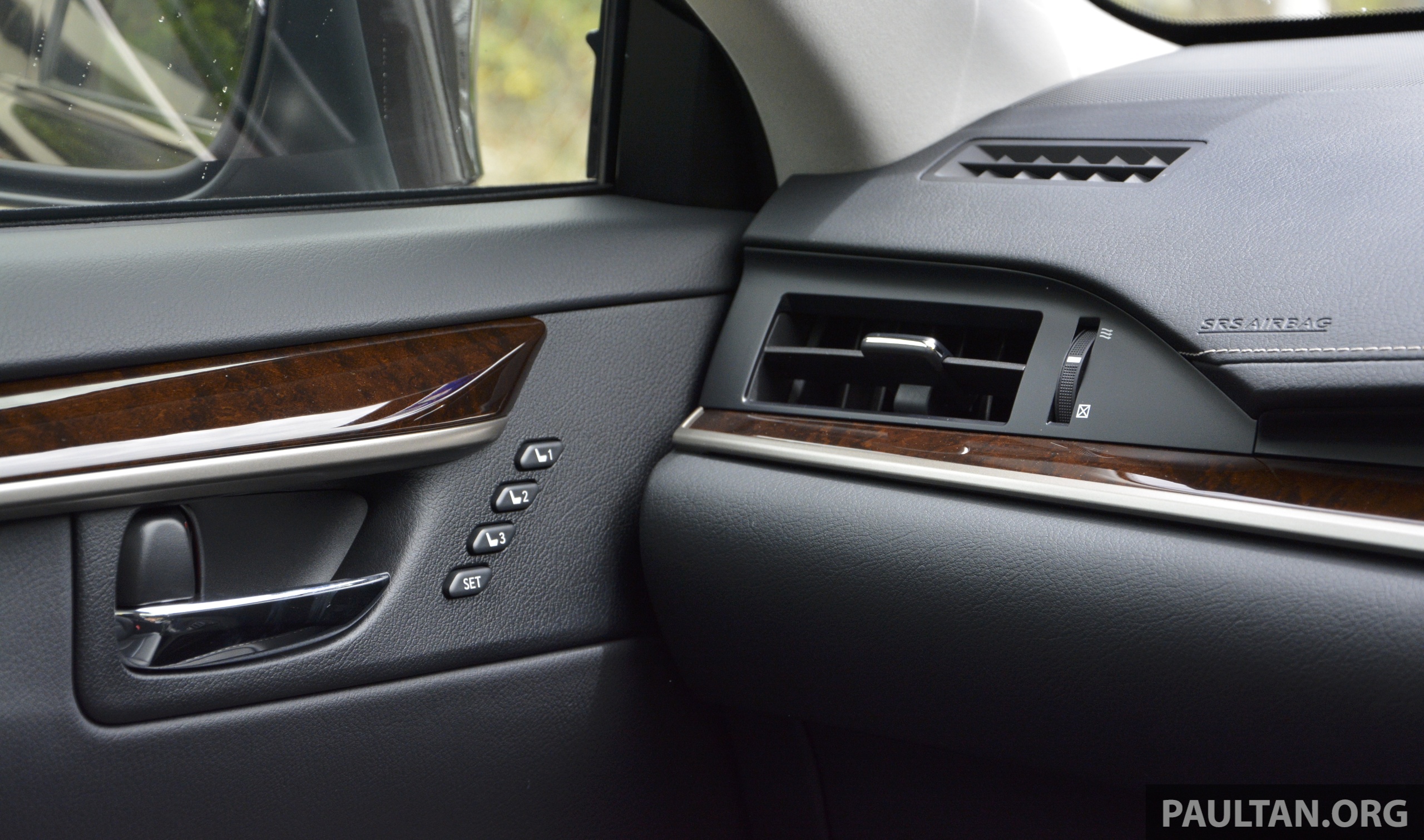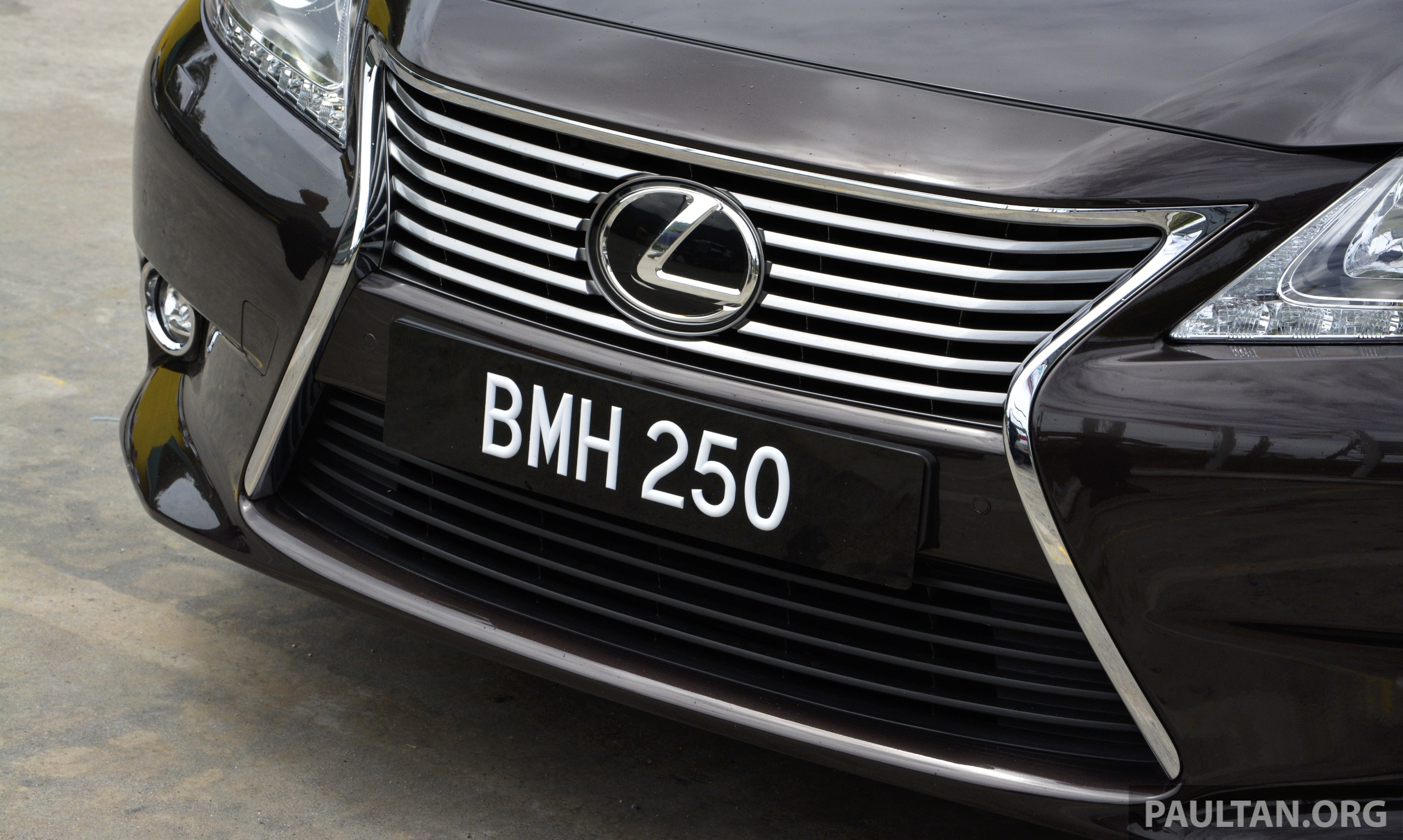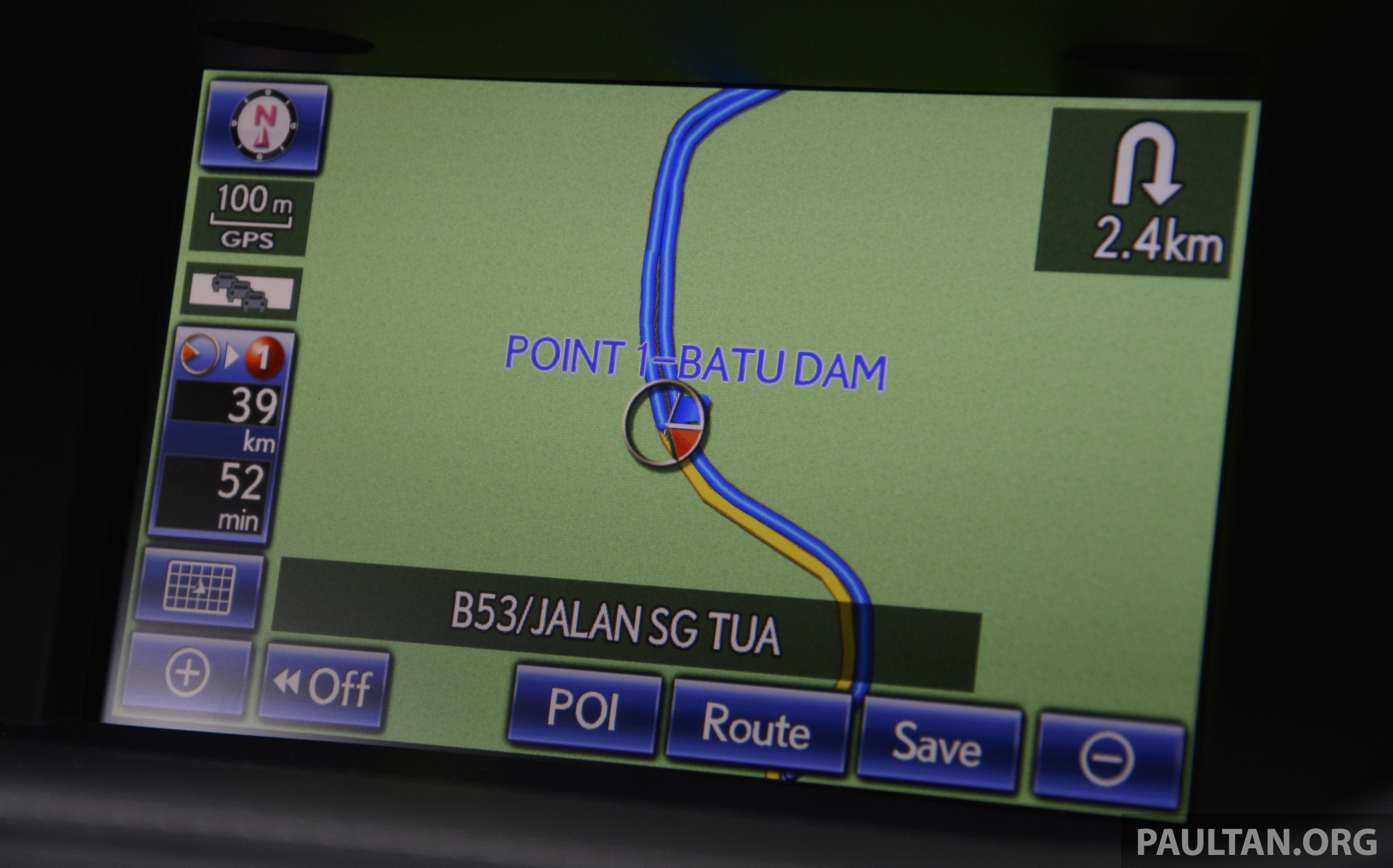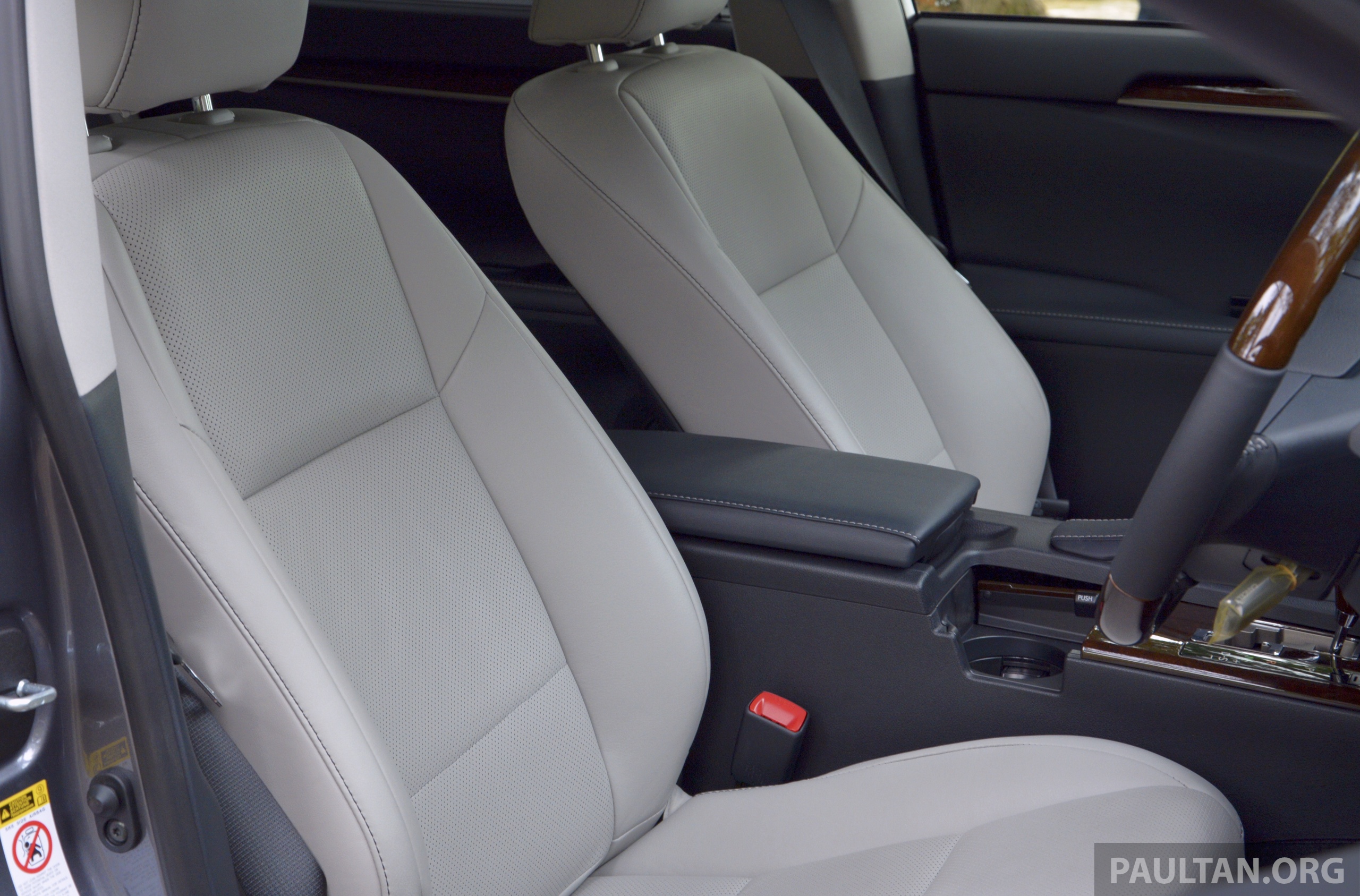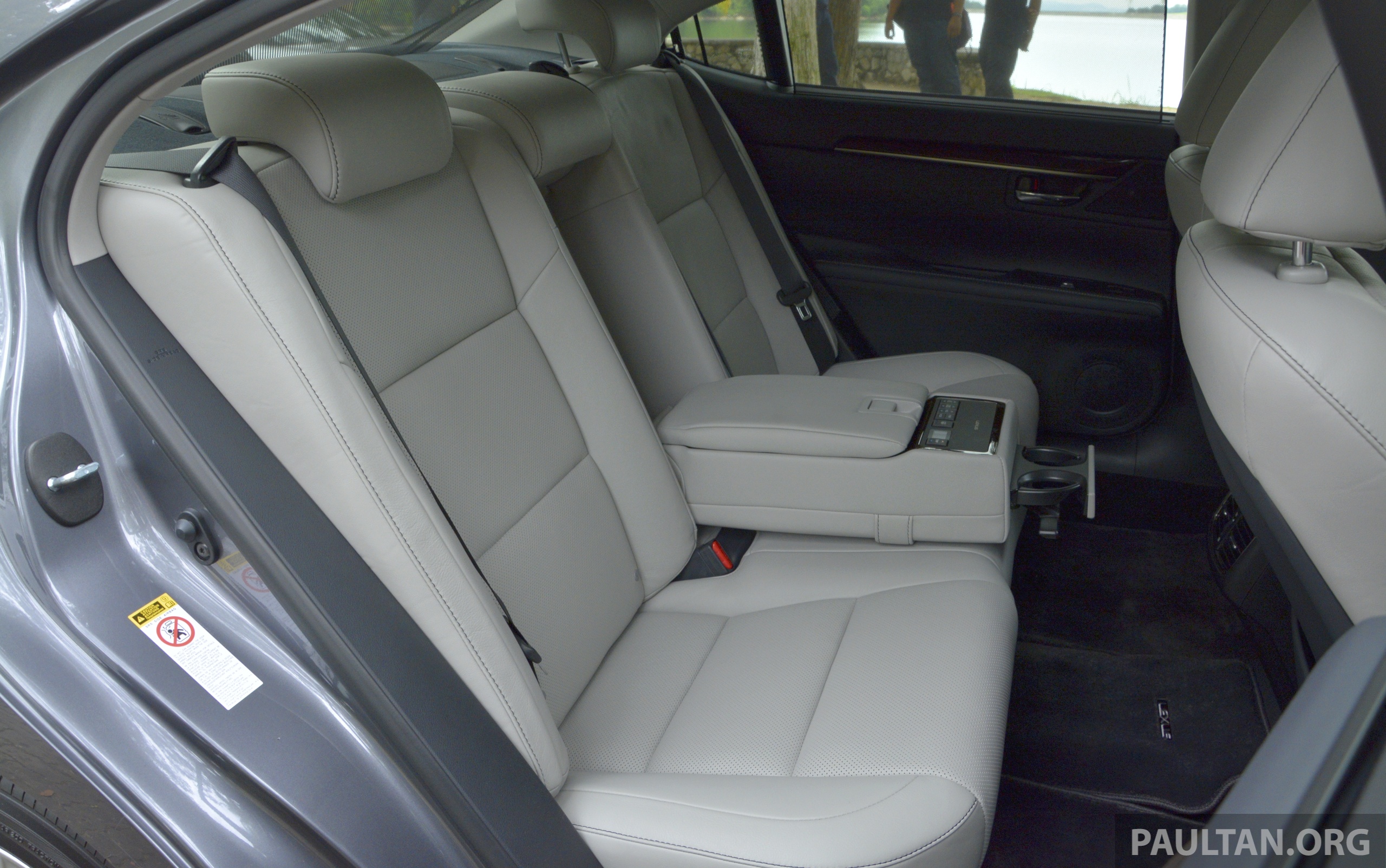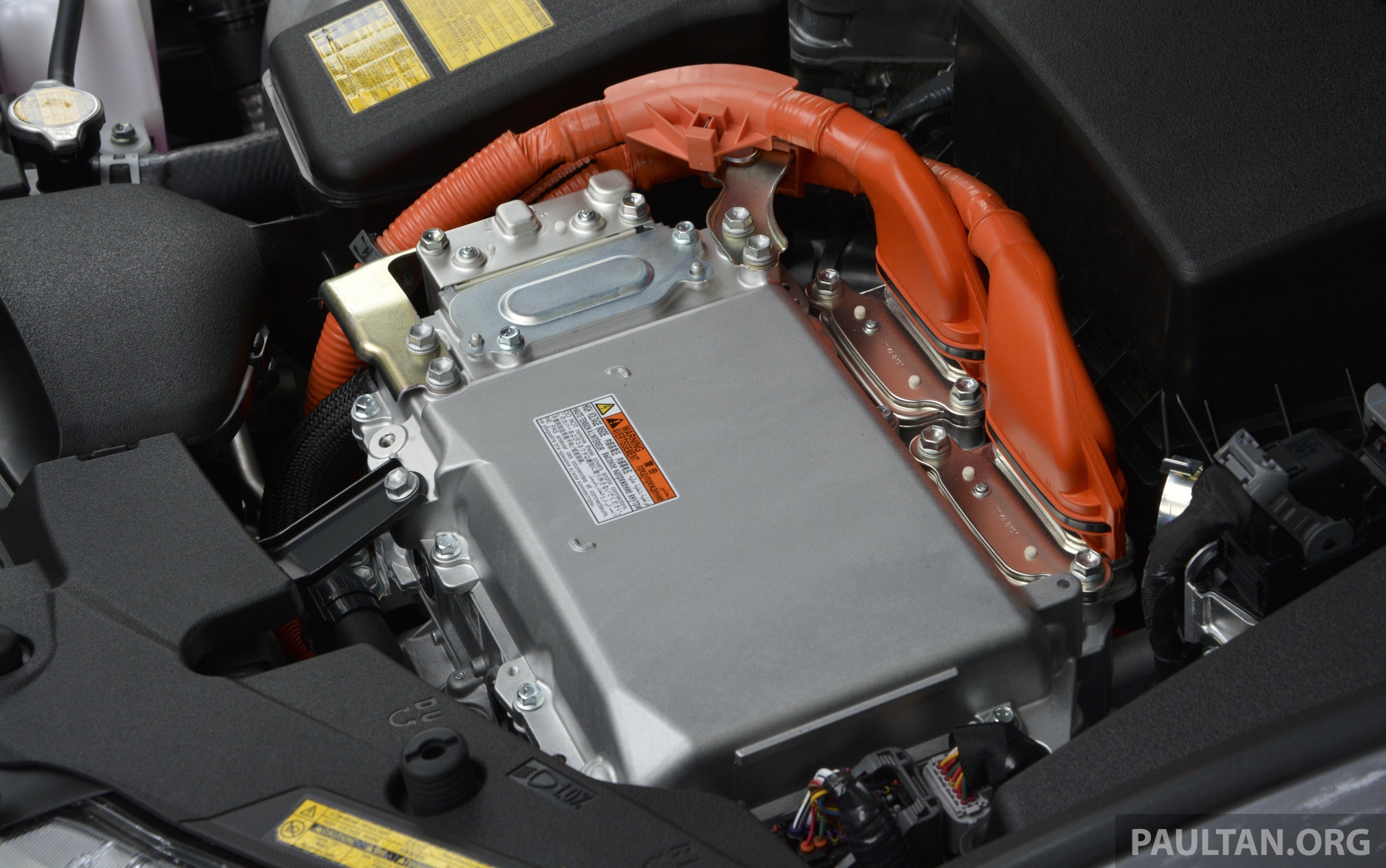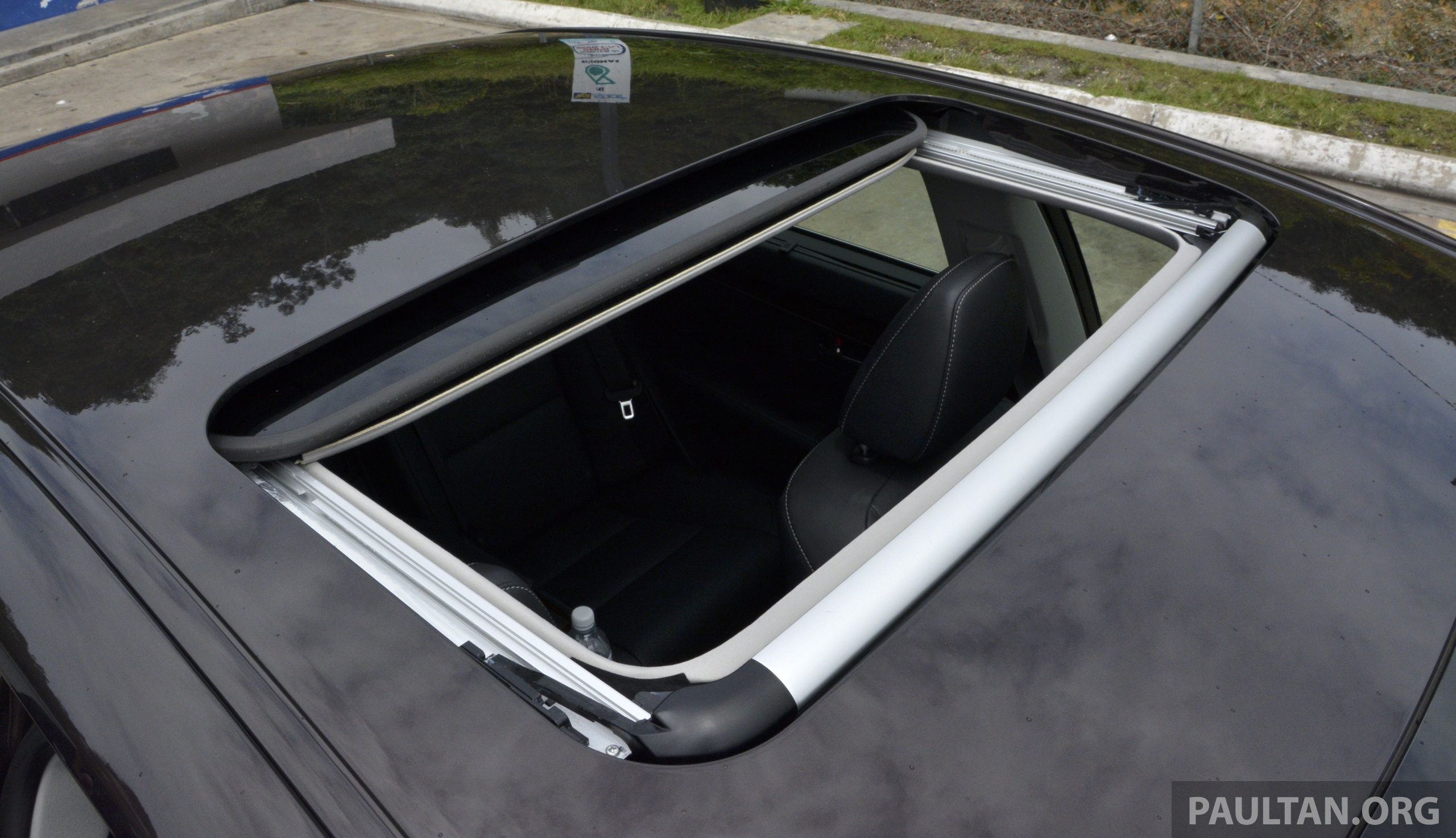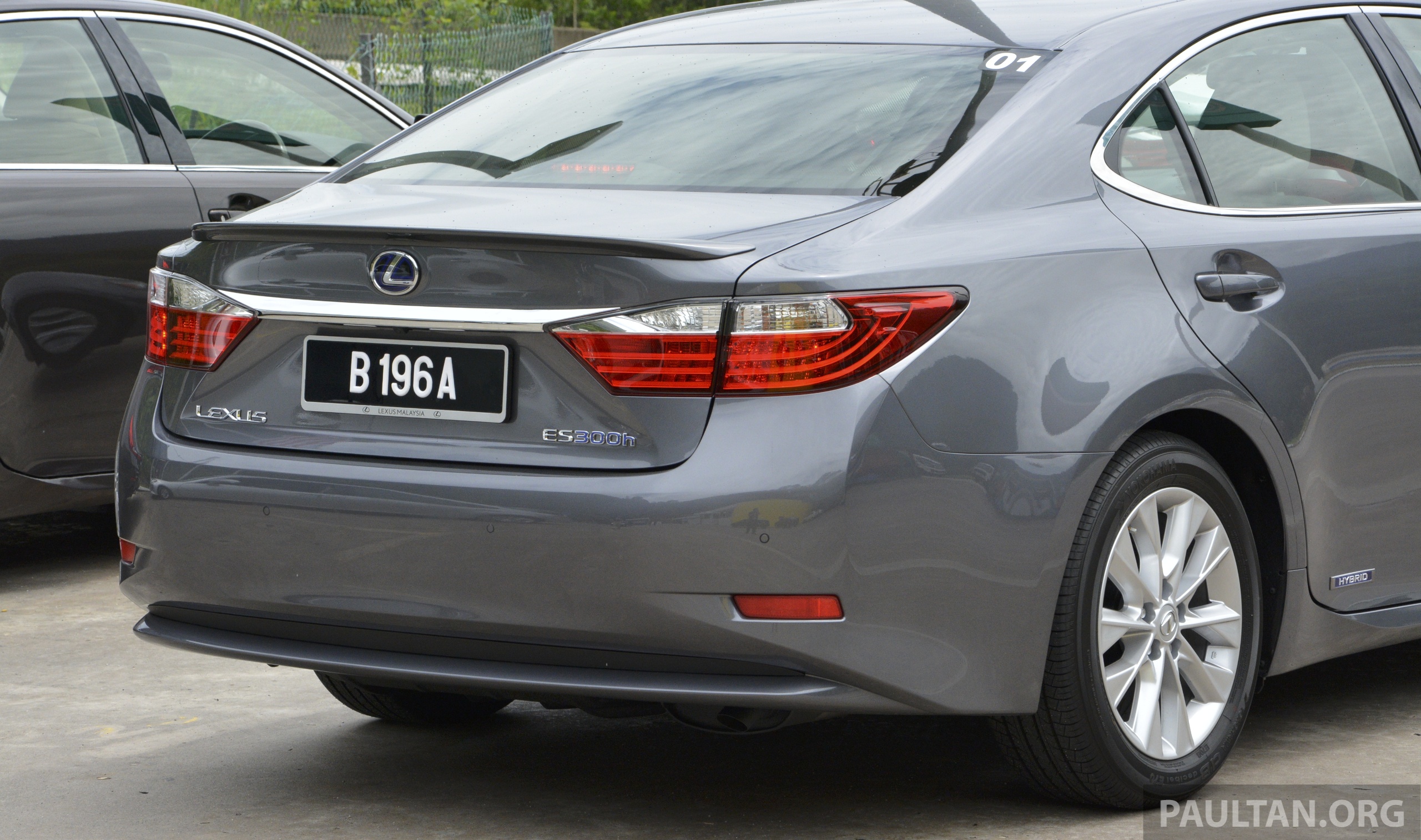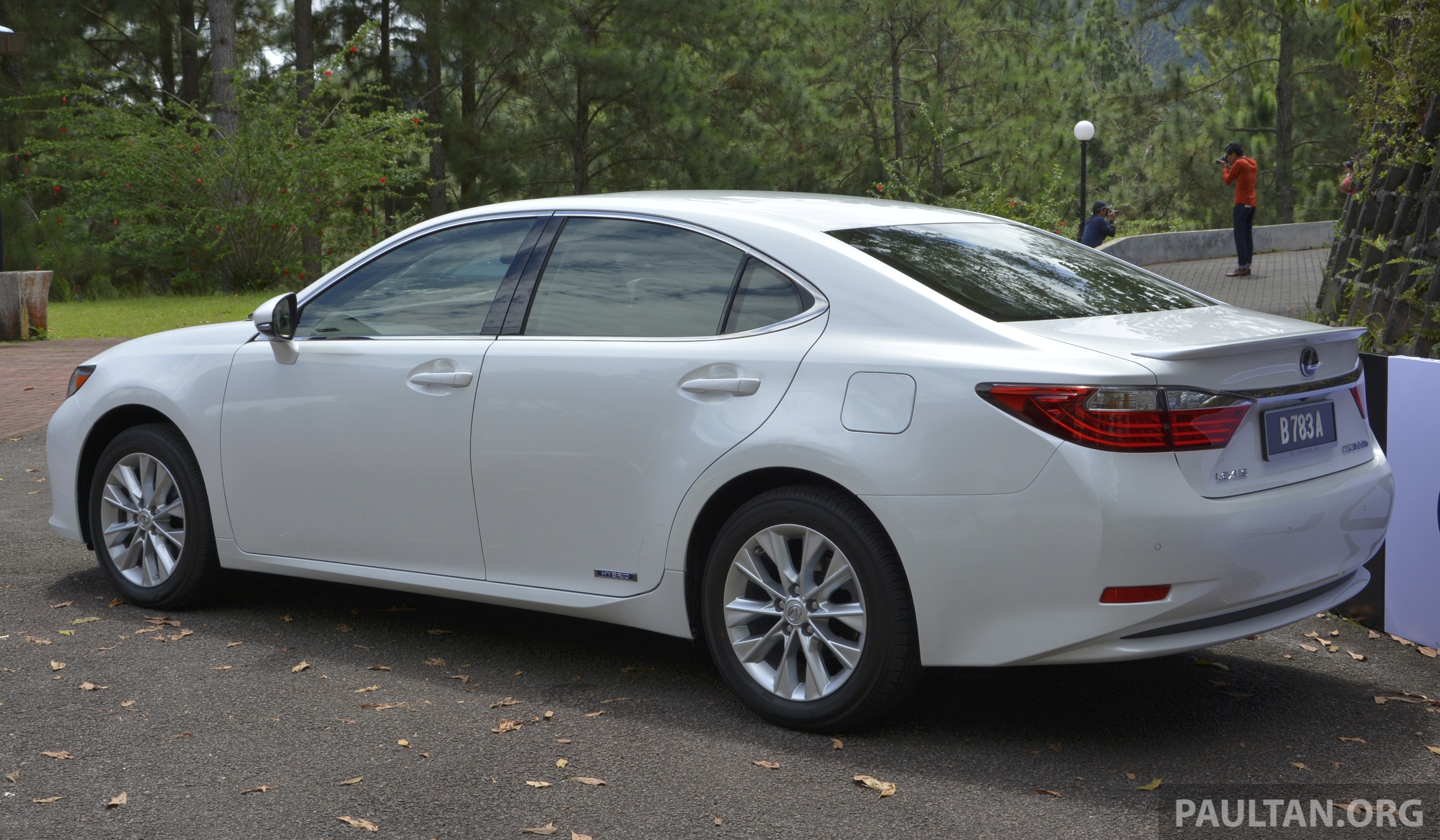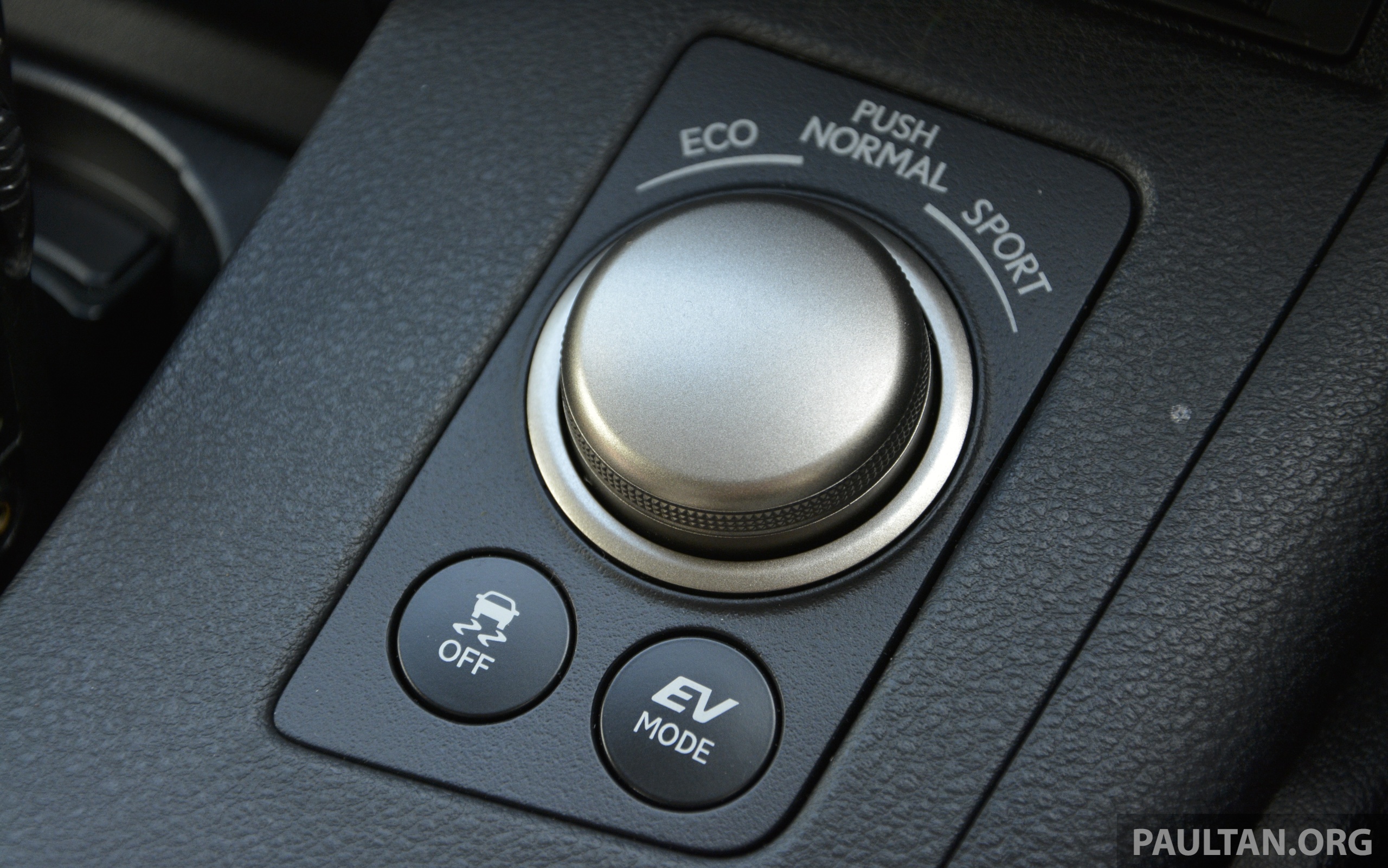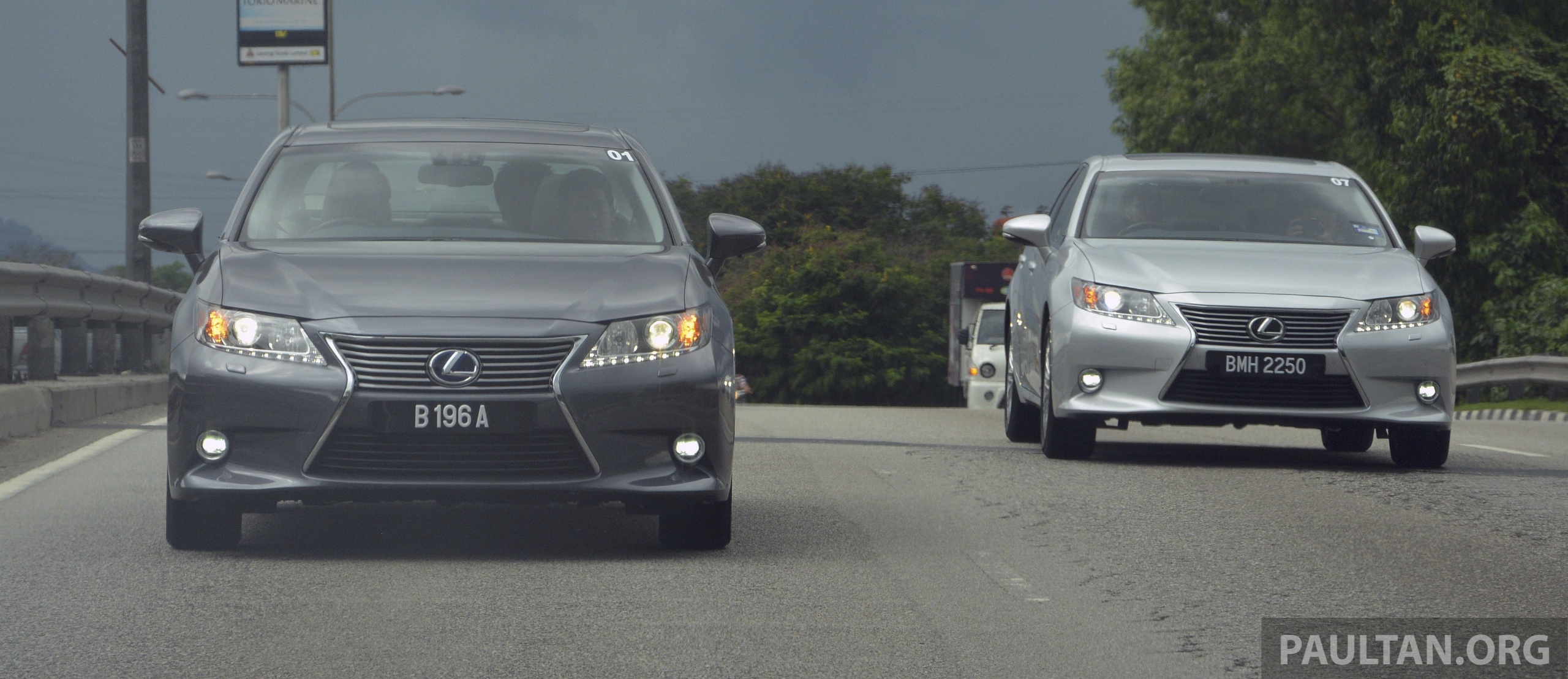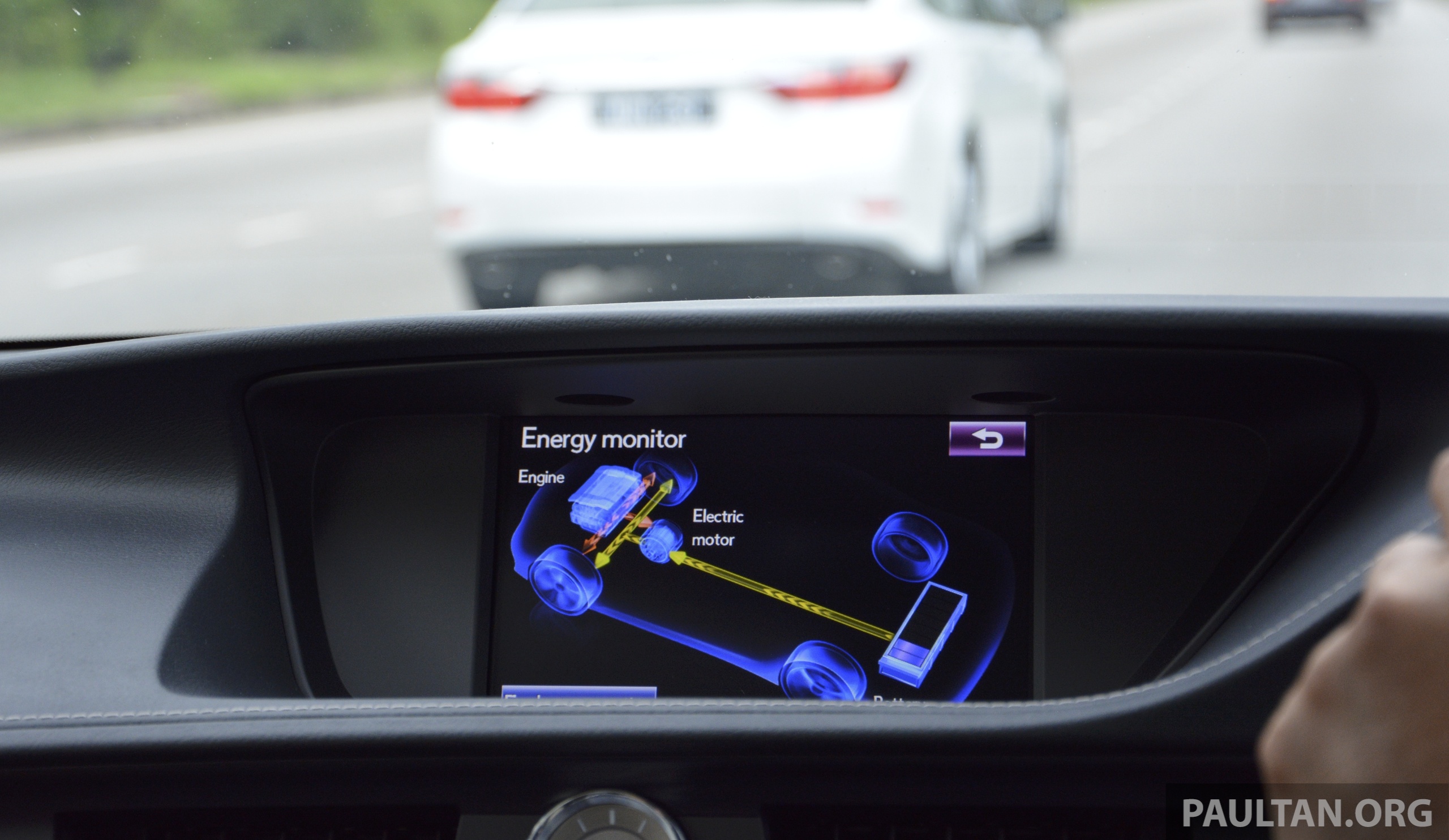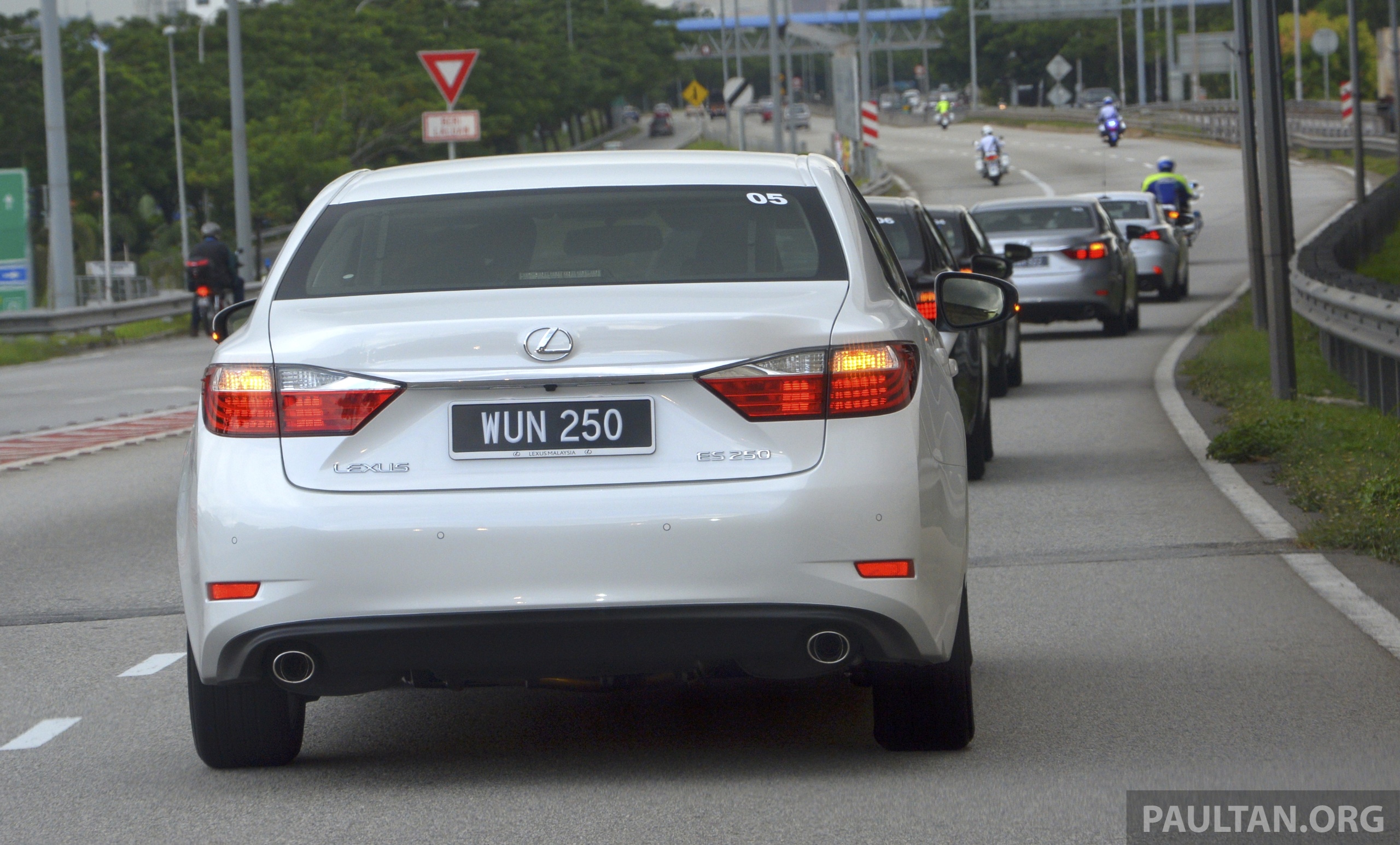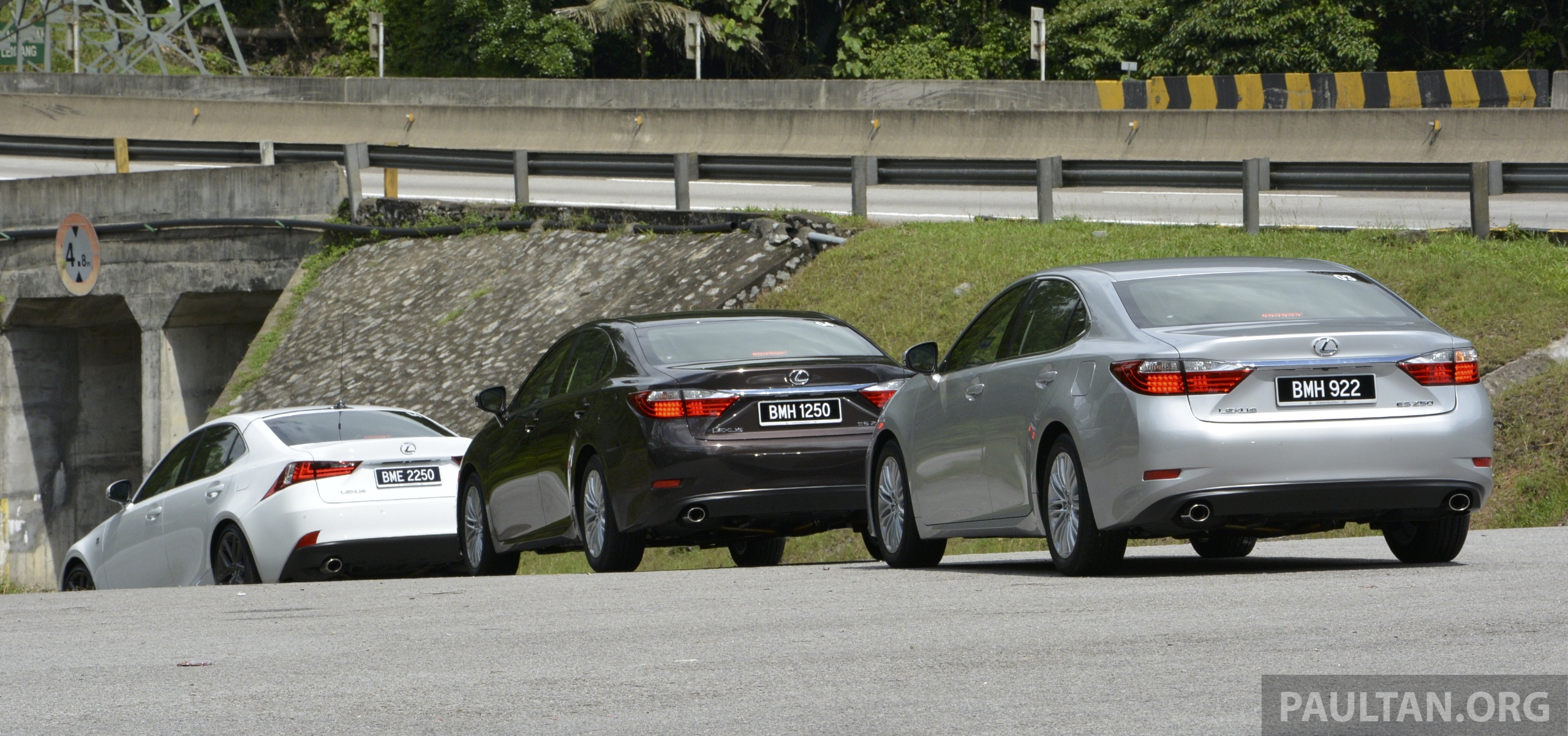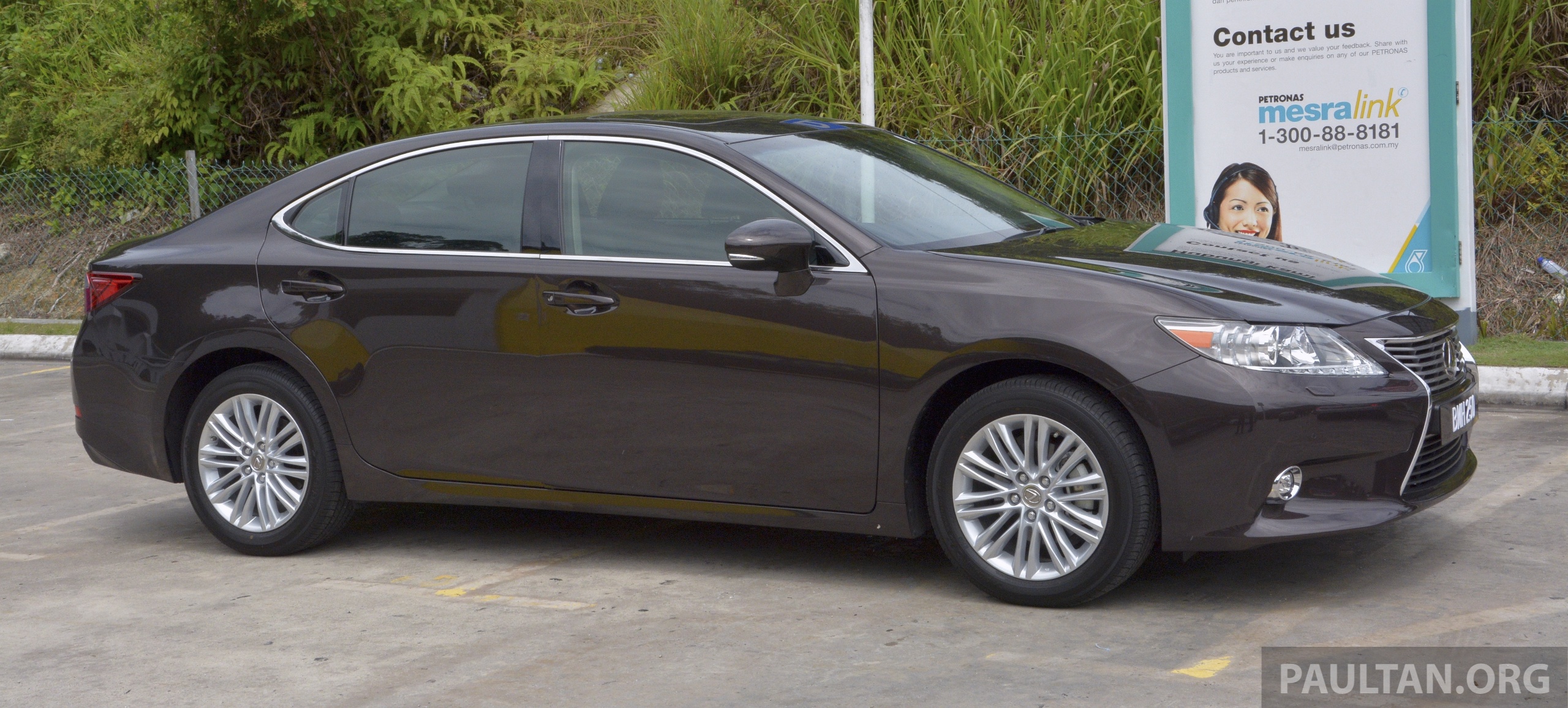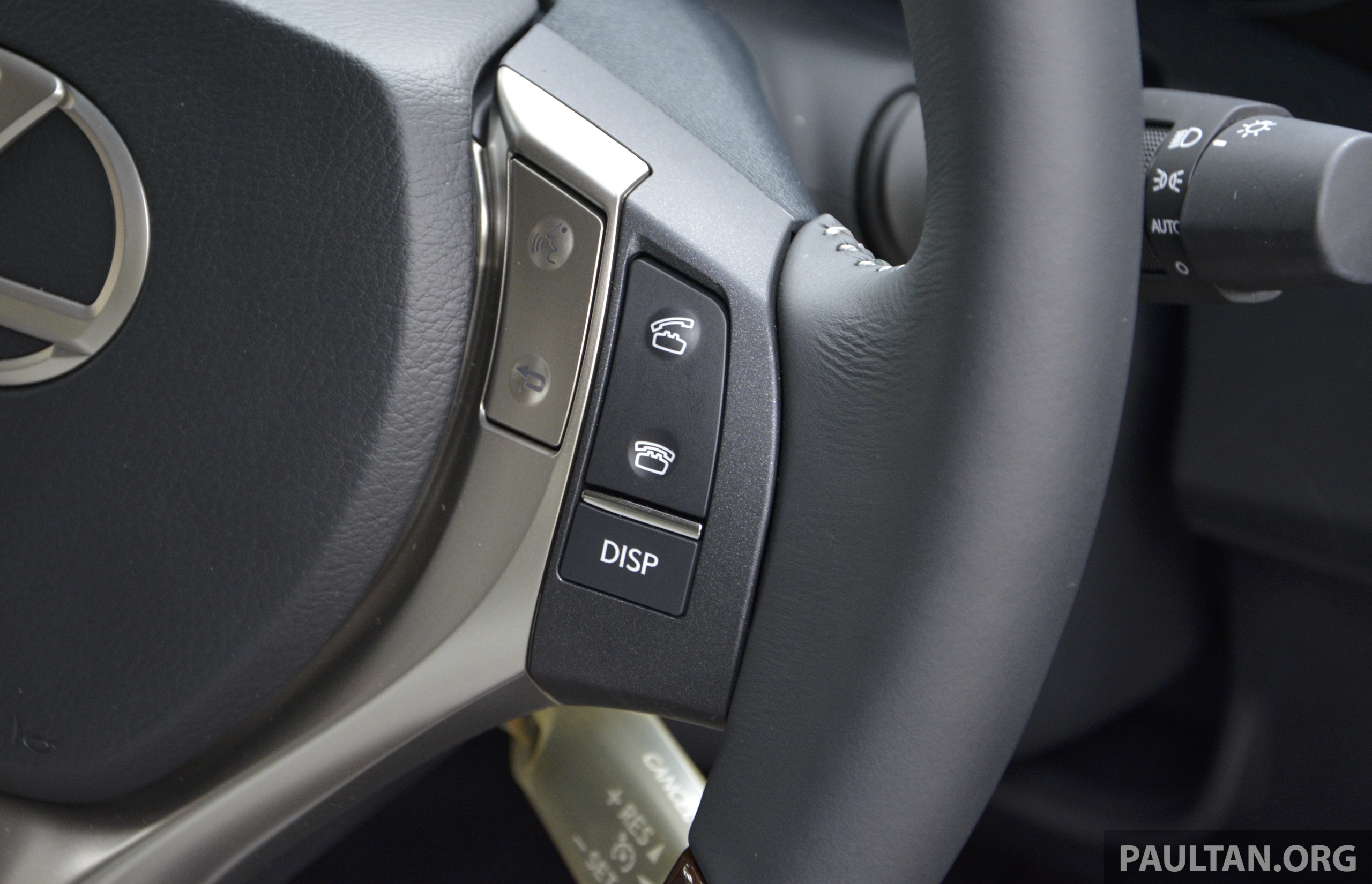Malaysian review: 2013 Lexus ES250 and ES300h sampled
#1
Lexus Champion
Thread Starter
A casual review of the Lexus ES from a Malaysian perspective
Review from Paul Tan Motoring News of Malaysia
http://paultan.org/2013/12/30/2013-lexus-es-driven/
Review from Paul Tan Motoring News of Malaysia
DRIVEN: 2013 Lexus ES 250 and 300h sampled
In Car Reviews, Cars, Lexus / By Anthony Lim / 30 December 2013 8:08 am
http://paultan.org/2013/12/30/2013-lexus-es-driven/
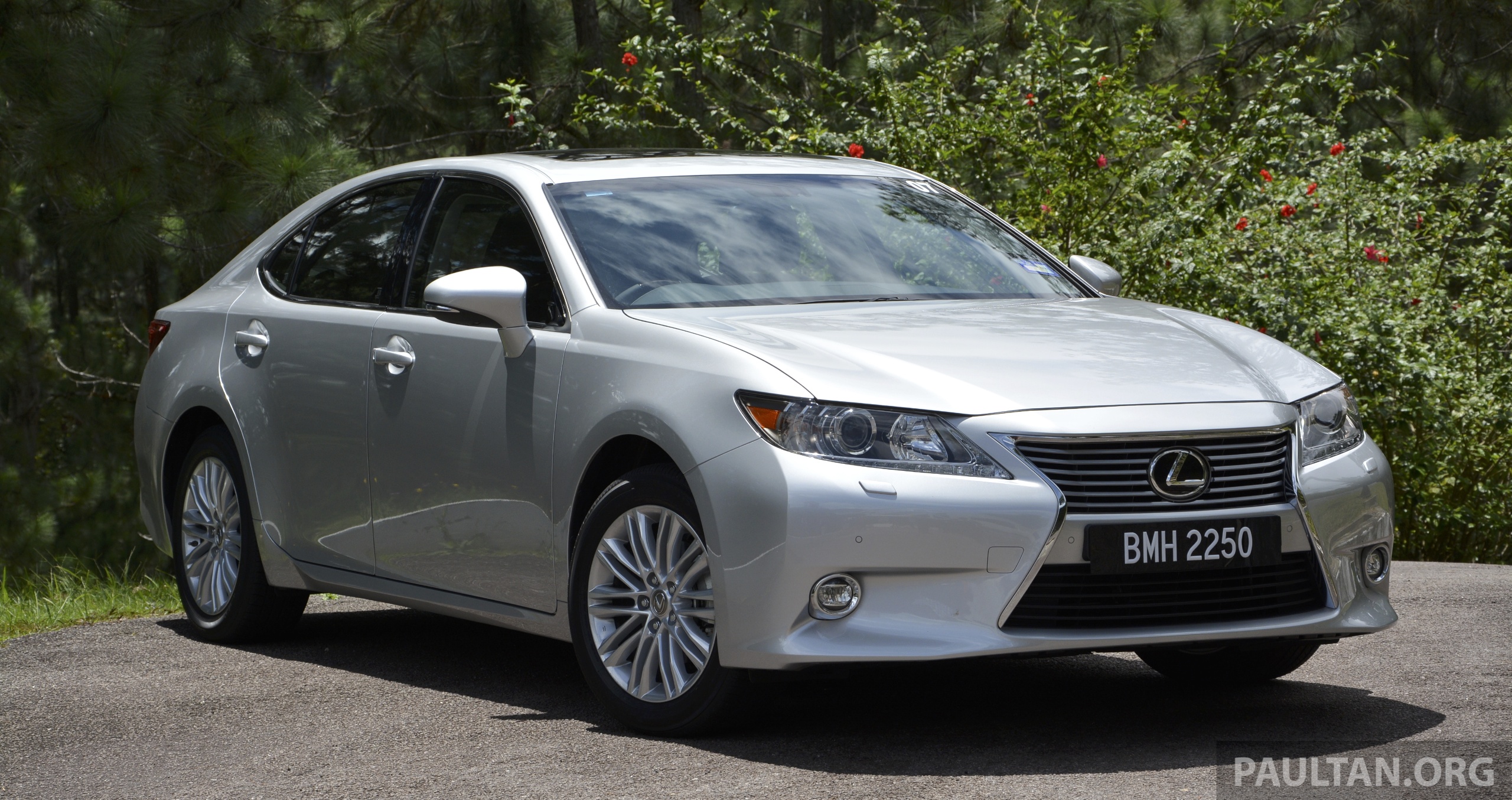
Things are usually a straight-laced affair for the Malaysian car buyer where segmentation is concerned. For sedans, once you get past the entry-level B and general C-segment there’s the D, categorically built along the lines of executive-badged stuff (Toyota Camry, Honda Accord, Nissan Teana, Mazda6 et al) before heading right into the luxury executive movement, in which the likes of the BMW 5 Series, Mercedes E-Class and Lexus GS reside.
Of course, there’s virtually nothing sandwiched in between that, at least nothing in terms of pricing or a corresponding sense of occasion. By that, I don’t mean loading up an executive sedan with gear and tagging it as premium, which is the usual path taken to offer a differentiation – a bigger lump and more mod cons does not a new animal make, well, not beyond making it mutton dressed as lamb.
Now, something straddling close to the premium offerings in fit and finish, maybe even size, with added snob appeal but without the associated price tag would be just the neat bit. Until now, there has been no such choice, but the arrival of the Lexus ES has altered that landscape.
The sixth-generation model opens up a new bridge between the two worlds, but depending on how you look at it, the ES can be viewed as an entry-level luxury sedan or a very high-end premium exec offering. The brigade thinking along ‘half-empty’ lines will undoubtedly look at it as a larger, better dressed Camry; Lexus, on the other hand, will tell you that it’s not a glorified XV50. So, which then? New-found fox in the box, or a sheep disguised in wolf’s clothing?
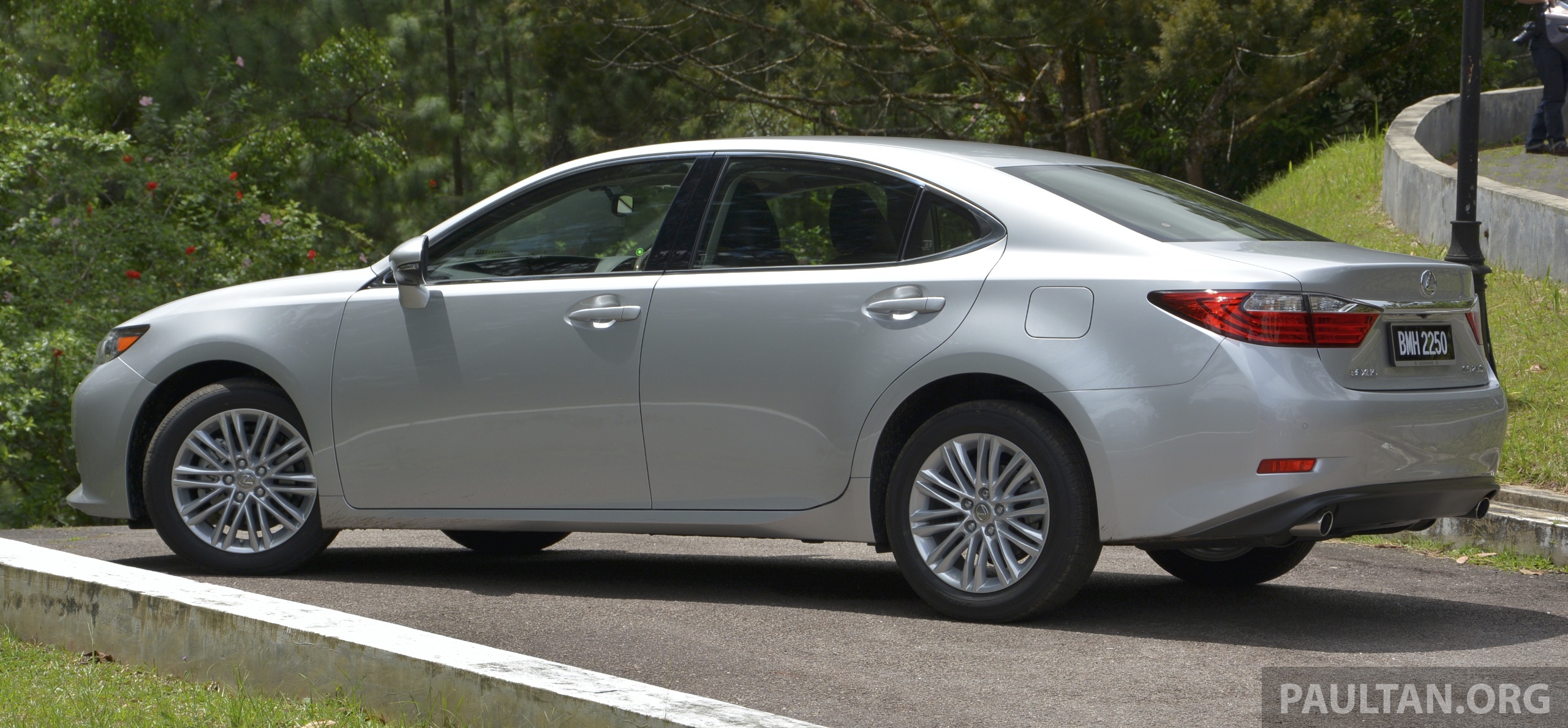
Before we answer that, a recap of the new boy, which made its official debut here in October. It slots in between the sporty IS and the GS executive sedan, and Malaysia is the first market in the region to premiere the right-hand drive version of the car, which moves away from the Camry underpinnings of the fifth-gen and now sits on a Toyota Avalon-based platform.
It measures in at 4,900 mm long, 1,820 mm wide and 1,450 mm tall, with a 2,820 mm-long wheelbase, and in terms of exterior numbers doesn’t size up much at all from the XV50 Camry, which is 4,825 mm long, 1,825 mm wide and 1,470 mm tall, with a 2,775 mm-long wheelbase.
Length-wise, this translates to 75 mm more in total length and a 45 mm longer wheelbase, hardly earth-shattering numbers. The visual suggestion offers more purchase – optically, the ES looks bigger to the eye, so the lines and disposition offer a neat illusion as to size.
It’s also a snazzier looker than the Camry, helped by the spindle grille-dressed front and design elements borrowed from its more upmarket sibling, the GS. There’s a less gilt-edged feel to the surfacing though, which is in line with not going over-the-top – as the company puts it, “luxury should be something that’s very subtle,” and so that’s the approach taken.
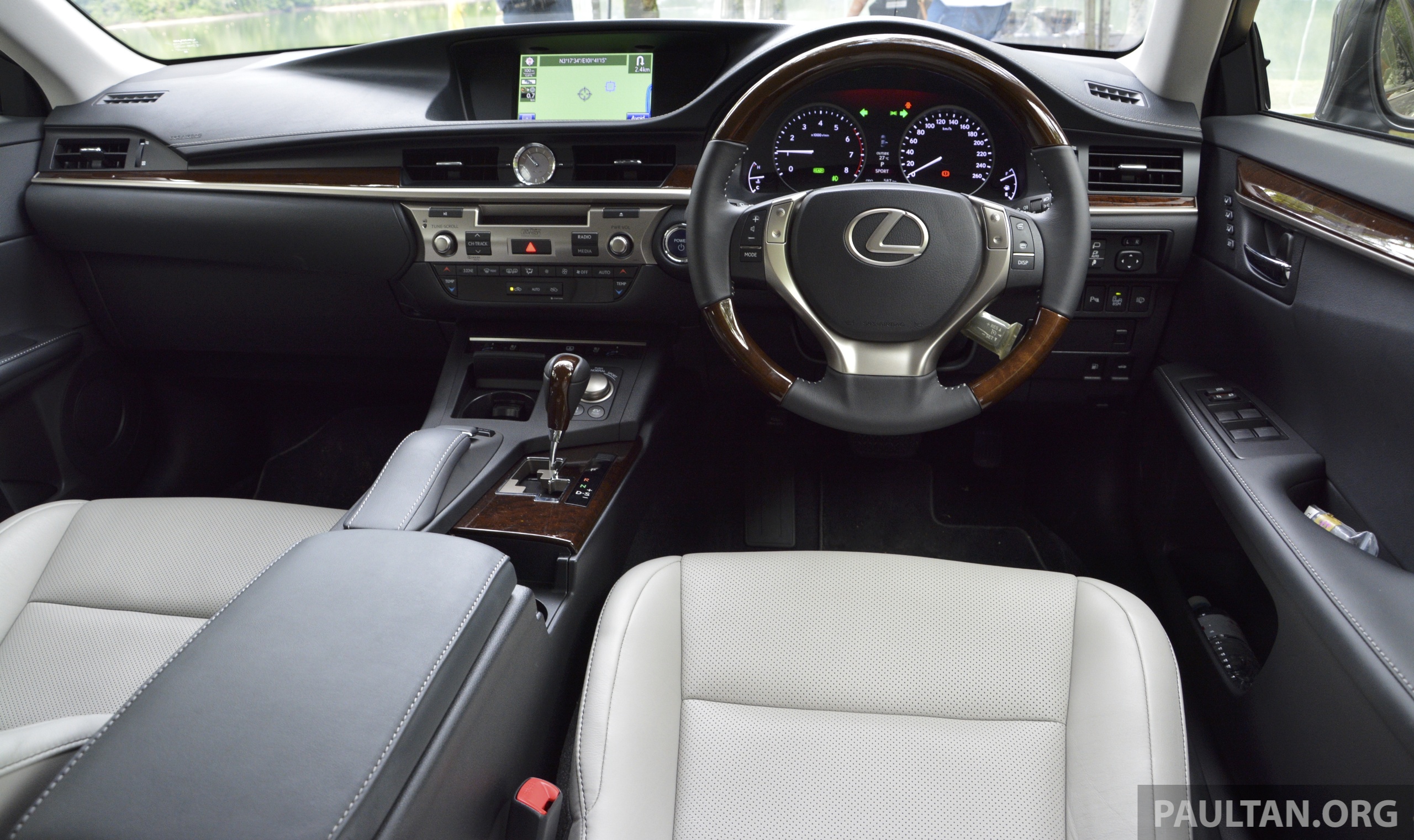
The interior naturally places emphasis on luxury – the dashboard fascia offers all the flavour of the GS, without the latter’s ticket price. Indeed, much is familiar, from the overall presentation of the layout – the GS’ 380 mm steering wheel, complete with wood-grain accents, makes its way on, as well as the clock right down to the second-gen Remote Touch Controller. The central Electro Multi-Vision Screen is smaller, at eight inches to the GS’s 12.3-inch unit, but retains the low-res feel of the latter. Serviceable, yes. Compelling, no.
Otherwise, everything shapes up as you’d expect it to be. The interior can be had in a choice of three shades, and the mix of colour schemes offers a clean, formal approach; in terms of texture and feel it takes things an anticipated few notches above that of the Camry, even if some items never quite shake off the plasticky feel.
In terms of trim levels, the ES 250 comes dressed with smooth leather seats, while the ES 250 Luxury and ES 300h adds on semi-aniline leather as well as a sat-nav system and manual side window sunshades.
Both ES 250 variants feature a Lexus Premium Audio eight-speaker, eight-channel Class D amplifier system, while the ES 300h gets a 12-channel, 15-speaker Mark Levinson sound system. Auto tri-zone air-con and 10-way power adjustment front seats are also on the kit list.



All three models wear 17-inch aluminium wheels and 215/55 tyres, but each gets a different wheel design – the ES 250 has a six twin-spoke wheel, while the ES 250 Luxury gets a ten twin-spoke unit, and the ES 300h features an aerodynamically optimised ten-spoke alloy.
As for safety kit, 10 airbags (including driver and front passenger knee as well as front and rear seat-mounted side and curtain airbags) VSC, traction control, EBD, a tyre pressure warning system and whiplash injury-lessening front seats are standard across the ES range.
Aside from the amplified premiumness, what’s really being touted with the ES is with the volumetric scope of the interior – the marketing hype even chooses to deem it brimming with ‘S-Class levels of space’, which in this case means a standard Mercedes S-Class, but let’s not let that get in the way of a good line.
In any case, that suggestion was enough to trigger a comparison of the ES’ interior space against that of a LWB S-Class, if only out of curiosity – you can read the observations in the accompanying article by Paul; we’ve also included a photo comparison with the Camry for perspective.



Numbers-wise, rear occupants in the ES get 953 mm of headroom, 1,392 mm of shoulder room, 1,367 mm of hip room and 1,015 mm of leg room – the last has been achieved by extending the wheelbase (over the fifth-gen ES) and the use of thinner and better sculptured front seat backs.
In use, there’s an improved perception of space over the Camry, and seat comfort on the back bench is good, even if seat angle and length could be better. A couple of things take away from some of the gloss, however – the rather low level of headroom clearance is one, and very low set front seats the other.
The scale of the space perspective from the rear seat is impressive, but the former tempers the range of acuity mostly to width and forward depth; in this regard, most of the premium exec level offerings actually better the ES. The latter, meanwhile, means that rear occupants can forget about tucking their feet underneath anywhere under the front seats. Better thigh relief comes to mind, especially with the low roofline and seat bench depth/angle being what it is.
A word about the boot, which offers a volume of 490 litres for the ES 250 and 425 litres in the case of the ES 300h. The hybrid’s is powered, and works a charm, smoothly and cleanly.


The same cannot be said for that on the ES 250 – the boot lid springs up when you manually lift and release it, but instead of coming up slowly to a gentle stop, it springs up forcefully, hits the end stop and bounces back down a fair degree before settling back at rest. If you’re in a rush and decide to lift the trunk and dive in to retrieve stuff, you run the risk of being clobbered on the head by it. You wouldn’t expect this on any car, let alone a Lexus.
On to the mechanicals, and the comparison with the Camry is yet again unavoidable – you keep steering into areas that bring up the subject. Of the three variants of the made-in-Japan ES available here, two use the same four-pot seen in the higher-end XV50.
Both baseline ES 250 and kitted-up ES 250 Luxury are powered by the familiar 2AR-FE 2.5 litre Dual VVT-i twin-cam four-cylinder engine offering 181 hp at 6,000 rpm and 235 Nm of torque at 4,100 rpm – the output figures are virtually identical, save a four Nm increase in torque over that found in the Camry.
Likewise, the choice of transmission – no fancy-schmancy eight-speed ‘box to be found here, with the familiar U760E six-speed Super ECT auto transmission with AI Shift transferring power to the wheels. As for performance specs, the ES 250 versions do the 0-100 km/h sprint in 9.8 seconds and reach a 207 km/h top speed.


The Lexus ES 300h, meanwhile, is equipped with a 2AR-FXE 2.5 litre single VVT-i twin-cam Atkinson cycle four-cylinder unit, with output numbers from the unit being 158 hp at 5,700 rpm and 213 Nm at 4,500 rpm. The lump is paired with a 105 kW electric motor that’s fed by a 650V nickel-metal hydride battery, and total combined output for the series-parallel hybrid adds up to 202 hp.
The partnering transmission is a P314 eCVT system, with the transaxle including two 650 volt AC motor/generators and a double set of planetary gears. In terms of performance, the ES 300h manages the 0-100 km/h dash in 8.5 seconds and tops out at 180 km/h. It adds a fourth drive mode, EV, to the three (Eco, Normal and Sport) seen in the ES 250 – EV operation is available up to 45 km/h.
Lexus says that the new ES boasts a body that’s lighter – and stiffer – than its predecessor, which was never sold in RHD form. The car is also quieter, with significant engineering done on reducing overall NVH levels – an assortment of sound insulating materials finds its way on to the car, and the suppression list also includes layered acoustic glass for the front door windows and windscreen as well as specially-developed Yokohama dB decibel E70 rubbers that equip the model range.
Elsewhere, there’s a reworked suspension designed to give the car a balance of handling stability and ride comfort. The front geometry features counter wound suspension springs for increased straight-line stability and a reduced compression effect on steering, while a new dual-link rear system offers improved control as well as aids straight-line stability.



At the regional media drive for the car, which took place in Kuala Lumpur, the Malaysian media plied a completely different route with the ES 250 Luxury and ES 300h mules than the rest of the ASEAN press. While the other contingents did their drive in a more sedate fashion, ambling along primarily in the city and very much in a straight line on highways, our route took us out from the city along the Karak Expressway up towards Awana before returning to KL in convoy style.
In the brief drive out of town, the ES showed impeccable character, refined and cultured being terms that come to mind. The ride is a bit firm at low-level speeds, but compliance is good once you get the car into the midrange on and cruising. In a straight line, that is.
Bombing along the Karak showed things up – in sweepers at speed, ruts in the road called attention on how soft the rear is sprung in terms of suspension rebound, and the car responds to less than smooth input by showing up a rear that borders on skittish, handling-wise. With significant time spent being tossed around like a salad at the back, these observations were rather noticeable.
The ES features an electrical power steering that the automaker says offers a smoother, more accurate feel with greater feedback. Like that on the GS, it’s far from the final word in feel (dull would be an apt description), but no arguments as to the smoothness.


As for speed, it isn’t all that fast, especially evident during moments of push, but the car places well enough. Given that ES owners aren’t likely to subject the car to countless switchbacks at speed, the overall behaviour and workings of the steering are adequate.
All this with the ES 250 Luxury – moving on to the ES 300h shifted the focus. The hybrid is heavier (1,705 kg to the ES 250’s 1,615 kg), and you feel it, its balance into corners lumpier and overall feel, vapid. This is offset by its improved pull off the line and having better brakes.
The ES is no sports saloon, and trying to show it off as one may not have been quite the right thing to attempt. More so the hybrid – at full pelt, the Atkinson-cycle clatter is uninvitingly audible and, more importantly, the CVT feels soggy in response and lacking in zip. This is a drivetrain that’s been geared for getting one from A-to-B in relaxed, light-footed fashion, and trying otherwise just shows it up as unruly and unwilling.
So, if all there was to be gleaned of the car was that from the preview drive alone, then the short of it would be that the ES has bundles of interior space and ample levels of luxury, but far from hot when pushed, be it from a driver or rear passenger perspective.

That, however, would be viewing it all wrong. The course certainly stretched the ES’ legs, but not in terrain that would be anywhere close to what it would ply on an everyday basis. A follow-up run with it (the ES 250 Luxury) when it came in for its appearance on Episode #5 of the Driven Web Series managed to put it in more familiar ground and offer a truer picture of its abilities.
In unhurried fashion over a couple of days, the ES proved very pleasant – it was respectably quiet (more obvious from the front seat than the rear) and in its element ambling along in town conditions and cruising on the highway. By the time it was due back, I’d actually grown fond of its easy-going character.
Indeed, the firmish aspect to the ride at low speeds and super springy Jack-in-a-box rear boot lid aside, there’s very little to complain about. The lowish headroom notwithstanding, the rear will work for all but the fussiest, and the front is no less plush a place to be in.

Approached as a chauffeur-driven limo (which it will be, nine times out of 10), it represents a step up from the likes of a Camry as far as considerations of space and luxury go. Yes, you can no doubt view it as a glorified Camry, or you could look at it as a move up close to the usual luxury segment without forking out the dosh – if anything, buyers are likely to opt for the ES 250 Luxury variant over the baseline RM259,800 ES 250 for just RM20k more.
Things are less clear cut with the ES 300h – at RM353k, the car moves into established price categories (to wit, the Mercedes E 200 Avantgarde is priced at RM367k, the BMW 520i at RM370k and the GS 250, at RM366k), but hey, there’s the advantage of ‘S-Class levels of space’ in there, so it goes, and you get all the expected luxe associated with the segment. Just remember to keep the gymnastic aspirations at home with this one.
In Car Reviews, Cars, Lexus / By Anthony Lim / 30 December 2013 8:08 am
http://paultan.org/2013/12/30/2013-lexus-es-driven/

Things are usually a straight-laced affair for the Malaysian car buyer where segmentation is concerned. For sedans, once you get past the entry-level B and general C-segment there’s the D, categorically built along the lines of executive-badged stuff (Toyota Camry, Honda Accord, Nissan Teana, Mazda6 et al) before heading right into the luxury executive movement, in which the likes of the BMW 5 Series, Mercedes E-Class and Lexus GS reside.
Of course, there’s virtually nothing sandwiched in between that, at least nothing in terms of pricing or a corresponding sense of occasion. By that, I don’t mean loading up an executive sedan with gear and tagging it as premium, which is the usual path taken to offer a differentiation – a bigger lump and more mod cons does not a new animal make, well, not beyond making it mutton dressed as lamb.
Now, something straddling close to the premium offerings in fit and finish, maybe even size, with added snob appeal but without the associated price tag would be just the neat bit. Until now, there has been no such choice, but the arrival of the Lexus ES has altered that landscape.
The sixth-generation model opens up a new bridge between the two worlds, but depending on how you look at it, the ES can be viewed as an entry-level luxury sedan or a very high-end premium exec offering. The brigade thinking along ‘half-empty’ lines will undoubtedly look at it as a larger, better dressed Camry; Lexus, on the other hand, will tell you that it’s not a glorified XV50. So, which then? New-found fox in the box, or a sheep disguised in wolf’s clothing?

Before we answer that, a recap of the new boy, which made its official debut here in October. It slots in between the sporty IS and the GS executive sedan, and Malaysia is the first market in the region to premiere the right-hand drive version of the car, which moves away from the Camry underpinnings of the fifth-gen and now sits on a Toyota Avalon-based platform.
It measures in at 4,900 mm long, 1,820 mm wide and 1,450 mm tall, with a 2,820 mm-long wheelbase, and in terms of exterior numbers doesn’t size up much at all from the XV50 Camry, which is 4,825 mm long, 1,825 mm wide and 1,470 mm tall, with a 2,775 mm-long wheelbase.
Length-wise, this translates to 75 mm more in total length and a 45 mm longer wheelbase, hardly earth-shattering numbers. The visual suggestion offers more purchase – optically, the ES looks bigger to the eye, so the lines and disposition offer a neat illusion as to size.
It’s also a snazzier looker than the Camry, helped by the spindle grille-dressed front and design elements borrowed from its more upmarket sibling, the GS. There’s a less gilt-edged feel to the surfacing though, which is in line with not going over-the-top – as the company puts it, “luxury should be something that’s very subtle,” and so that’s the approach taken.

The interior naturally places emphasis on luxury – the dashboard fascia offers all the flavour of the GS, without the latter’s ticket price. Indeed, much is familiar, from the overall presentation of the layout – the GS’ 380 mm steering wheel, complete with wood-grain accents, makes its way on, as well as the clock right down to the second-gen Remote Touch Controller. The central Electro Multi-Vision Screen is smaller, at eight inches to the GS’s 12.3-inch unit, but retains the low-res feel of the latter. Serviceable, yes. Compelling, no.
Otherwise, everything shapes up as you’d expect it to be. The interior can be had in a choice of three shades, and the mix of colour schemes offers a clean, formal approach; in terms of texture and feel it takes things an anticipated few notches above that of the Camry, even if some items never quite shake off the plasticky feel.
In terms of trim levels, the ES 250 comes dressed with smooth leather seats, while the ES 250 Luxury and ES 300h adds on semi-aniline leather as well as a sat-nav system and manual side window sunshades.
Both ES 250 variants feature a Lexus Premium Audio eight-speaker, eight-channel Class D amplifier system, while the ES 300h gets a 12-channel, 15-speaker Mark Levinson sound system. Auto tri-zone air-con and 10-way power adjustment front seats are also on the kit list.



All three models wear 17-inch aluminium wheels and 215/55 tyres, but each gets a different wheel design – the ES 250 has a six twin-spoke wheel, while the ES 250 Luxury gets a ten twin-spoke unit, and the ES 300h features an aerodynamically optimised ten-spoke alloy.
As for safety kit, 10 airbags (including driver and front passenger knee as well as front and rear seat-mounted side and curtain airbags) VSC, traction control, EBD, a tyre pressure warning system and whiplash injury-lessening front seats are standard across the ES range.
Aside from the amplified premiumness, what’s really being touted with the ES is with the volumetric scope of the interior – the marketing hype even chooses to deem it brimming with ‘S-Class levels of space’, which in this case means a standard Mercedes S-Class, but let’s not let that get in the way of a good line.
In any case, that suggestion was enough to trigger a comparison of the ES’ interior space against that of a LWB S-Class, if only out of curiosity – you can read the observations in the accompanying article by Paul; we’ve also included a photo comparison with the Camry for perspective.



Numbers-wise, rear occupants in the ES get 953 mm of headroom, 1,392 mm of shoulder room, 1,367 mm of hip room and 1,015 mm of leg room – the last has been achieved by extending the wheelbase (over the fifth-gen ES) and the use of thinner and better sculptured front seat backs.
In use, there’s an improved perception of space over the Camry, and seat comfort on the back bench is good, even if seat angle and length could be better. A couple of things take away from some of the gloss, however – the rather low level of headroom clearance is one, and very low set front seats the other.
The scale of the space perspective from the rear seat is impressive, but the former tempers the range of acuity mostly to width and forward depth; in this regard, most of the premium exec level offerings actually better the ES. The latter, meanwhile, means that rear occupants can forget about tucking their feet underneath anywhere under the front seats. Better thigh relief comes to mind, especially with the low roofline and seat bench depth/angle being what it is.
A word about the boot, which offers a volume of 490 litres for the ES 250 and 425 litres in the case of the ES 300h. The hybrid’s is powered, and works a charm, smoothly and cleanly.


The same cannot be said for that on the ES 250 – the boot lid springs up when you manually lift and release it, but instead of coming up slowly to a gentle stop, it springs up forcefully, hits the end stop and bounces back down a fair degree before settling back at rest. If you’re in a rush and decide to lift the trunk and dive in to retrieve stuff, you run the risk of being clobbered on the head by it. You wouldn’t expect this on any car, let alone a Lexus.
On to the mechanicals, and the comparison with the Camry is yet again unavoidable – you keep steering into areas that bring up the subject. Of the three variants of the made-in-Japan ES available here, two use the same four-pot seen in the higher-end XV50.
Both baseline ES 250 and kitted-up ES 250 Luxury are powered by the familiar 2AR-FE 2.5 litre Dual VVT-i twin-cam four-cylinder engine offering 181 hp at 6,000 rpm and 235 Nm of torque at 4,100 rpm – the output figures are virtually identical, save a four Nm increase in torque over that found in the Camry.
Likewise, the choice of transmission – no fancy-schmancy eight-speed ‘box to be found here, with the familiar U760E six-speed Super ECT auto transmission with AI Shift transferring power to the wheels. As for performance specs, the ES 250 versions do the 0-100 km/h sprint in 9.8 seconds and reach a 207 km/h top speed.


The Lexus ES 300h, meanwhile, is equipped with a 2AR-FXE 2.5 litre single VVT-i twin-cam Atkinson cycle four-cylinder unit, with output numbers from the unit being 158 hp at 5,700 rpm and 213 Nm at 4,500 rpm. The lump is paired with a 105 kW electric motor that’s fed by a 650V nickel-metal hydride battery, and total combined output for the series-parallel hybrid adds up to 202 hp.
The partnering transmission is a P314 eCVT system, with the transaxle including two 650 volt AC motor/generators and a double set of planetary gears. In terms of performance, the ES 300h manages the 0-100 km/h dash in 8.5 seconds and tops out at 180 km/h. It adds a fourth drive mode, EV, to the three (Eco, Normal and Sport) seen in the ES 250 – EV operation is available up to 45 km/h.
Lexus says that the new ES boasts a body that’s lighter – and stiffer – than its predecessor, which was never sold in RHD form. The car is also quieter, with significant engineering done on reducing overall NVH levels – an assortment of sound insulating materials finds its way on to the car, and the suppression list also includes layered acoustic glass for the front door windows and windscreen as well as specially-developed Yokohama dB decibel E70 rubbers that equip the model range.
Elsewhere, there’s a reworked suspension designed to give the car a balance of handling stability and ride comfort. The front geometry features counter wound suspension springs for increased straight-line stability and a reduced compression effect on steering, while a new dual-link rear system offers improved control as well as aids straight-line stability.



At the regional media drive for the car, which took place in Kuala Lumpur, the Malaysian media plied a completely different route with the ES 250 Luxury and ES 300h mules than the rest of the ASEAN press. While the other contingents did their drive in a more sedate fashion, ambling along primarily in the city and very much in a straight line on highways, our route took us out from the city along the Karak Expressway up towards Awana before returning to KL in convoy style.
In the brief drive out of town, the ES showed impeccable character, refined and cultured being terms that come to mind. The ride is a bit firm at low-level speeds, but compliance is good once you get the car into the midrange on and cruising. In a straight line, that is.
Bombing along the Karak showed things up – in sweepers at speed, ruts in the road called attention on how soft the rear is sprung in terms of suspension rebound, and the car responds to less than smooth input by showing up a rear that borders on skittish, handling-wise. With significant time spent being tossed around like a salad at the back, these observations were rather noticeable.
The ES features an electrical power steering that the automaker says offers a smoother, more accurate feel with greater feedback. Like that on the GS, it’s far from the final word in feel (dull would be an apt description), but no arguments as to the smoothness.


As for speed, it isn’t all that fast, especially evident during moments of push, but the car places well enough. Given that ES owners aren’t likely to subject the car to countless switchbacks at speed, the overall behaviour and workings of the steering are adequate.
All this with the ES 250 Luxury – moving on to the ES 300h shifted the focus. The hybrid is heavier (1,705 kg to the ES 250’s 1,615 kg), and you feel it, its balance into corners lumpier and overall feel, vapid. This is offset by its improved pull off the line and having better brakes.
The ES is no sports saloon, and trying to show it off as one may not have been quite the right thing to attempt. More so the hybrid – at full pelt, the Atkinson-cycle clatter is uninvitingly audible and, more importantly, the CVT feels soggy in response and lacking in zip. This is a drivetrain that’s been geared for getting one from A-to-B in relaxed, light-footed fashion, and trying otherwise just shows it up as unruly and unwilling.
So, if all there was to be gleaned of the car was that from the preview drive alone, then the short of it would be that the ES has bundles of interior space and ample levels of luxury, but far from hot when pushed, be it from a driver or rear passenger perspective.

That, however, would be viewing it all wrong. The course certainly stretched the ES’ legs, but not in terrain that would be anywhere close to what it would ply on an everyday basis. A follow-up run with it (the ES 250 Luxury) when it came in for its appearance on Episode #5 of the Driven Web Series managed to put it in more familiar ground and offer a truer picture of its abilities.
In unhurried fashion over a couple of days, the ES proved very pleasant – it was respectably quiet (more obvious from the front seat than the rear) and in its element ambling along in town conditions and cruising on the highway. By the time it was due back, I’d actually grown fond of its easy-going character.
Indeed, the firmish aspect to the ride at low speeds and super springy Jack-in-a-box rear boot lid aside, there’s very little to complain about. The lowish headroom notwithstanding, the rear will work for all but the fussiest, and the front is no less plush a place to be in.

Approached as a chauffeur-driven limo (which it will be, nine times out of 10), it represents a step up from the likes of a Camry as far as considerations of space and luxury go. Yes, you can no doubt view it as a glorified Camry, or you could look at it as a move up close to the usual luxury segment without forking out the dosh – if anything, buyers are likely to opt for the ES 250 Luxury variant over the baseline RM259,800 ES 250 for just RM20k more.
Things are less clear cut with the ES 300h – at RM353k, the car moves into established price categories (to wit, the Mercedes E 200 Avantgarde is priced at RM367k, the BMW 520i at RM370k and the GS 250, at RM366k), but hey, there’s the advantage of ‘S-Class levels of space’ in there, so it goes, and you get all the expected luxe associated with the segment. Just remember to keep the gymnastic aspirations at home with this one.
Last edited by Blackraven; 10-12-14 at 02:17 PM.
#7
Lead Lap
There may well be useful information in the review, but do you have any idea how much bandwidth you are using with all of the pictures? And, for those who don't have a 100 megabit internet connection, they might as well go out and get a sandwich while they are waiting for the post to completely load.
Trending Topics
#8
No problem with my gigabit connection.  I wish the states models had the options of expanded wood finishes, power folding mirrors, headlight washers and rear seat controls. I guess they don't get the panoramic roof, though.
I wish the states models had the options of expanded wood finishes, power folding mirrors, headlight washers and rear seat controls. I guess they don't get the panoramic roof, though. 
 I wish the states models had the options of expanded wood finishes, power folding mirrors, headlight washers and rear seat controls. I guess they don't get the panoramic roof, though.
I wish the states models had the options of expanded wood finishes, power folding mirrors, headlight washers and rear seat controls. I guess they don't get the panoramic roof, though. 
#9
Lexus Test Driver
Slightly inconsiderate post given the huge number of huge photos attached. It took me forever to load the page on my phone.
Anyway, Asian Lexus importers have a nasty habit of nickle-and-diming buyers. Stuff that would be considered standard in the US or Australia is optional here. It's a good thing you don't have that awful grayscale screen as an option
Anyway, Asian Lexus importers have a nasty habit of nickle-and-diming buyers. Stuff that would be considered standard in the US or Australia is optional here. It's a good thing you don't have that awful grayscale screen as an option

Thread
Thread Starter
Forum
Replies
Last Post


